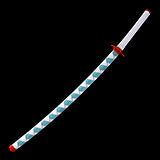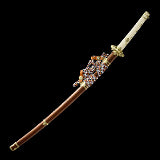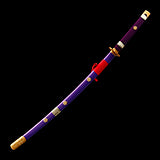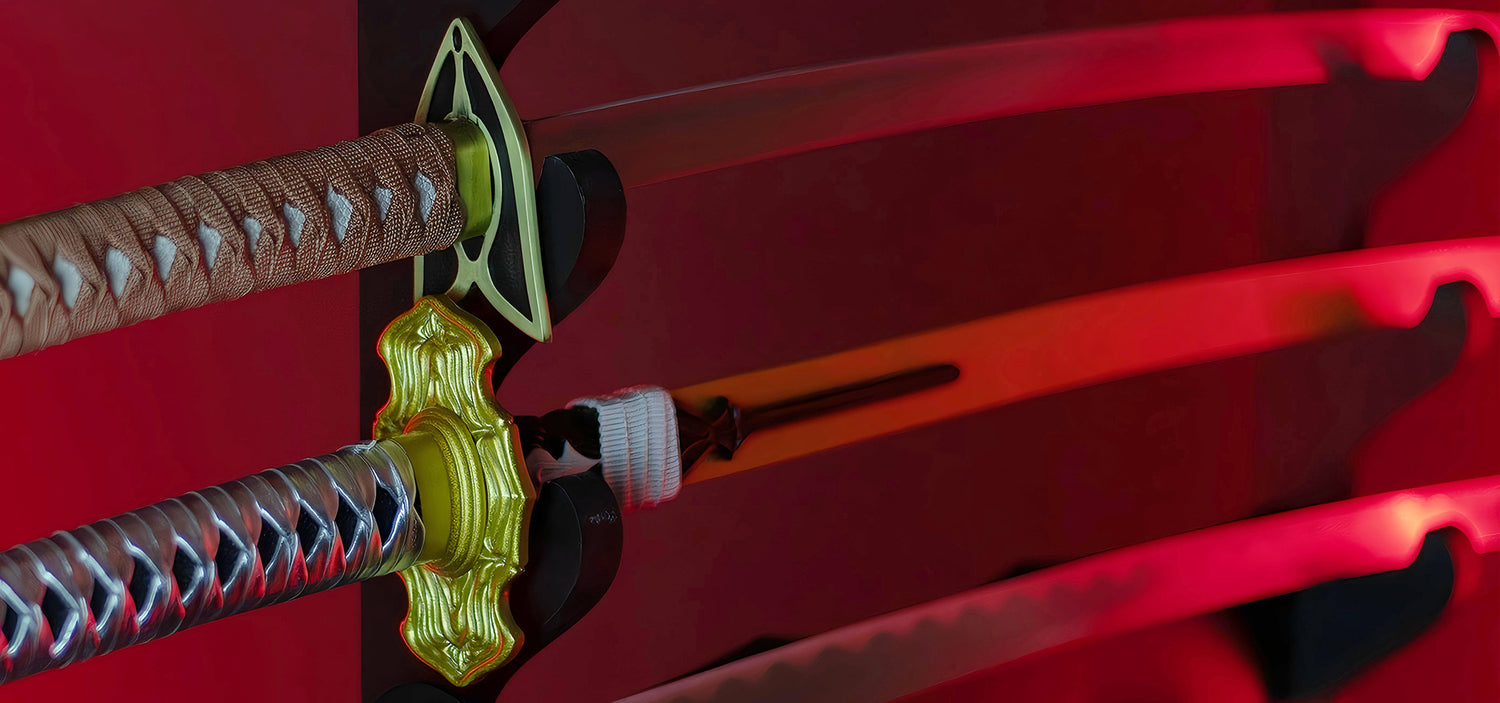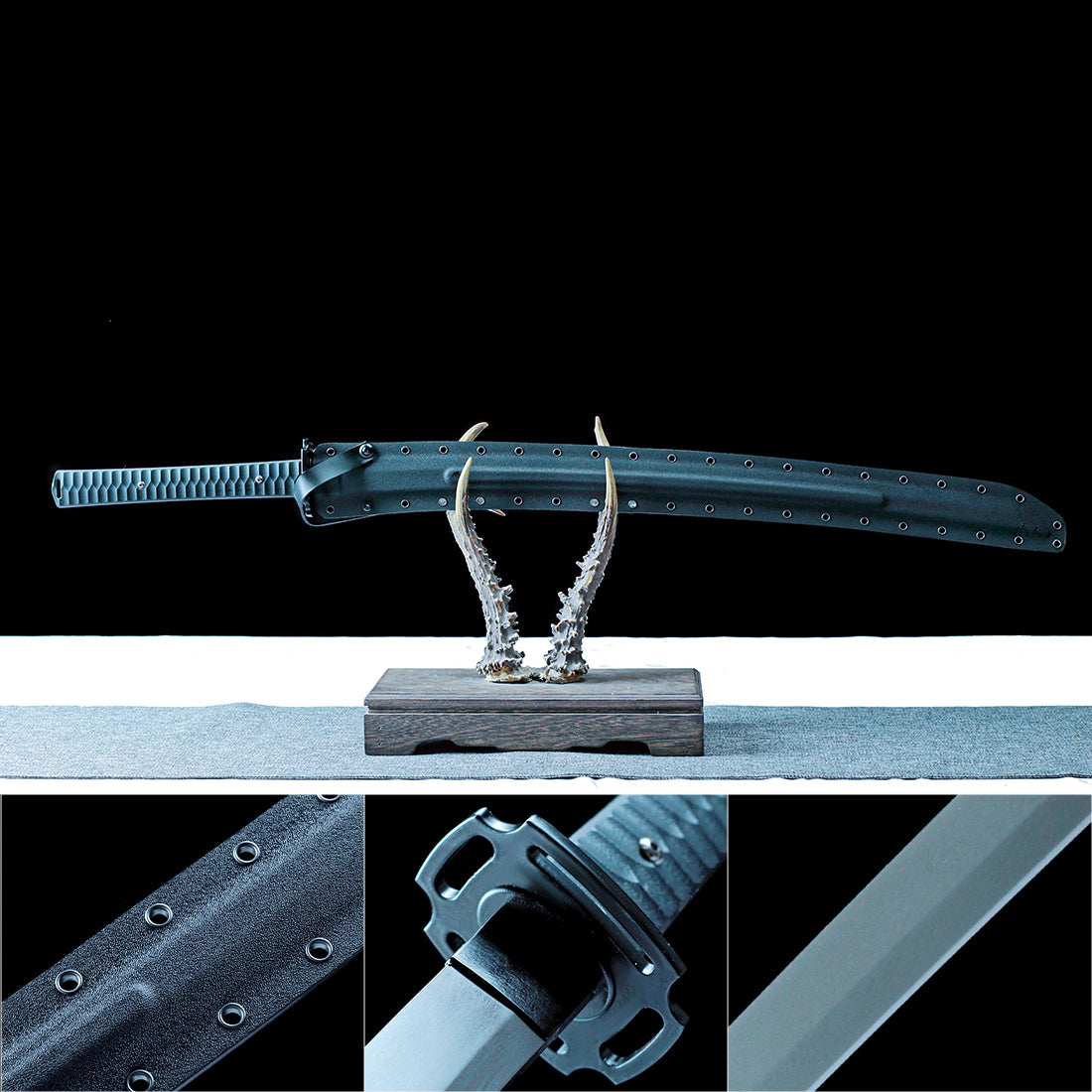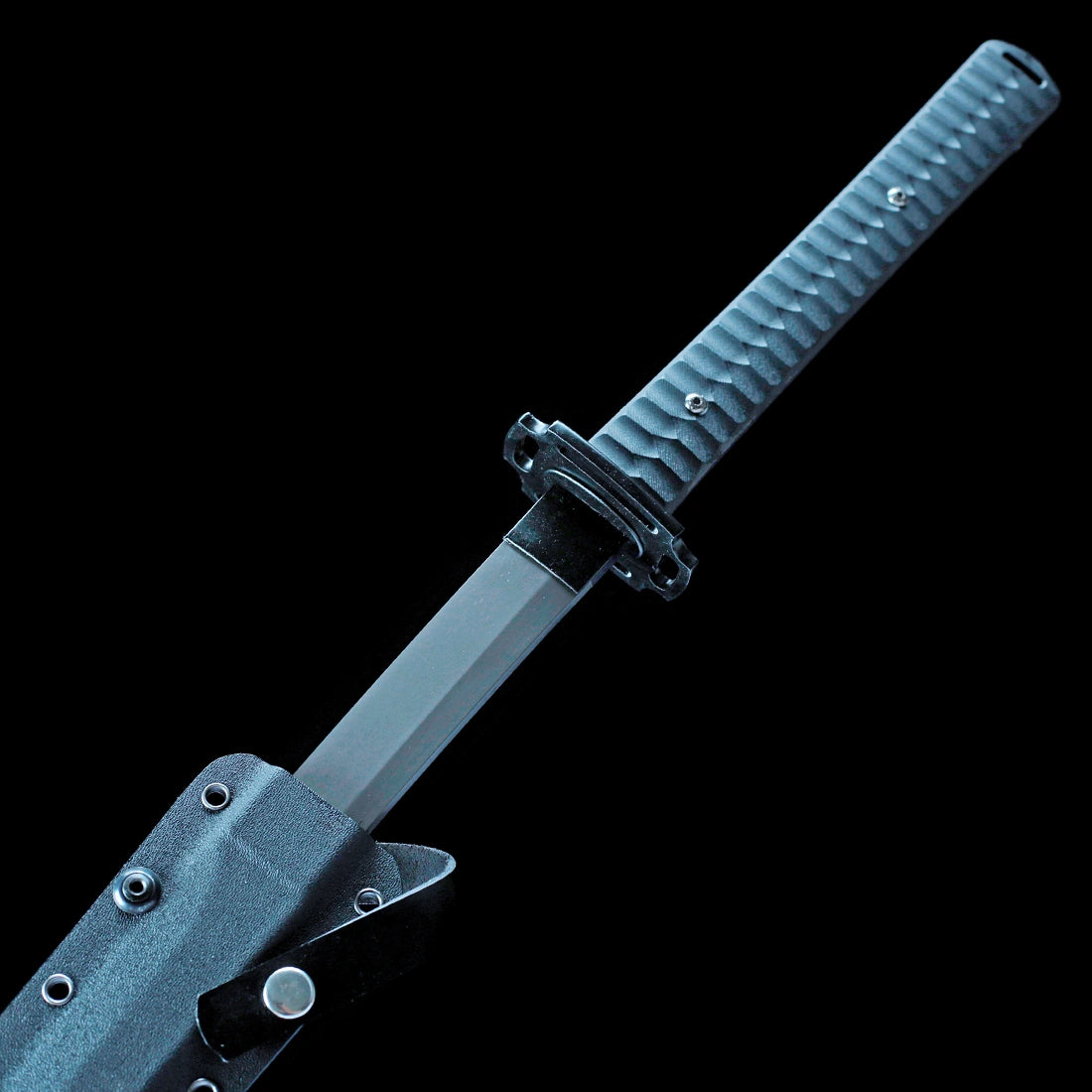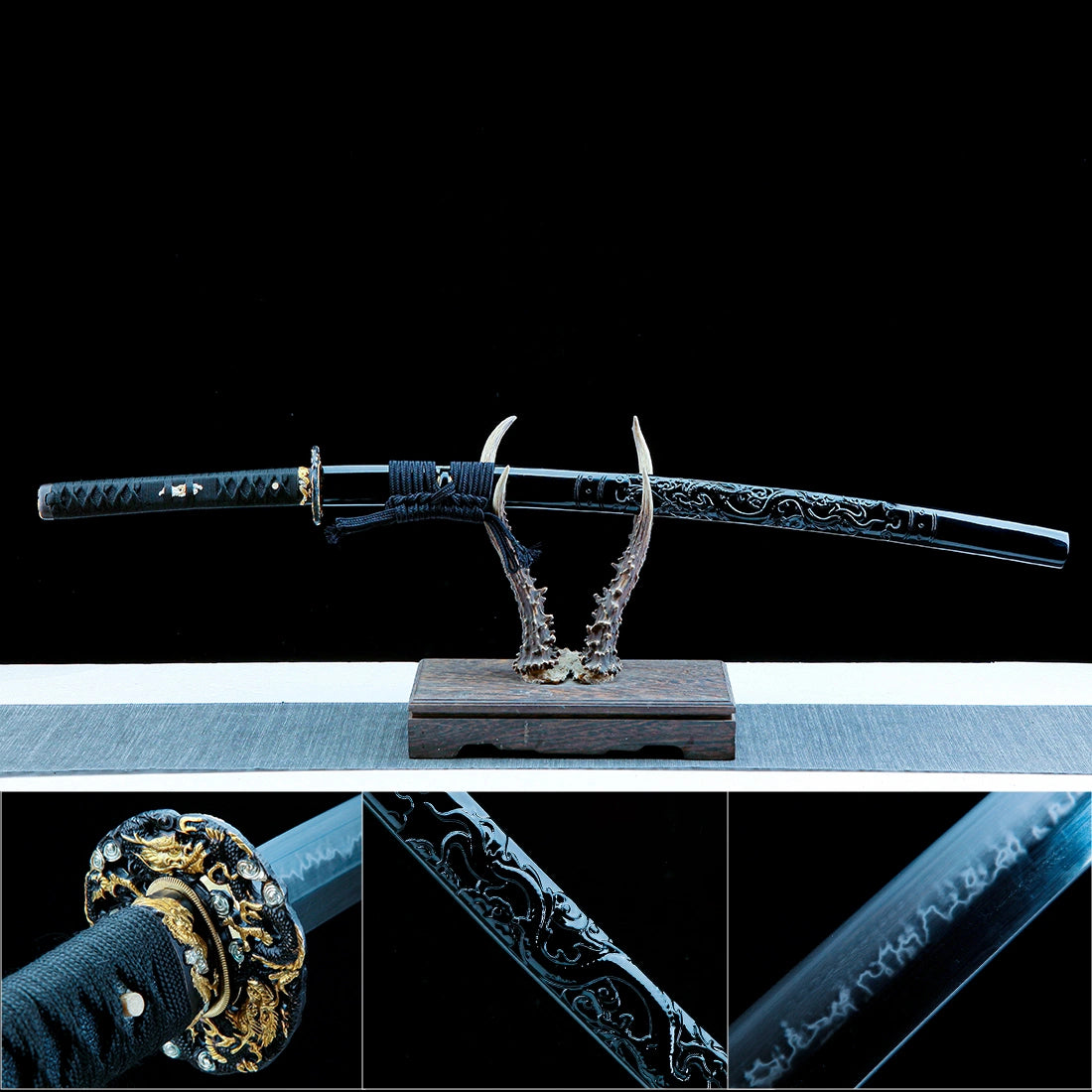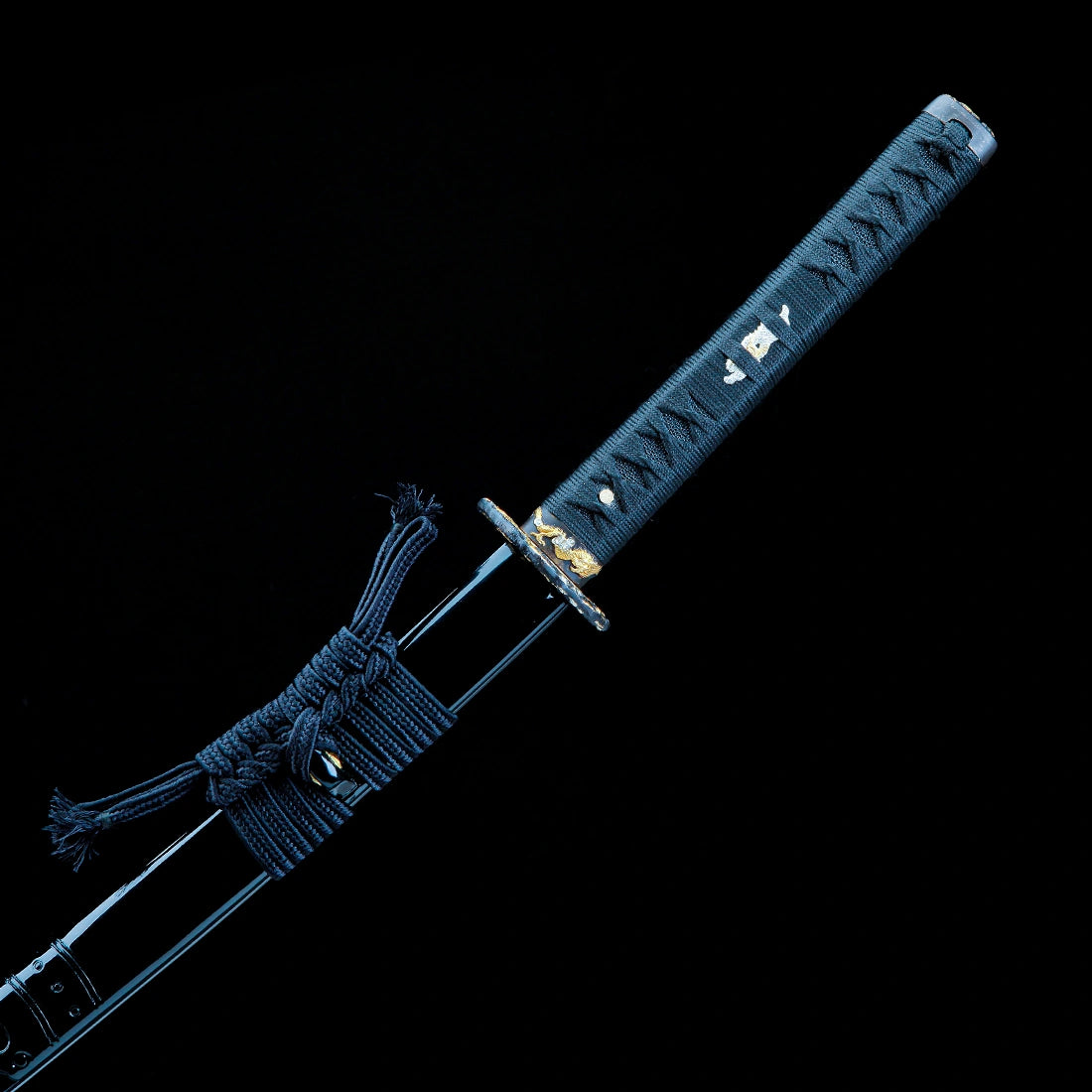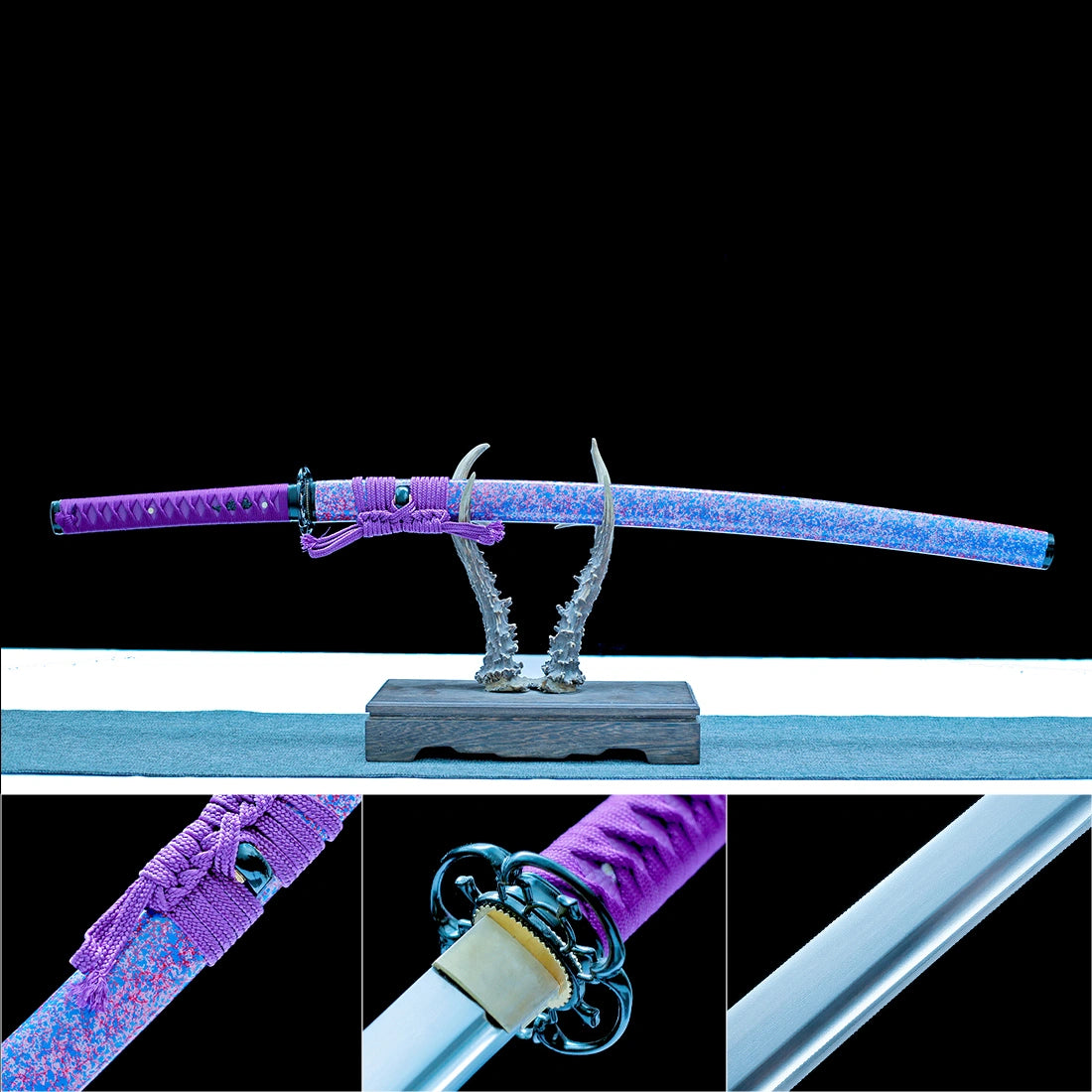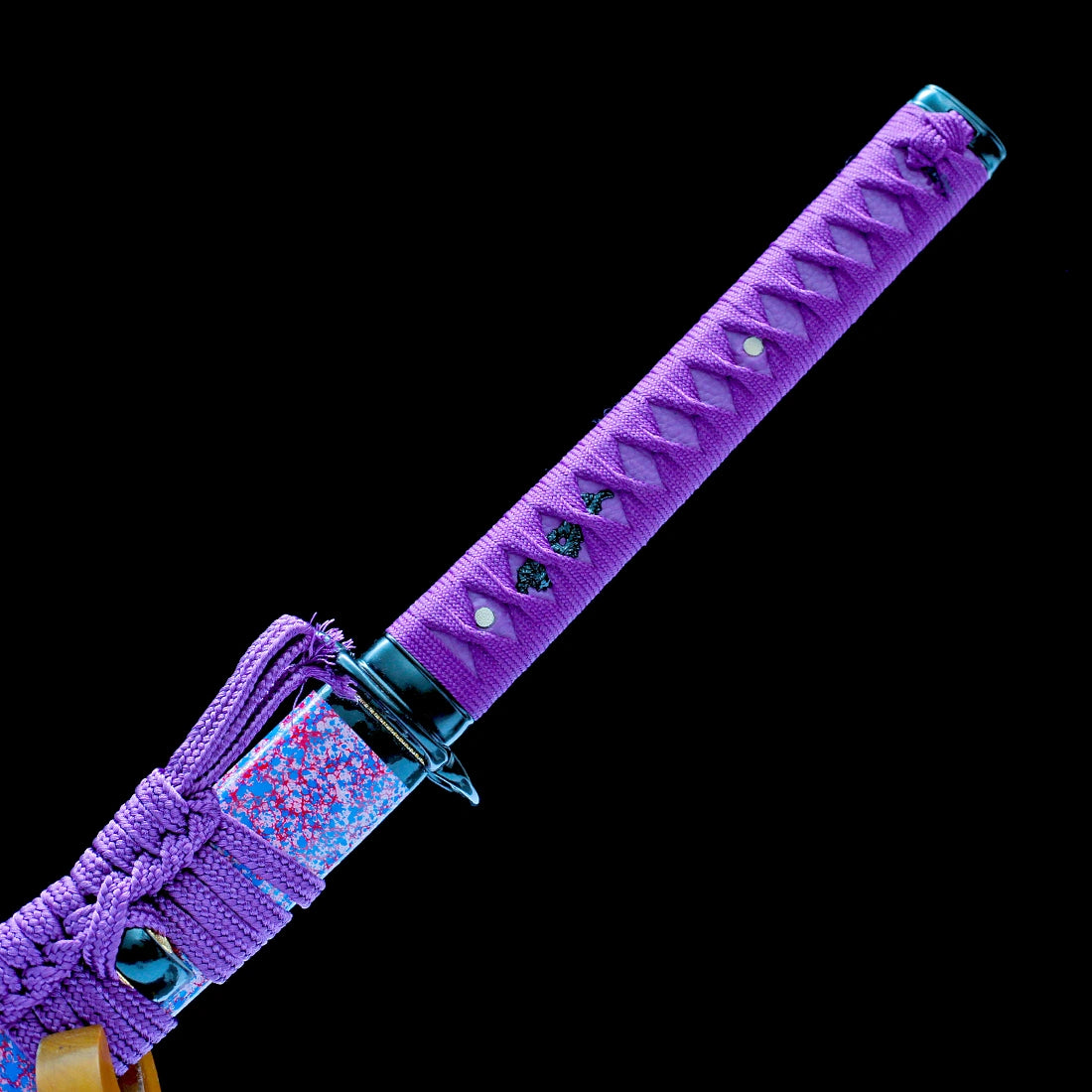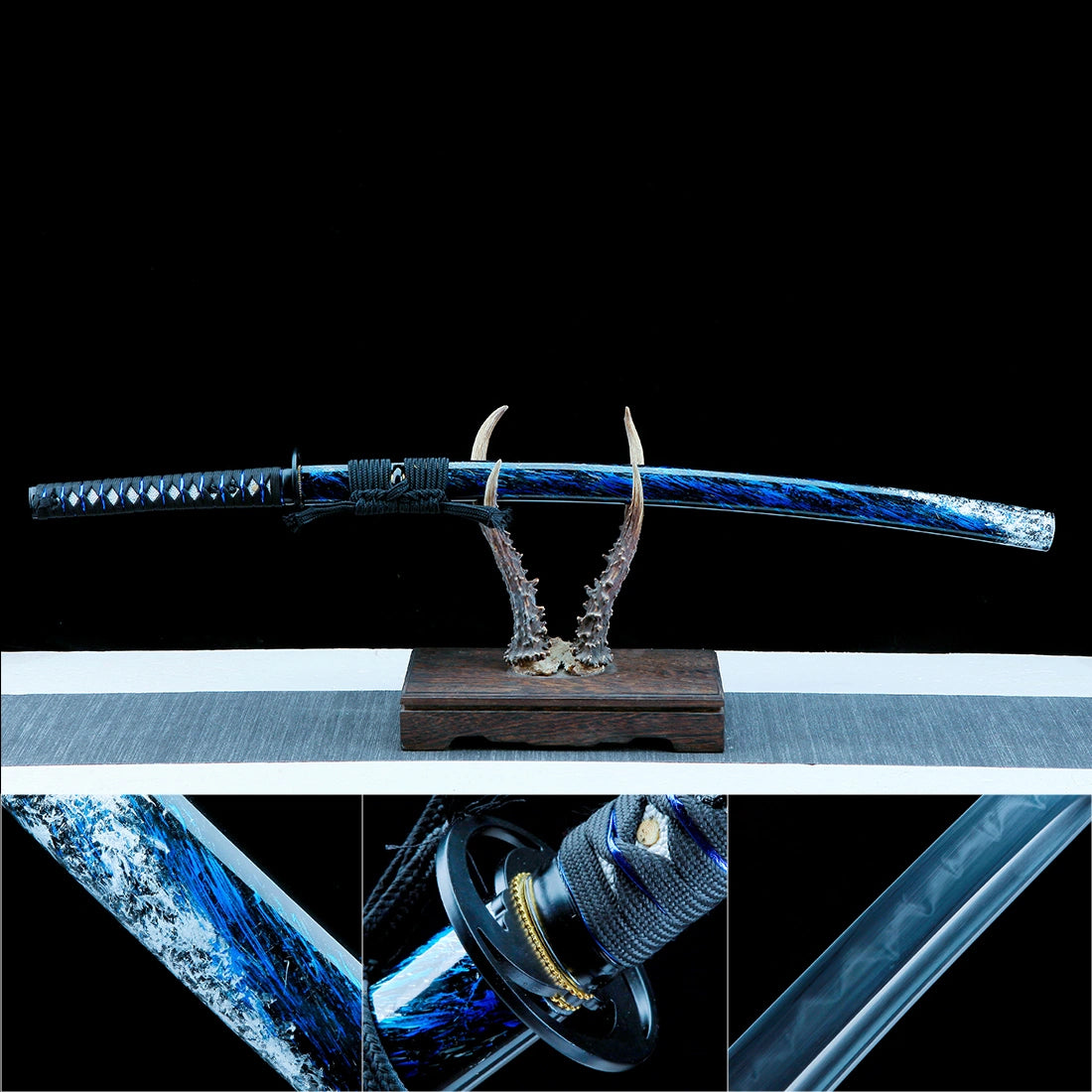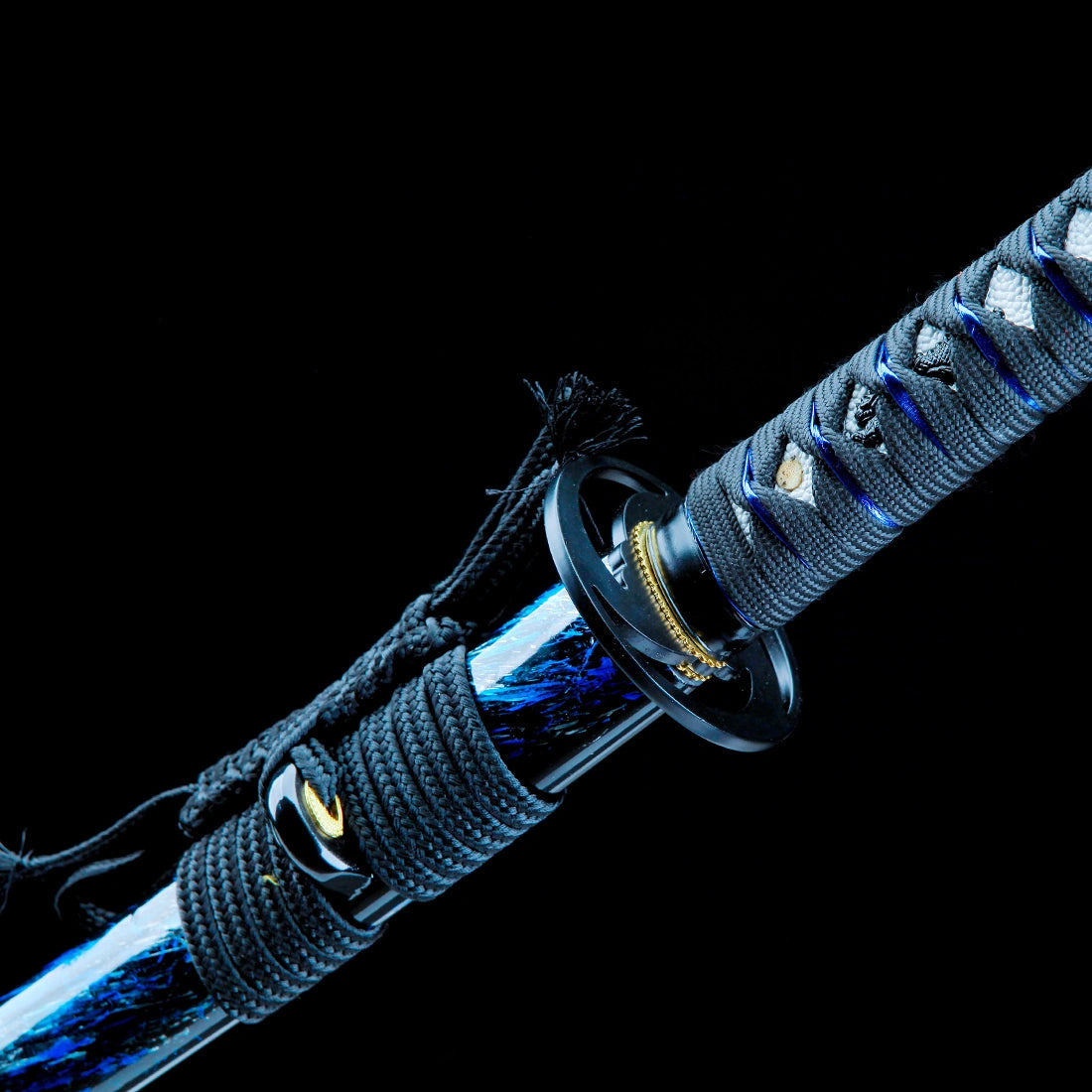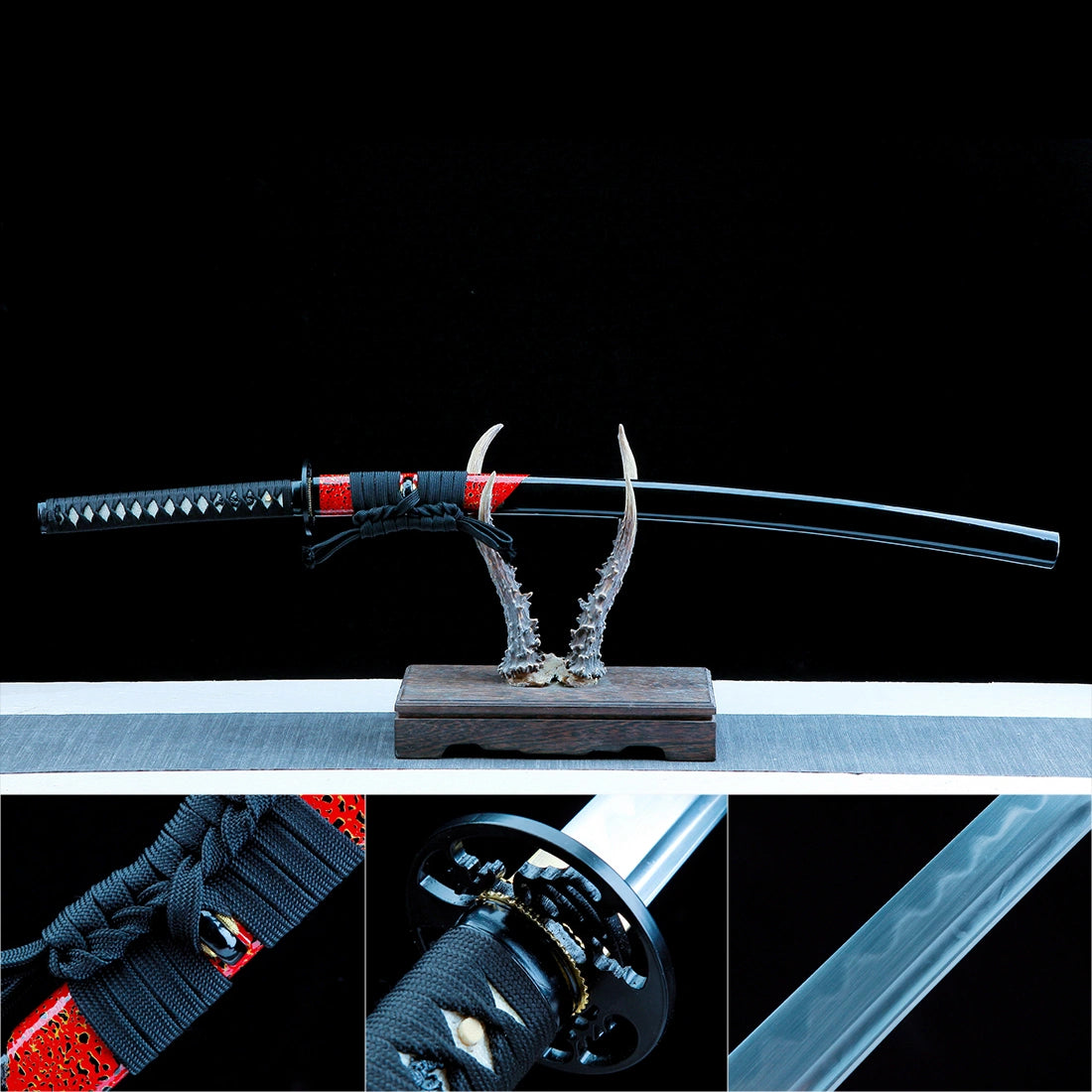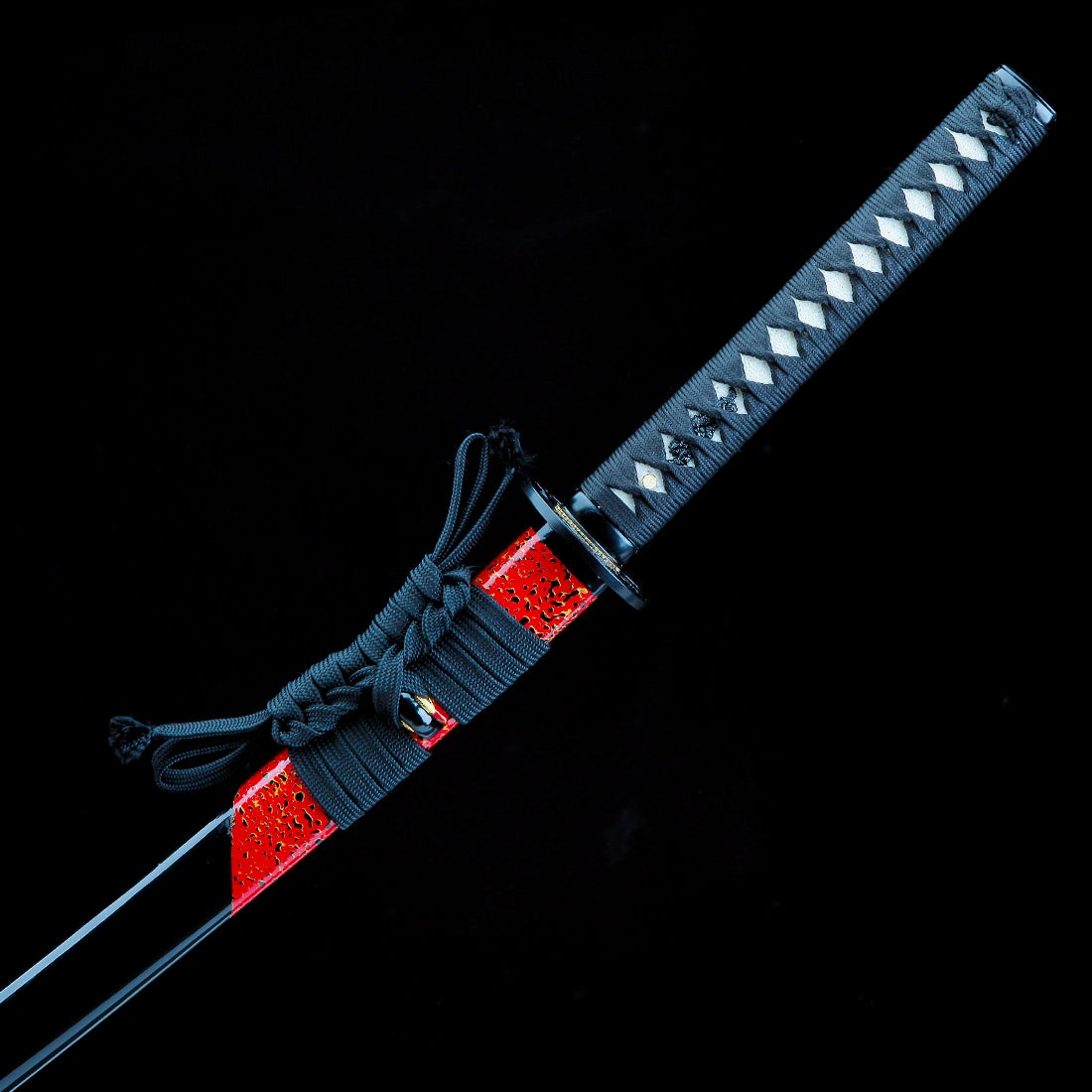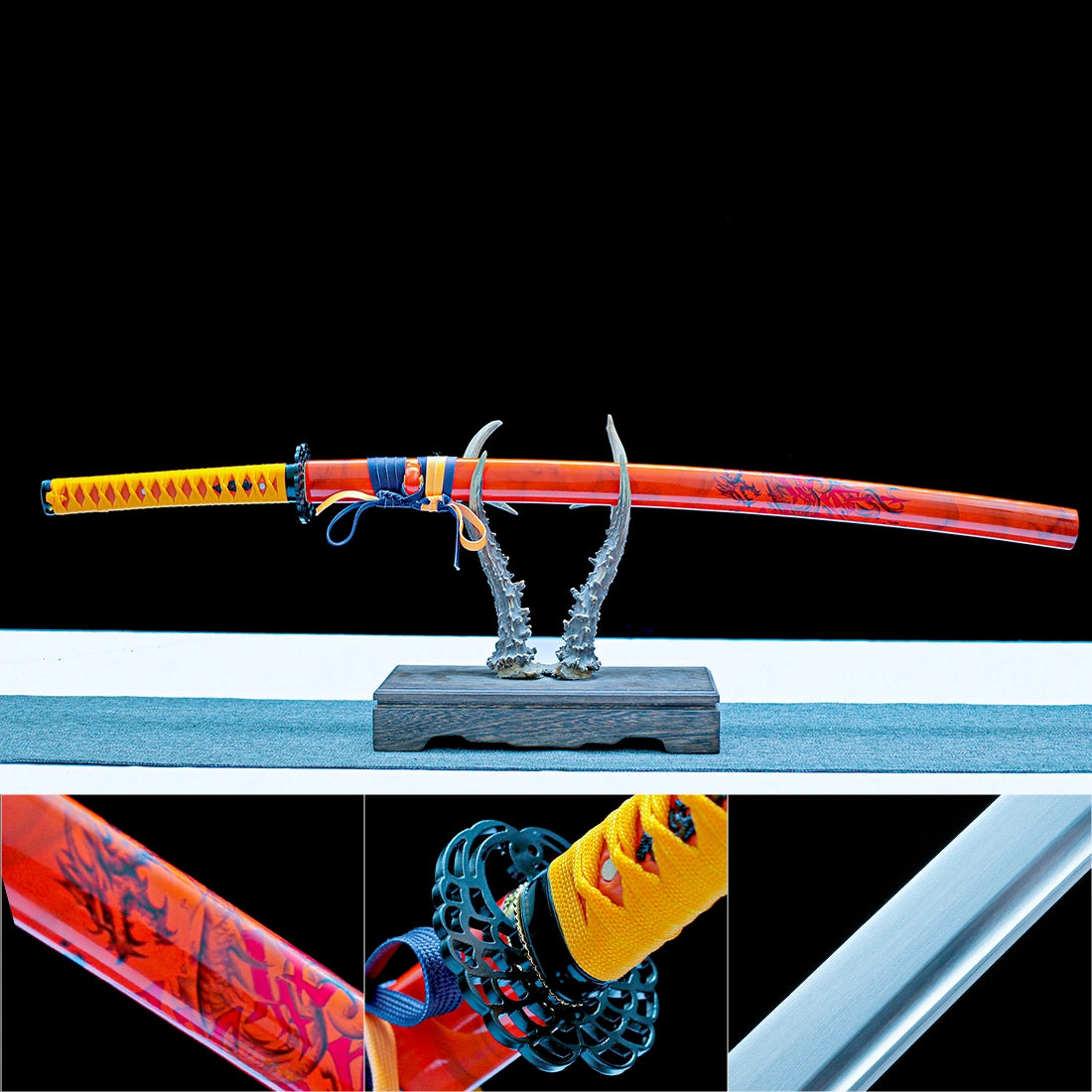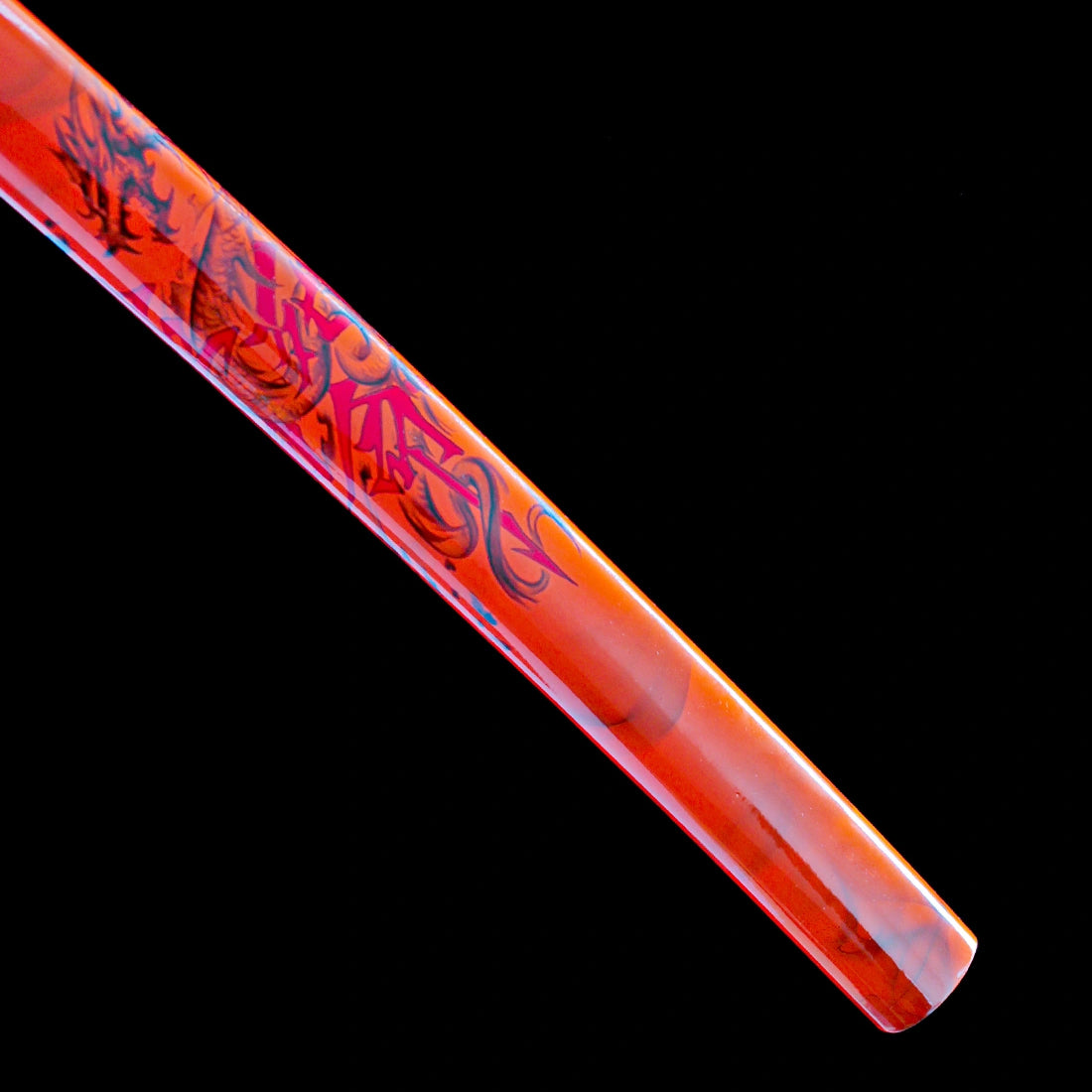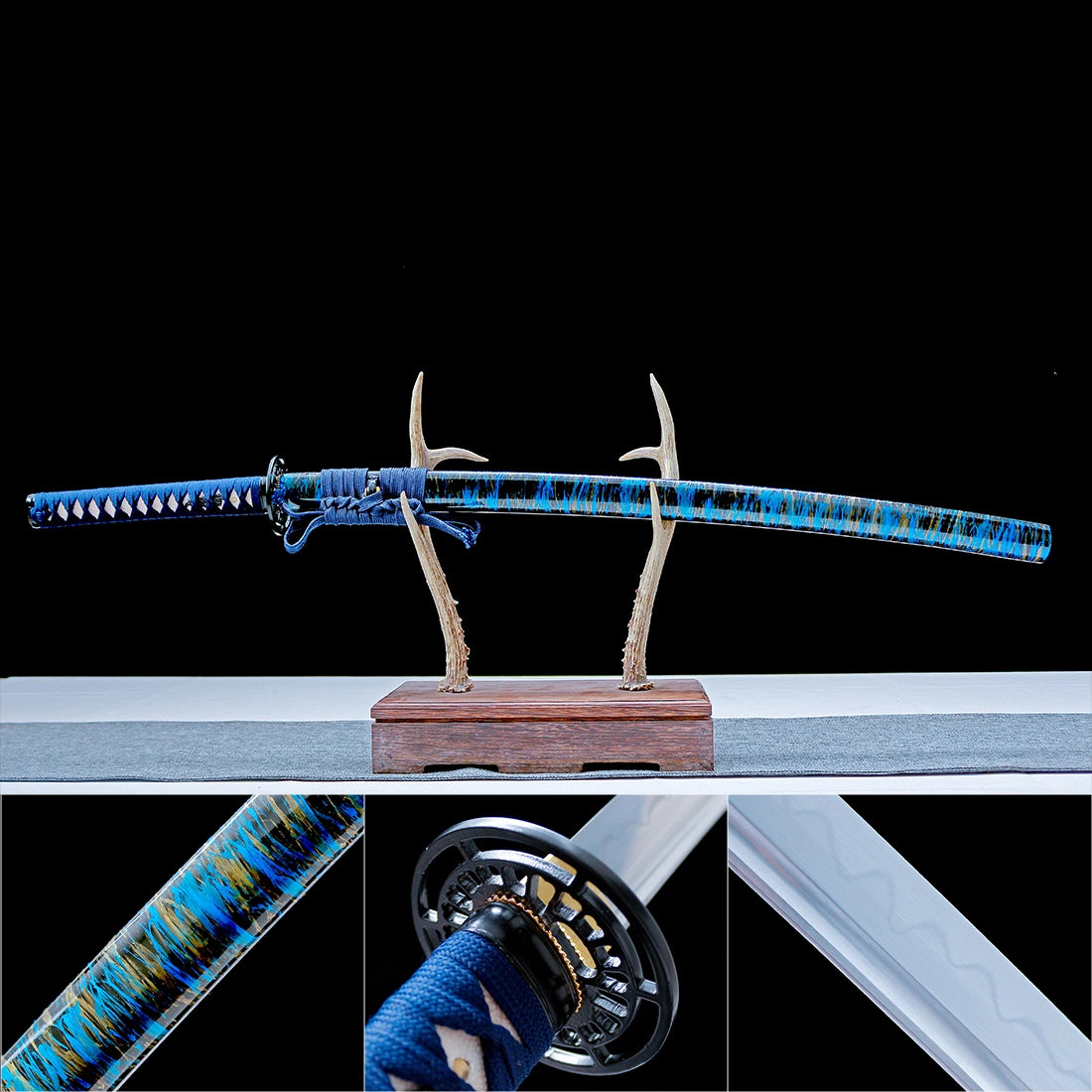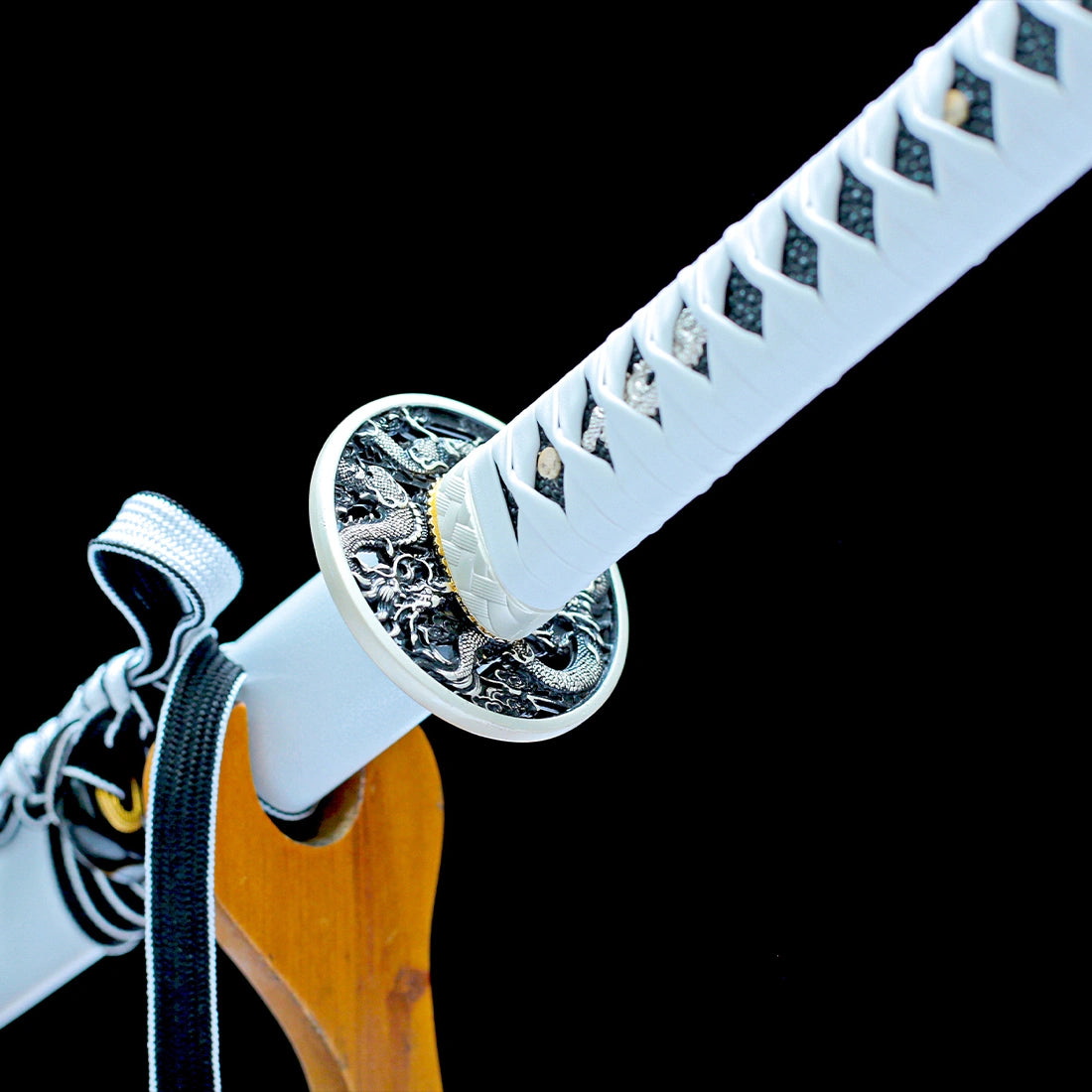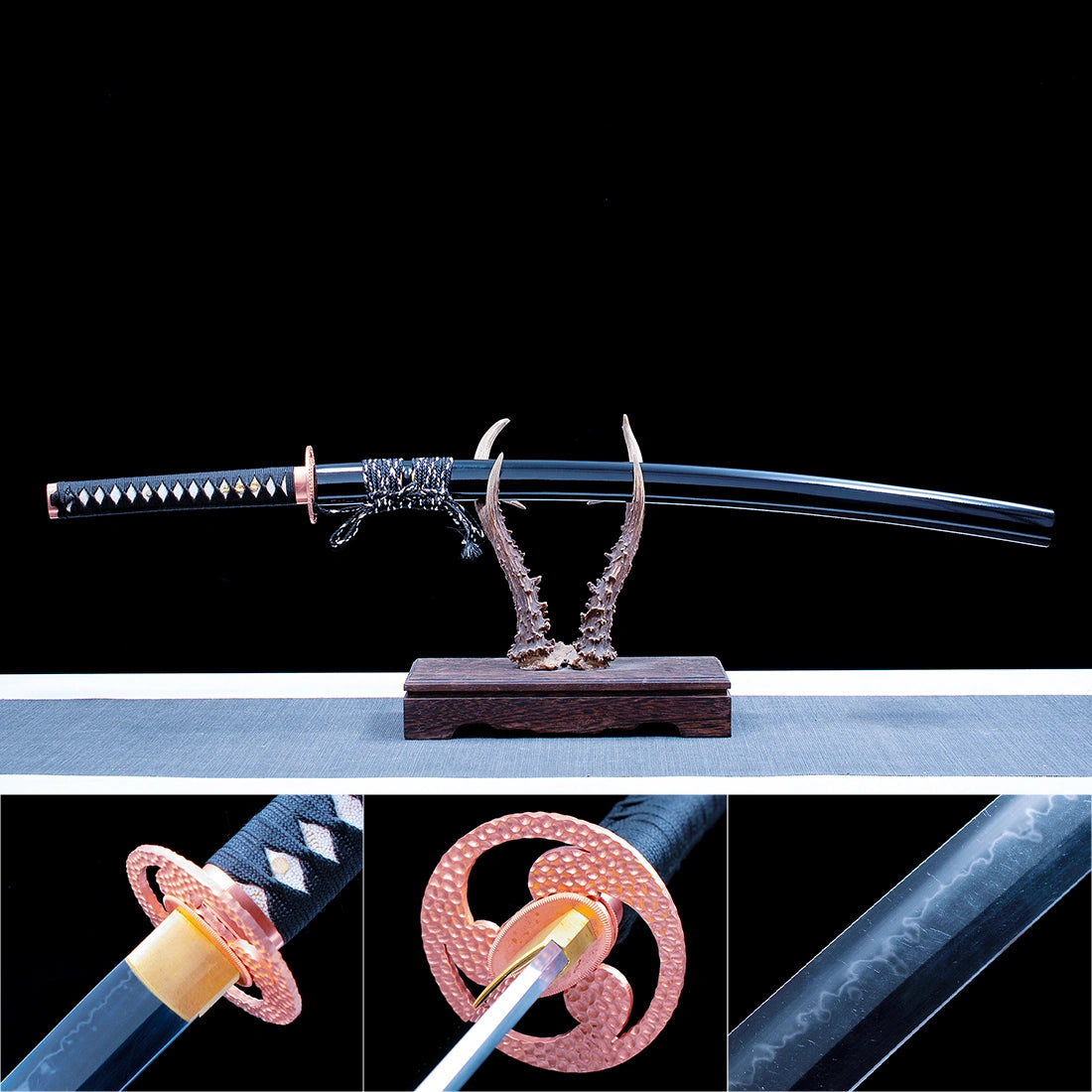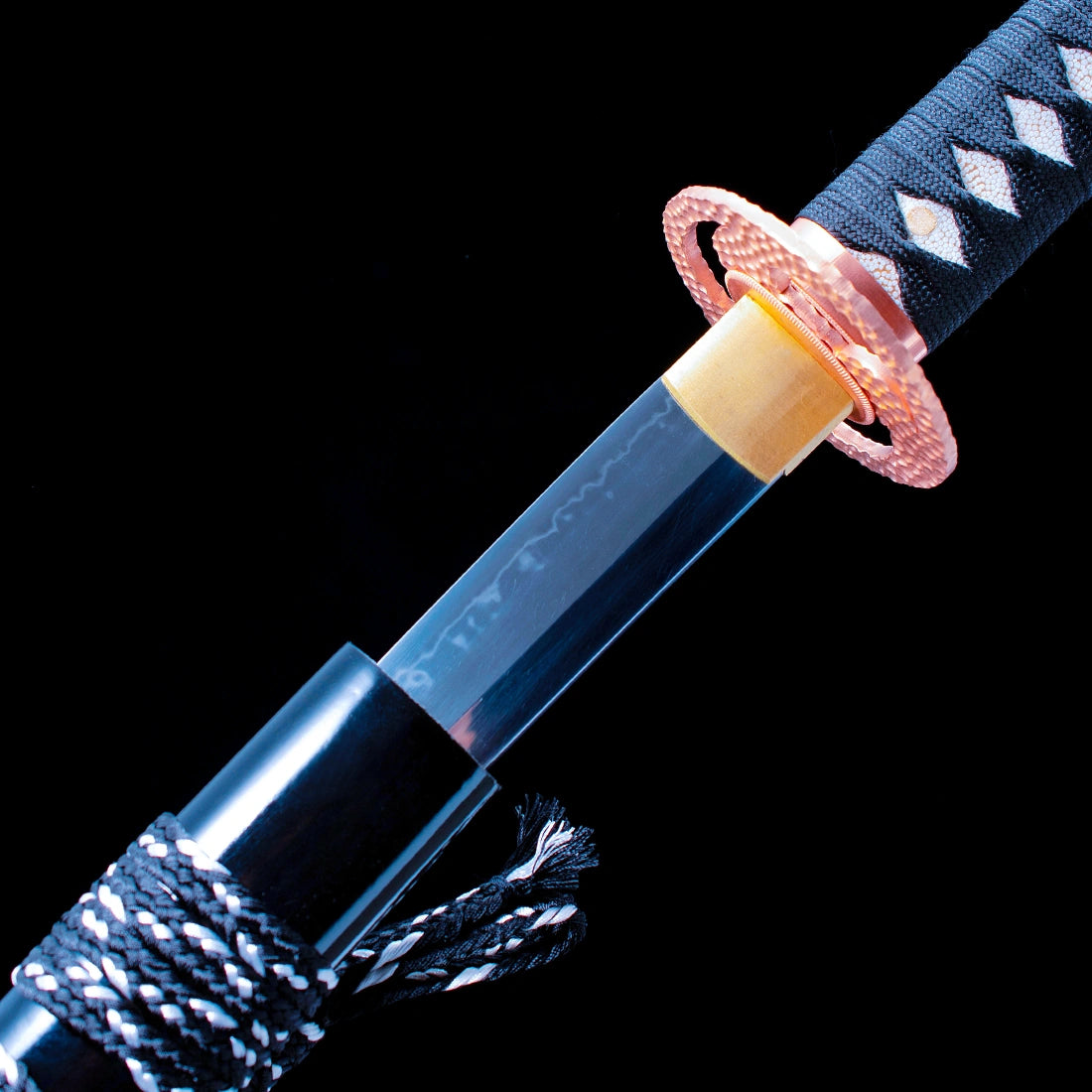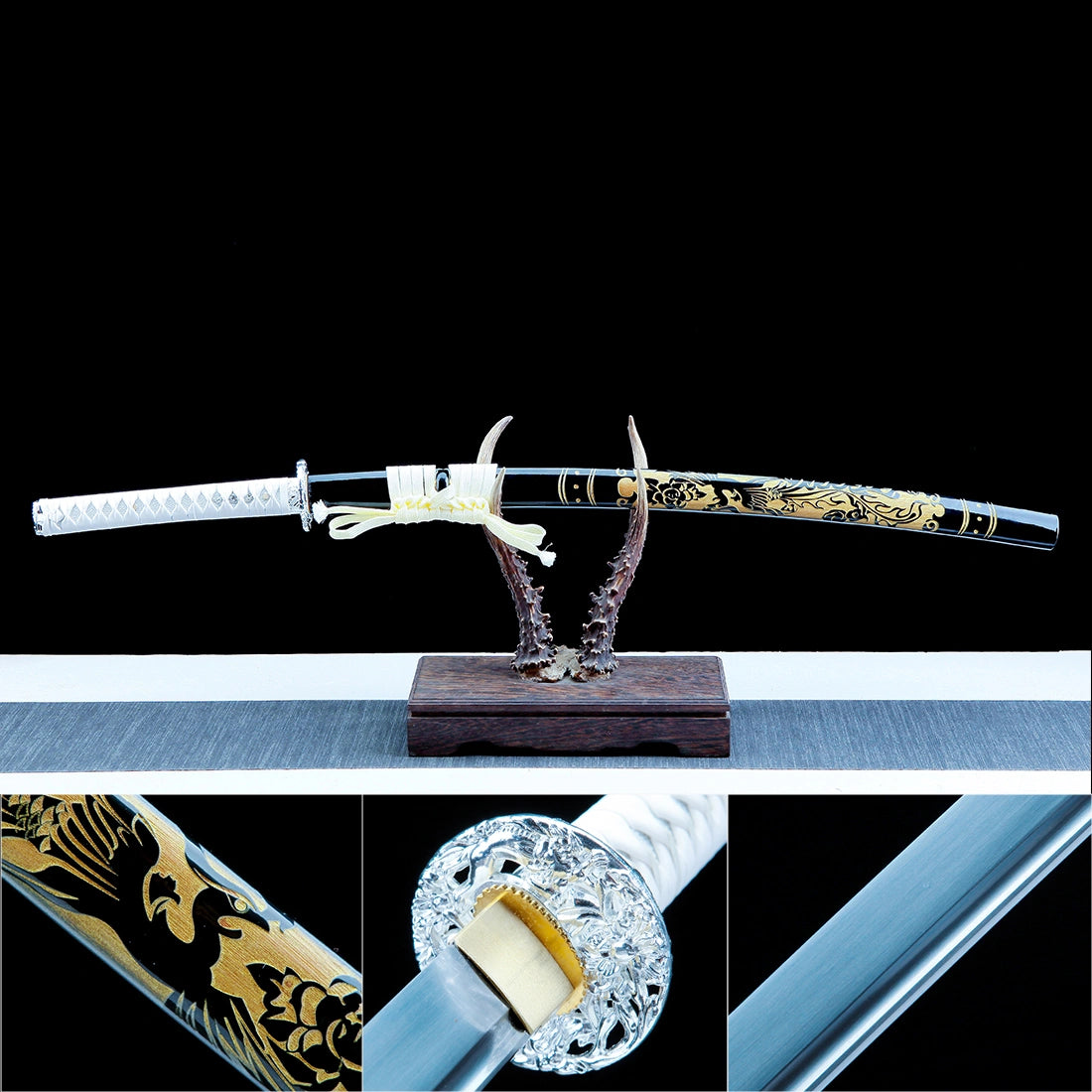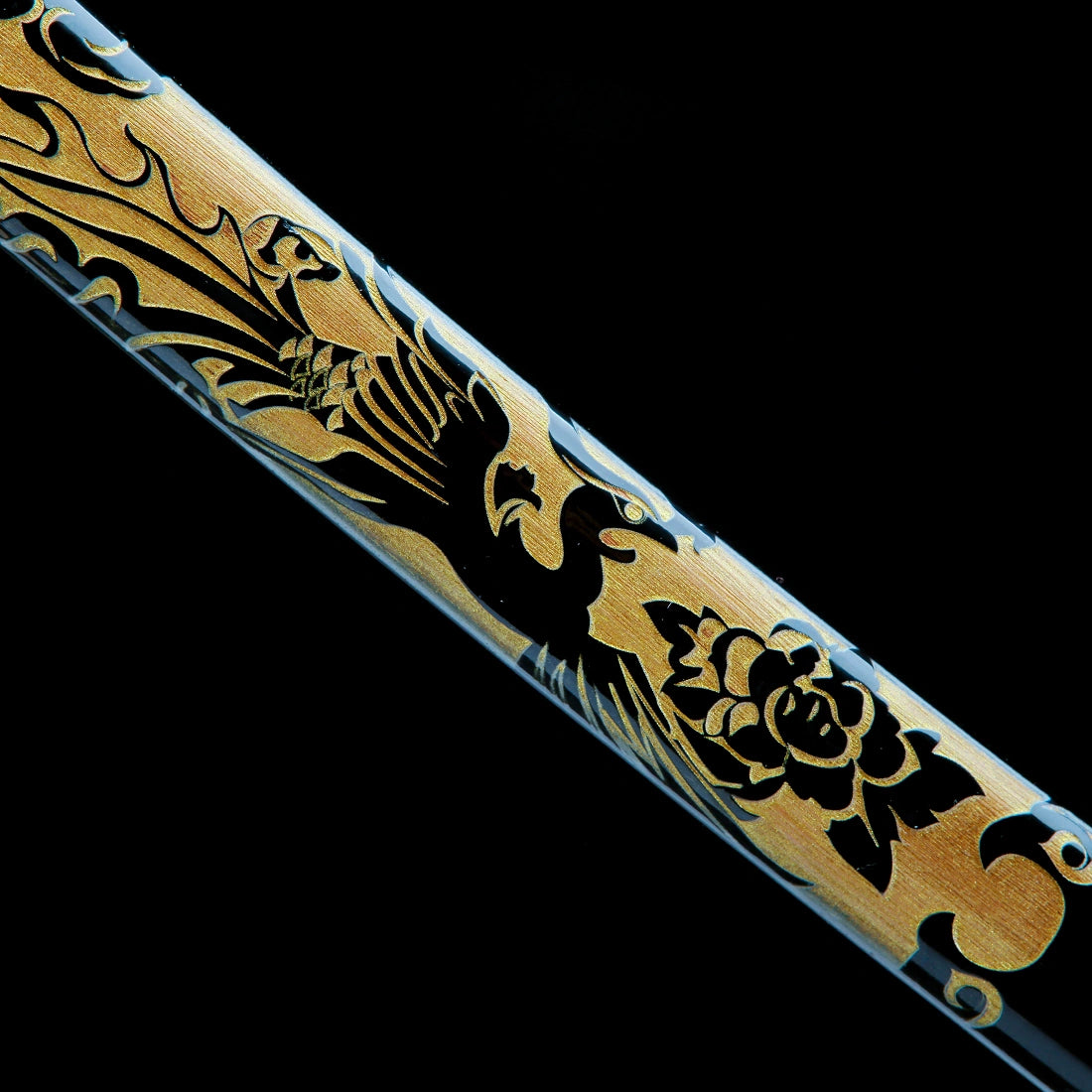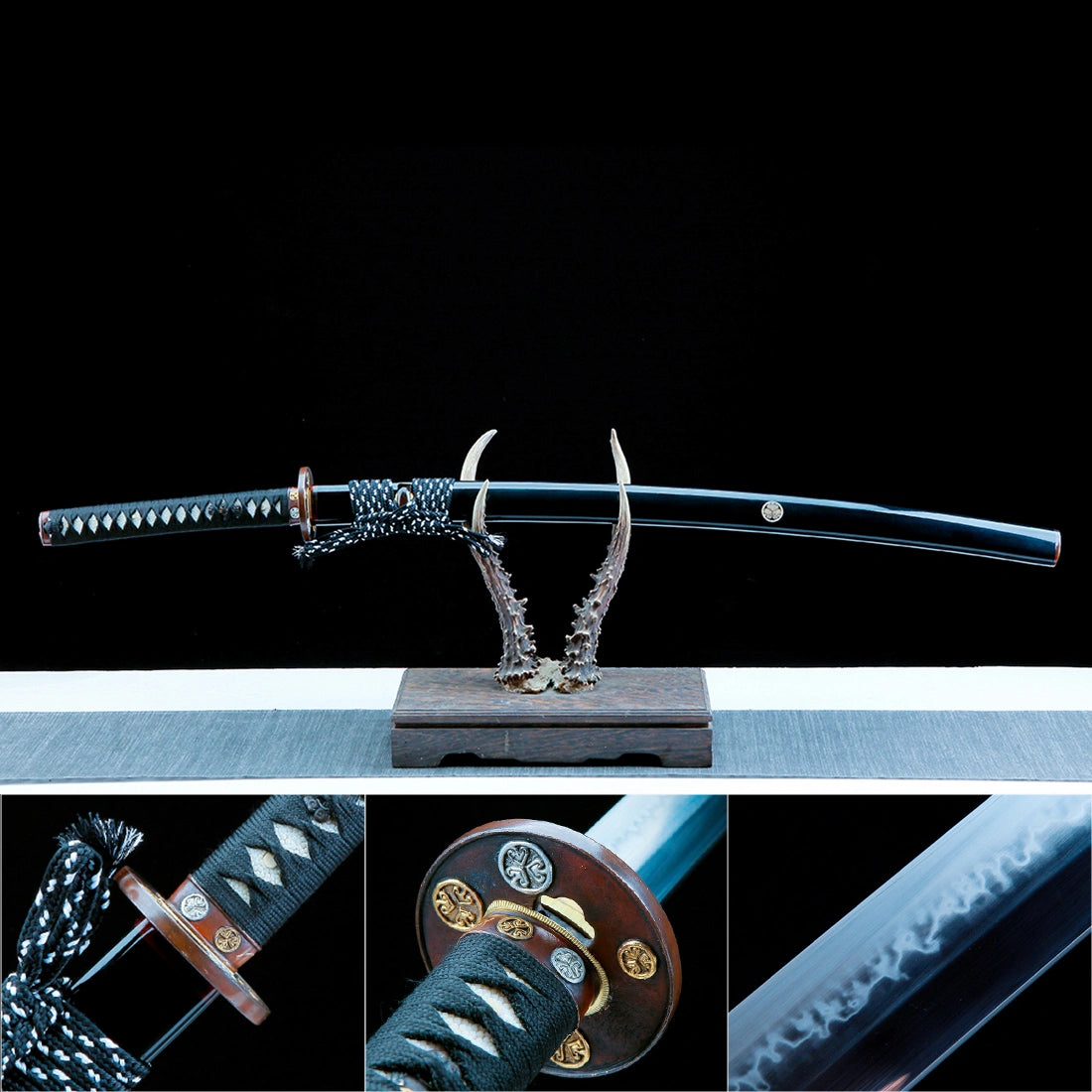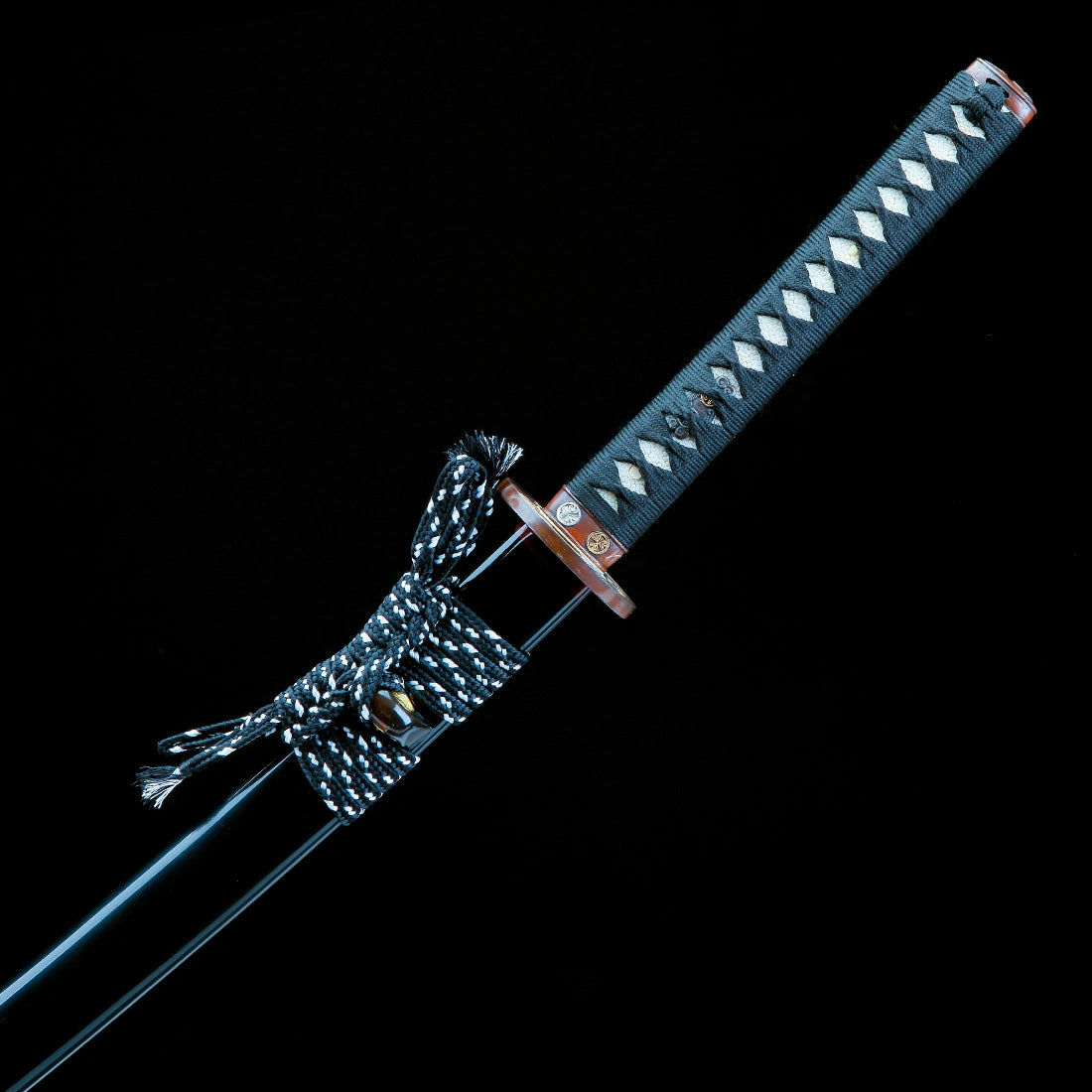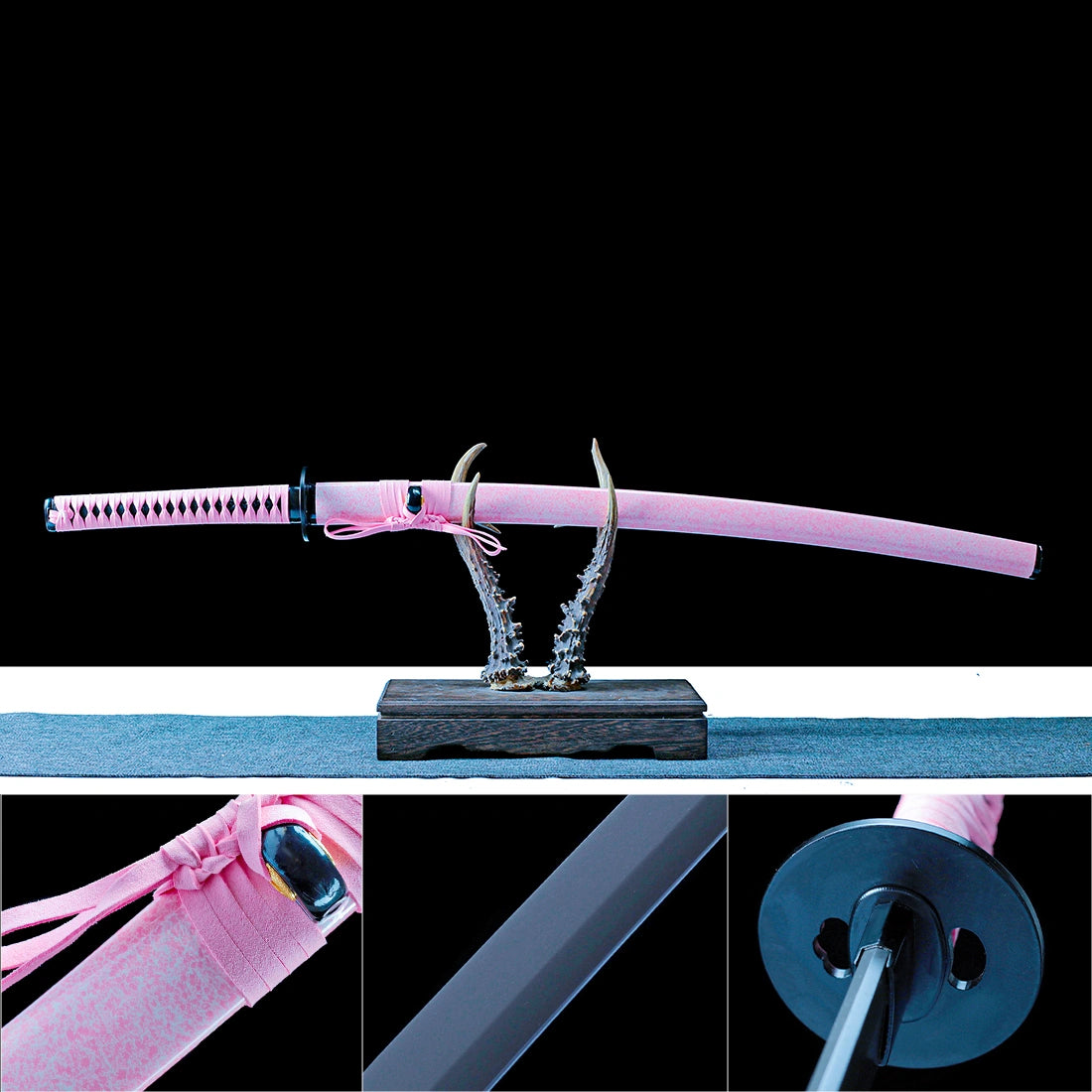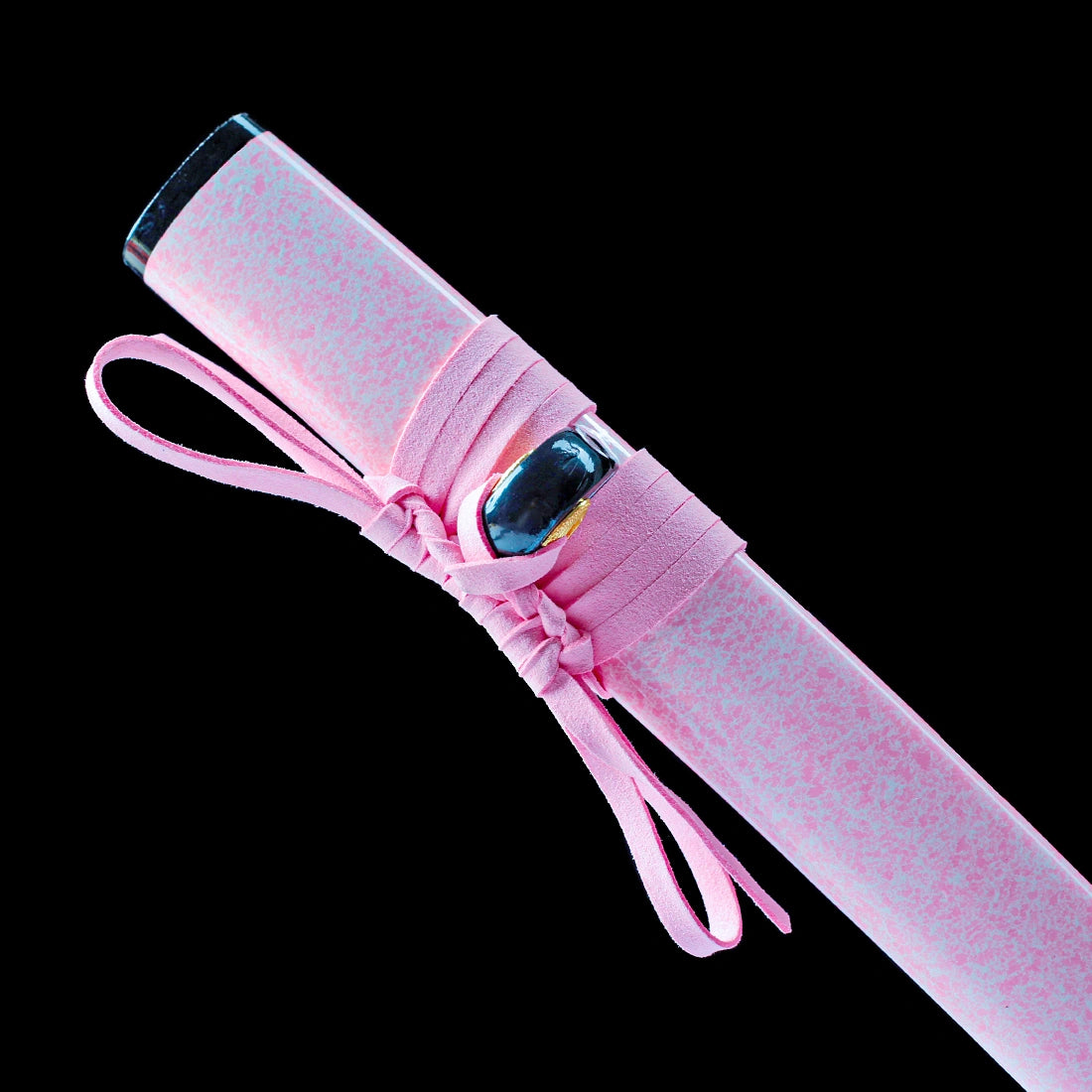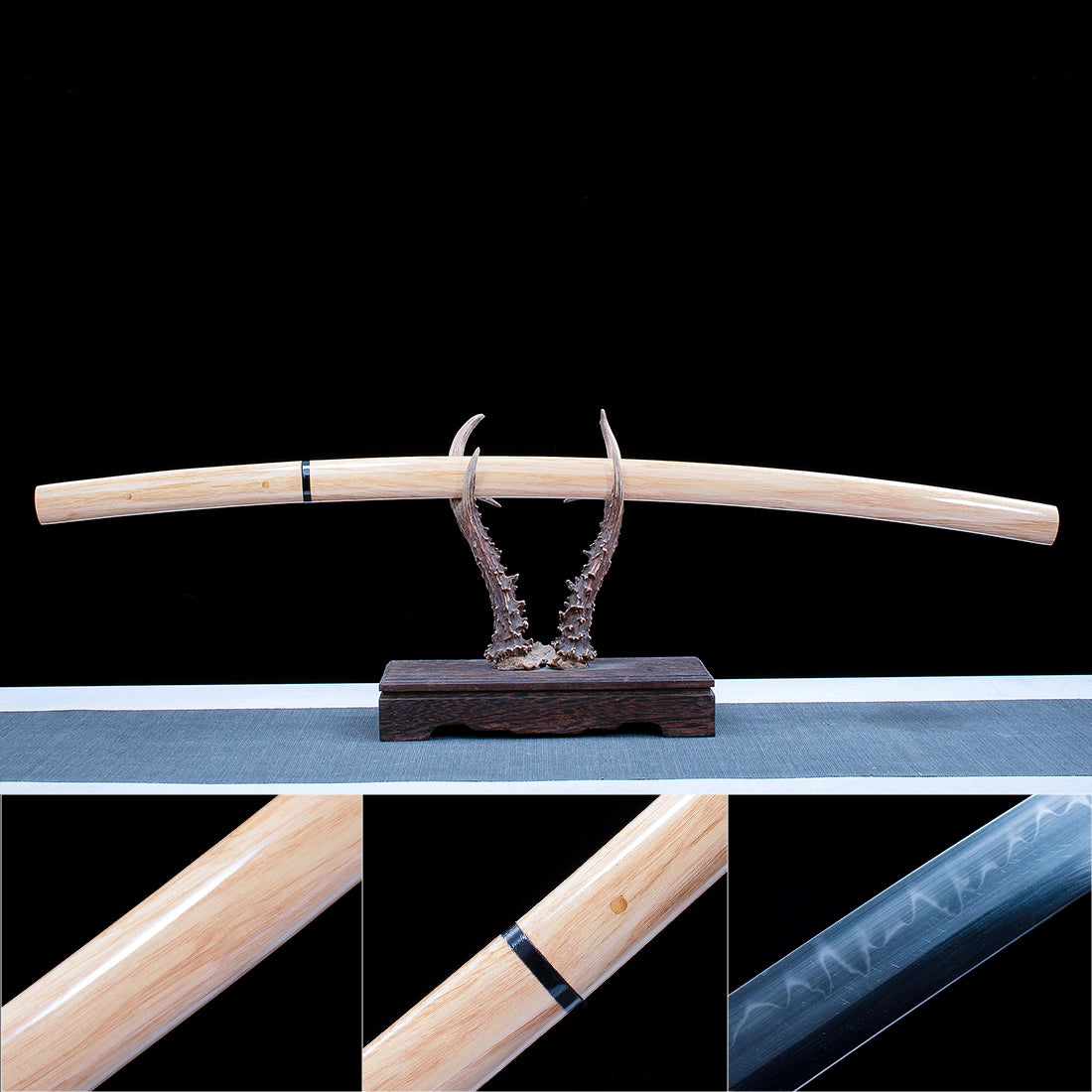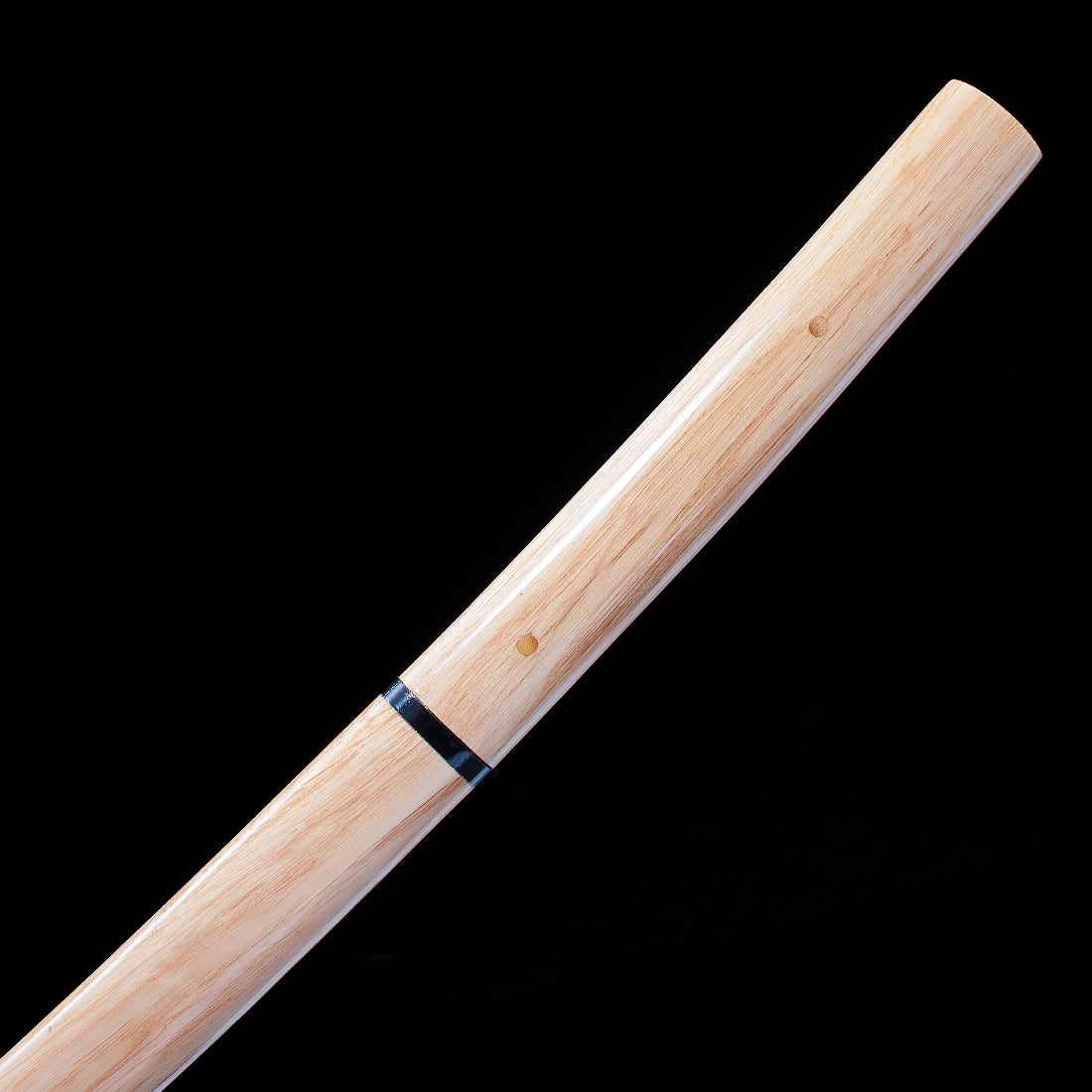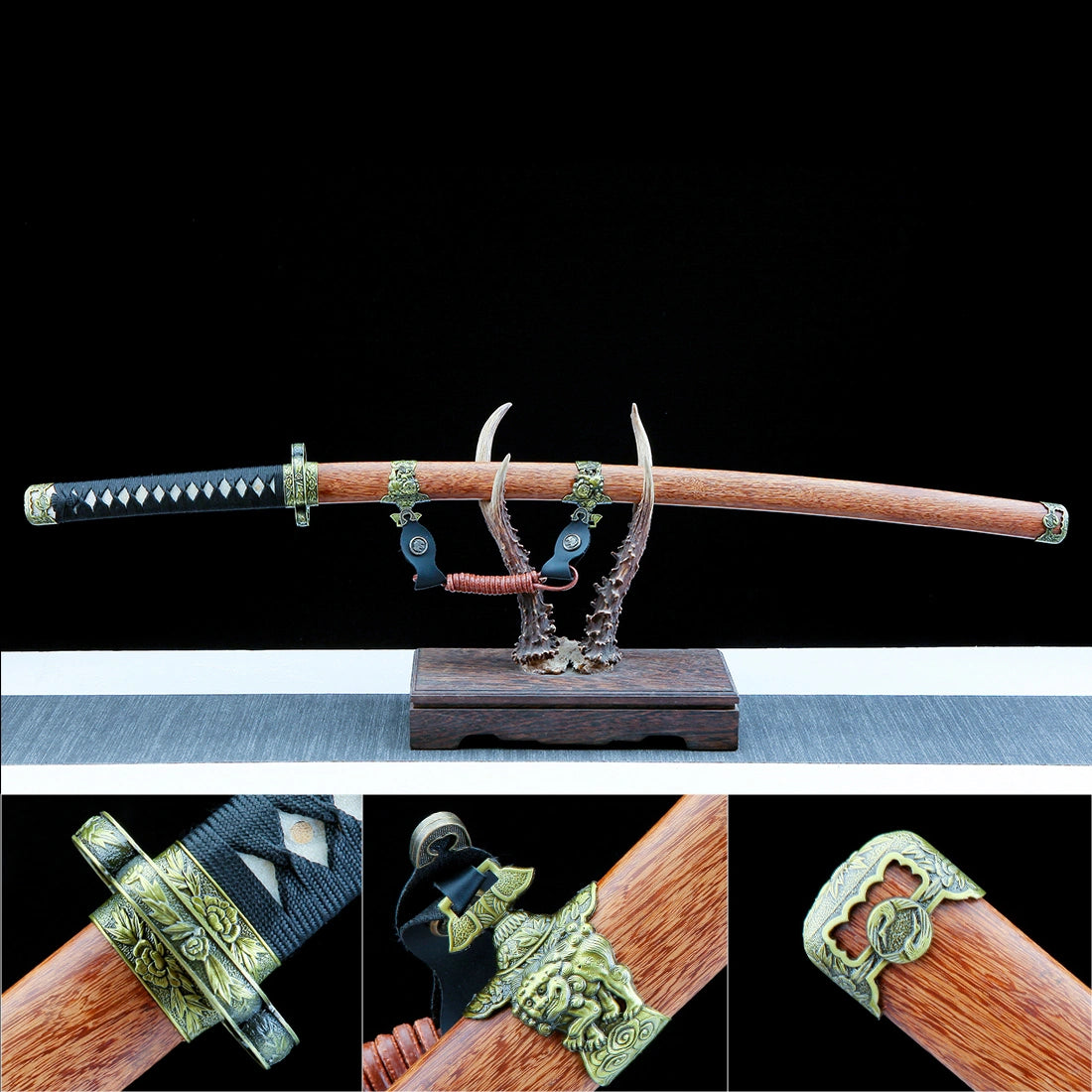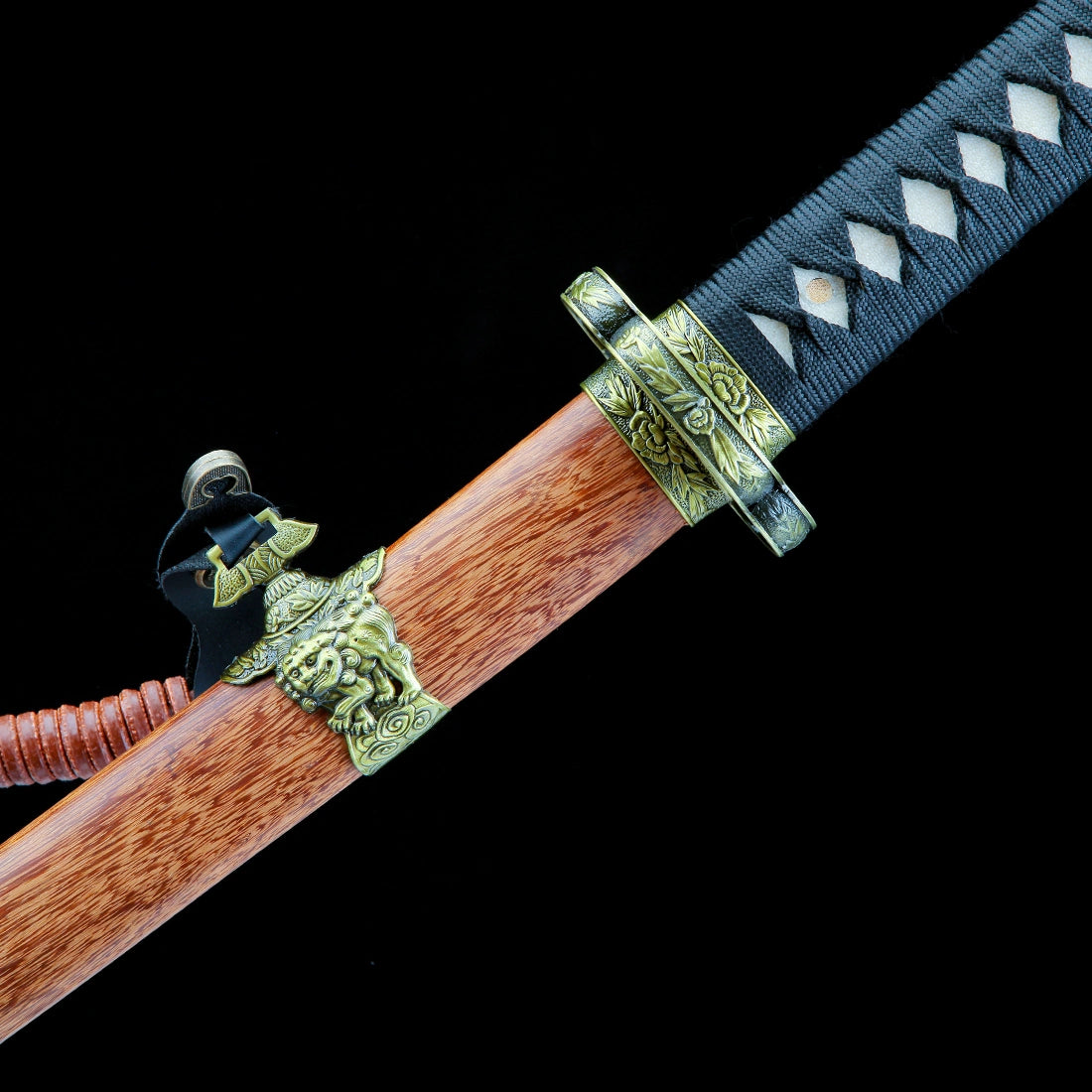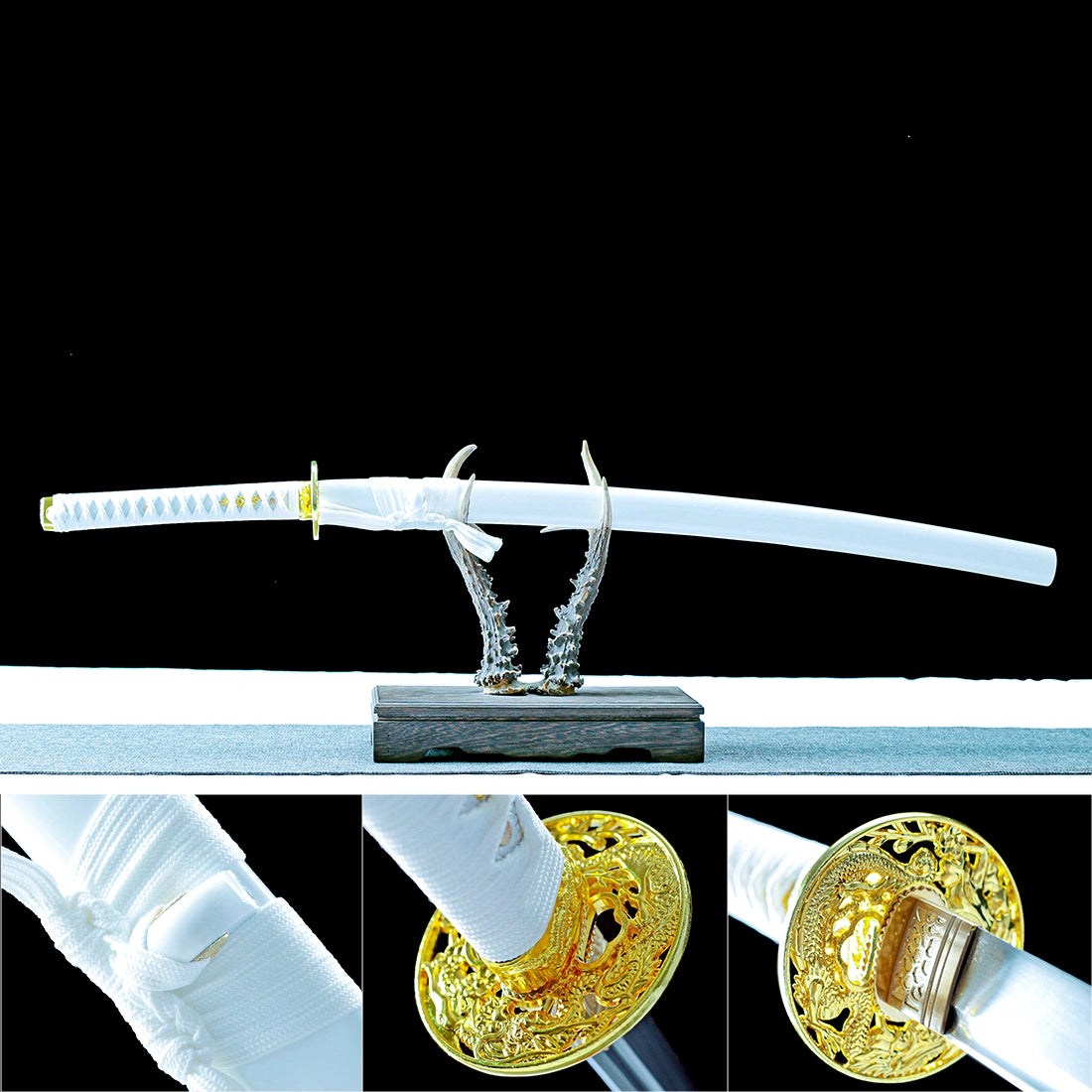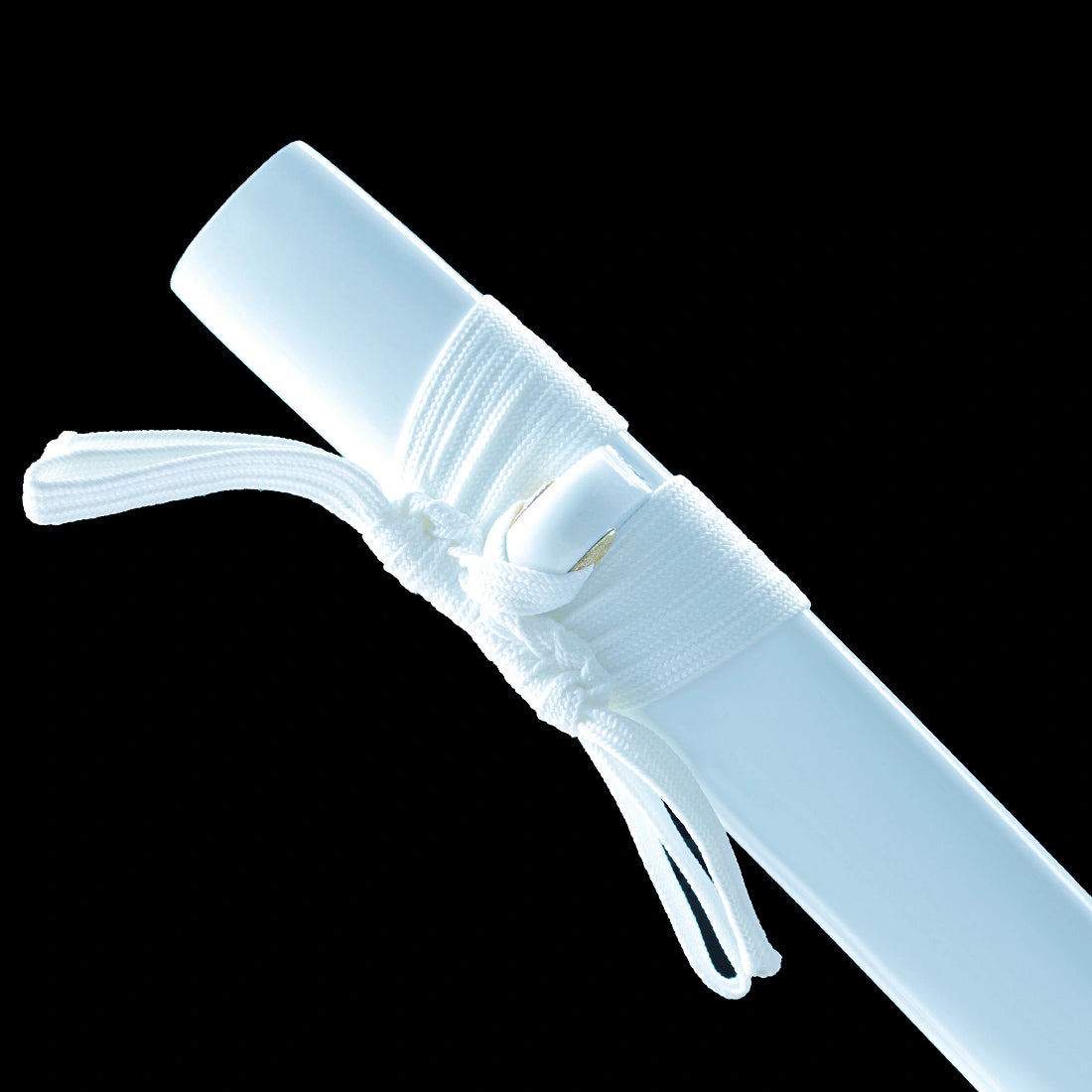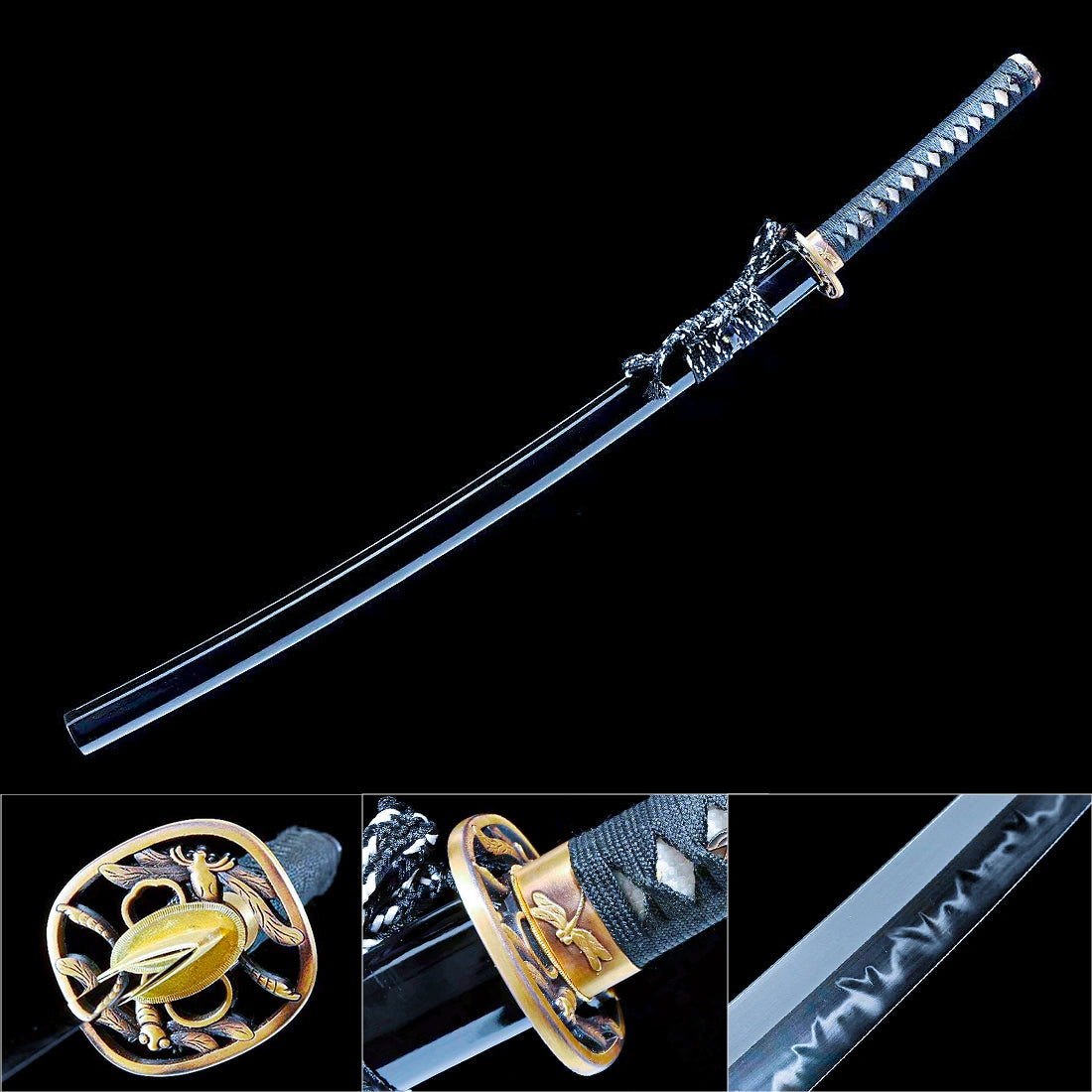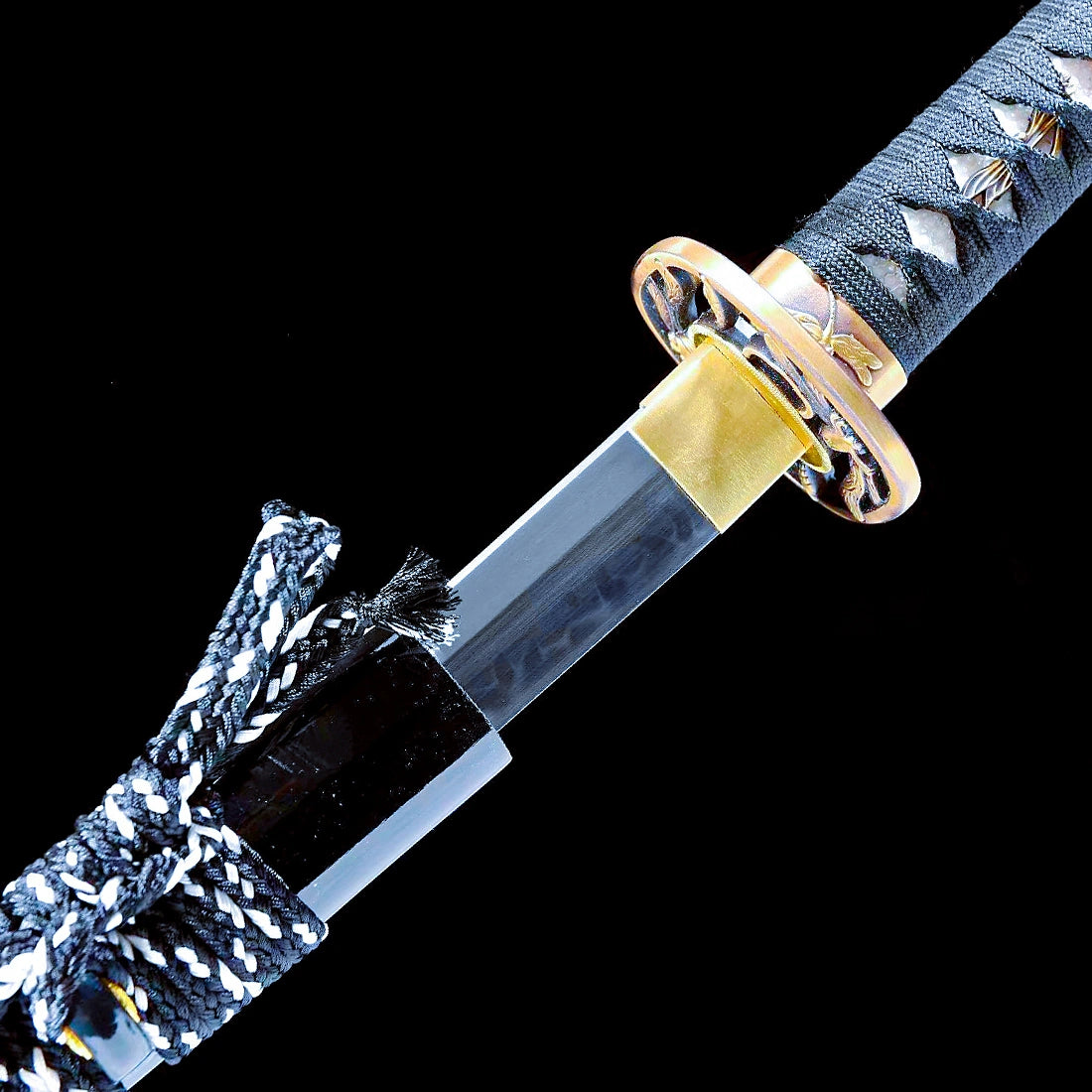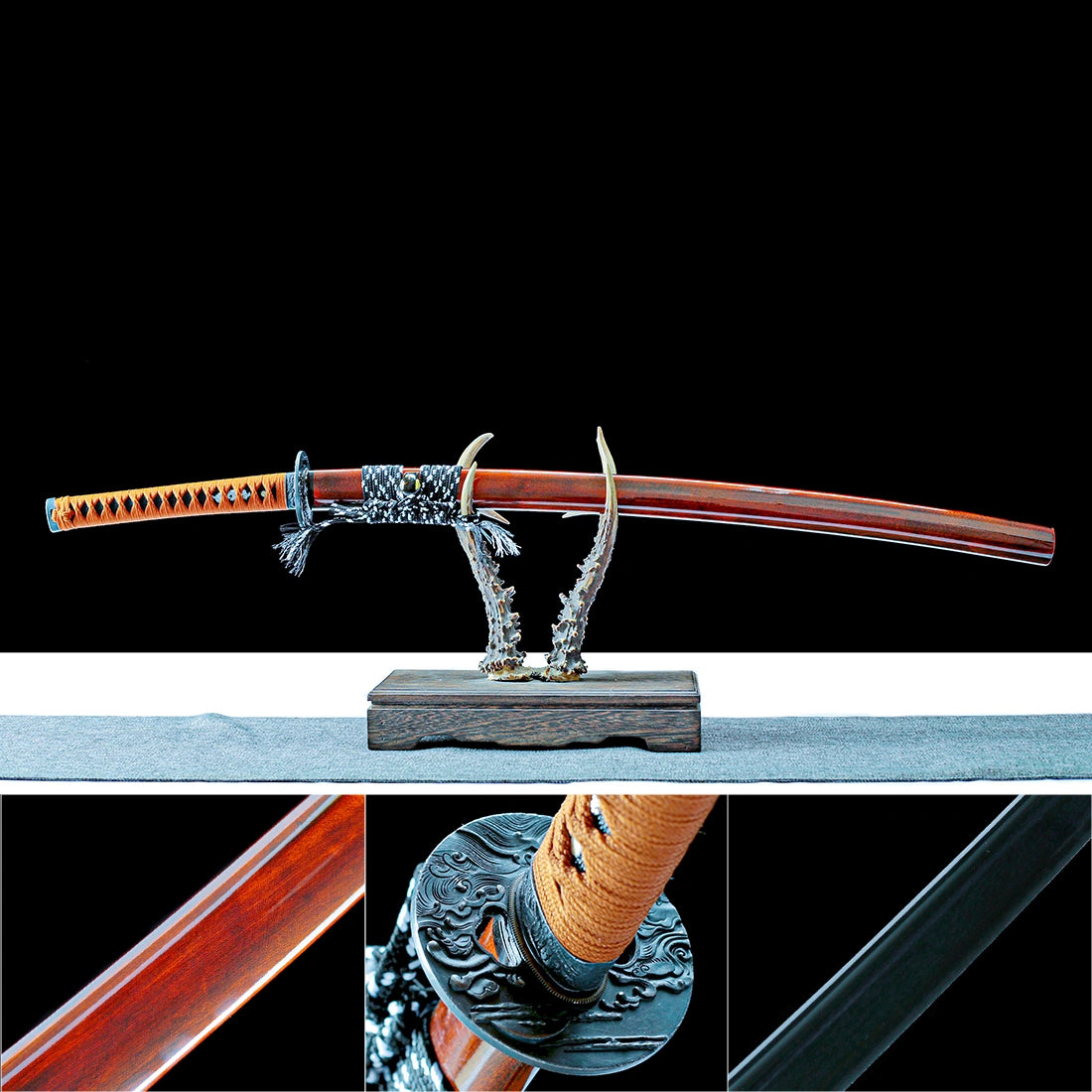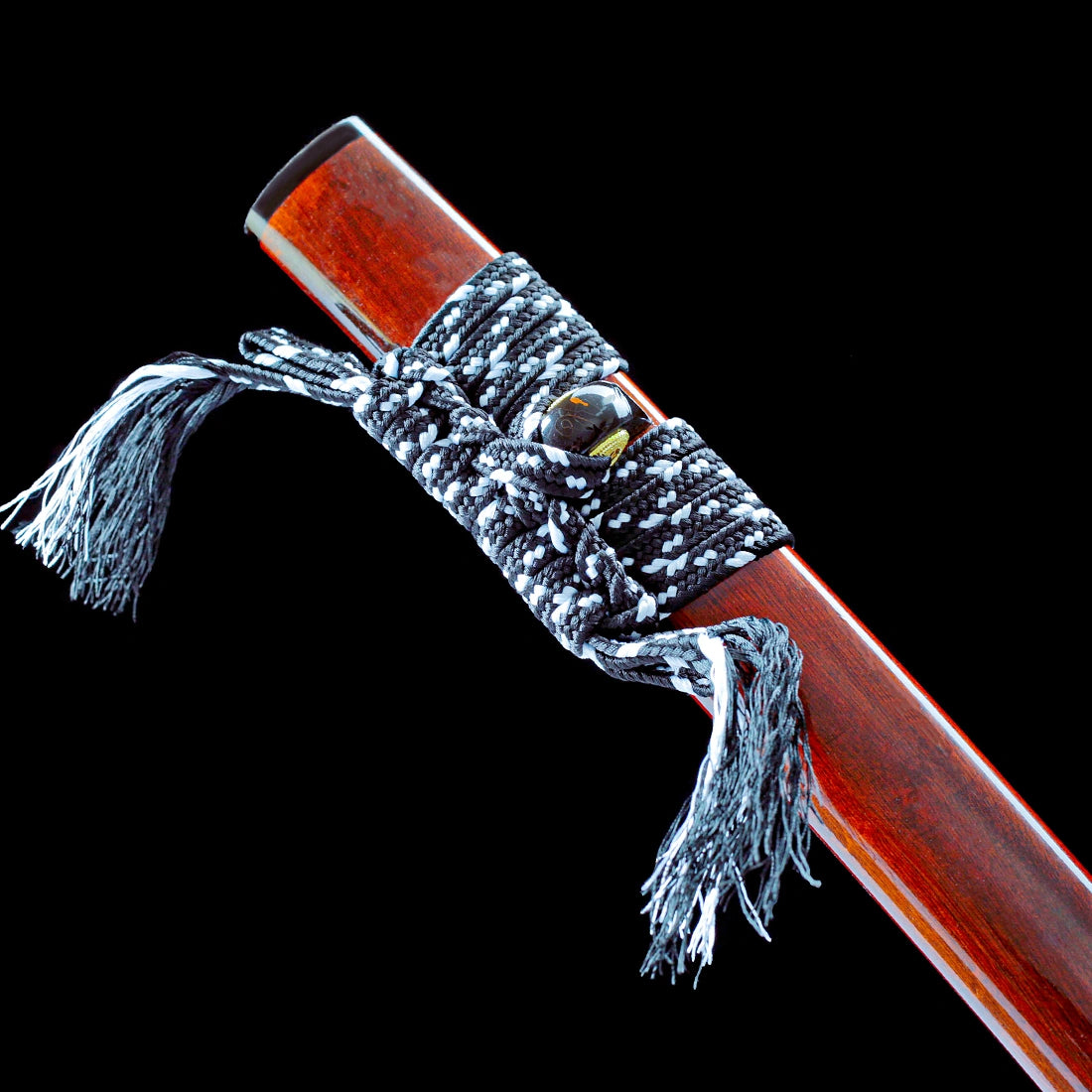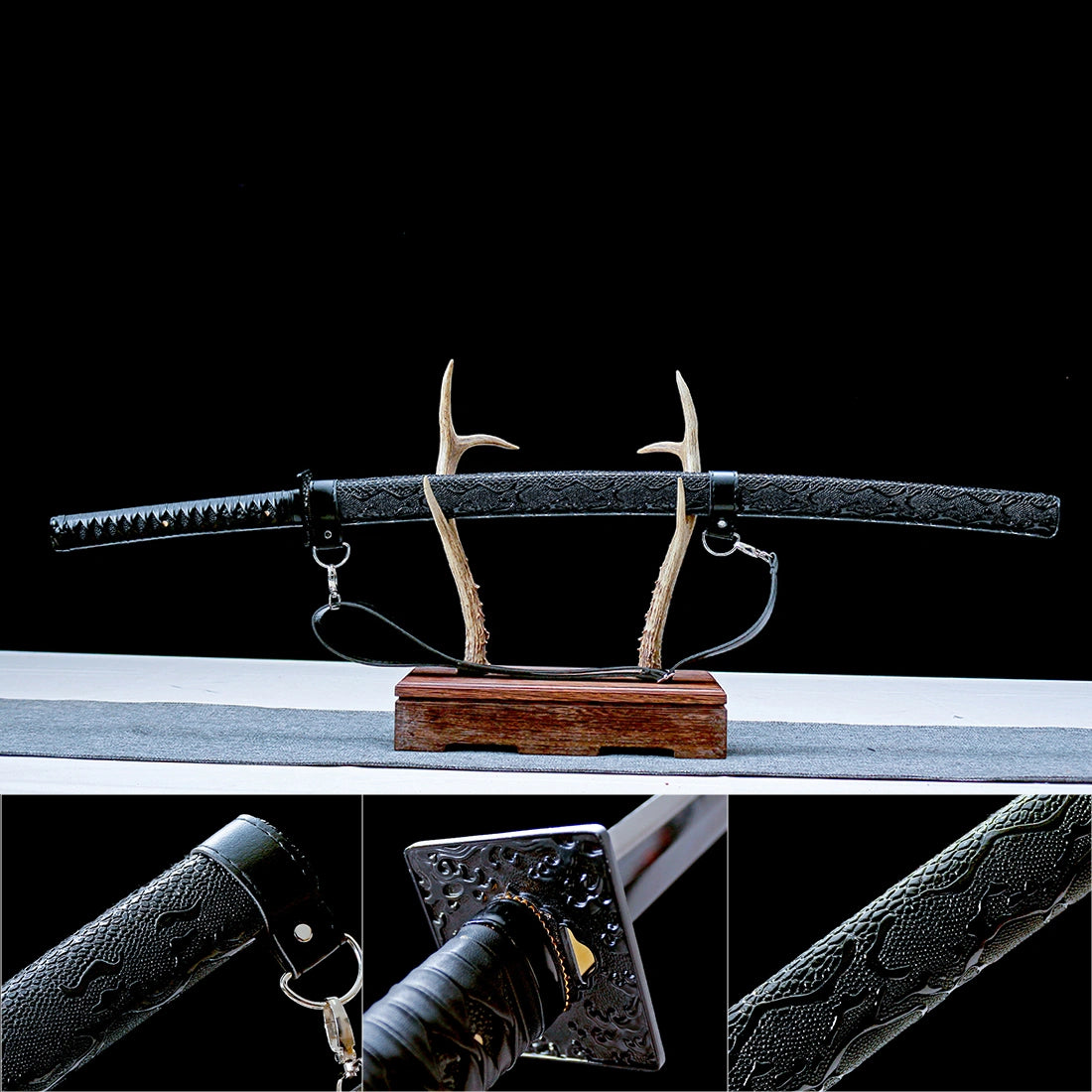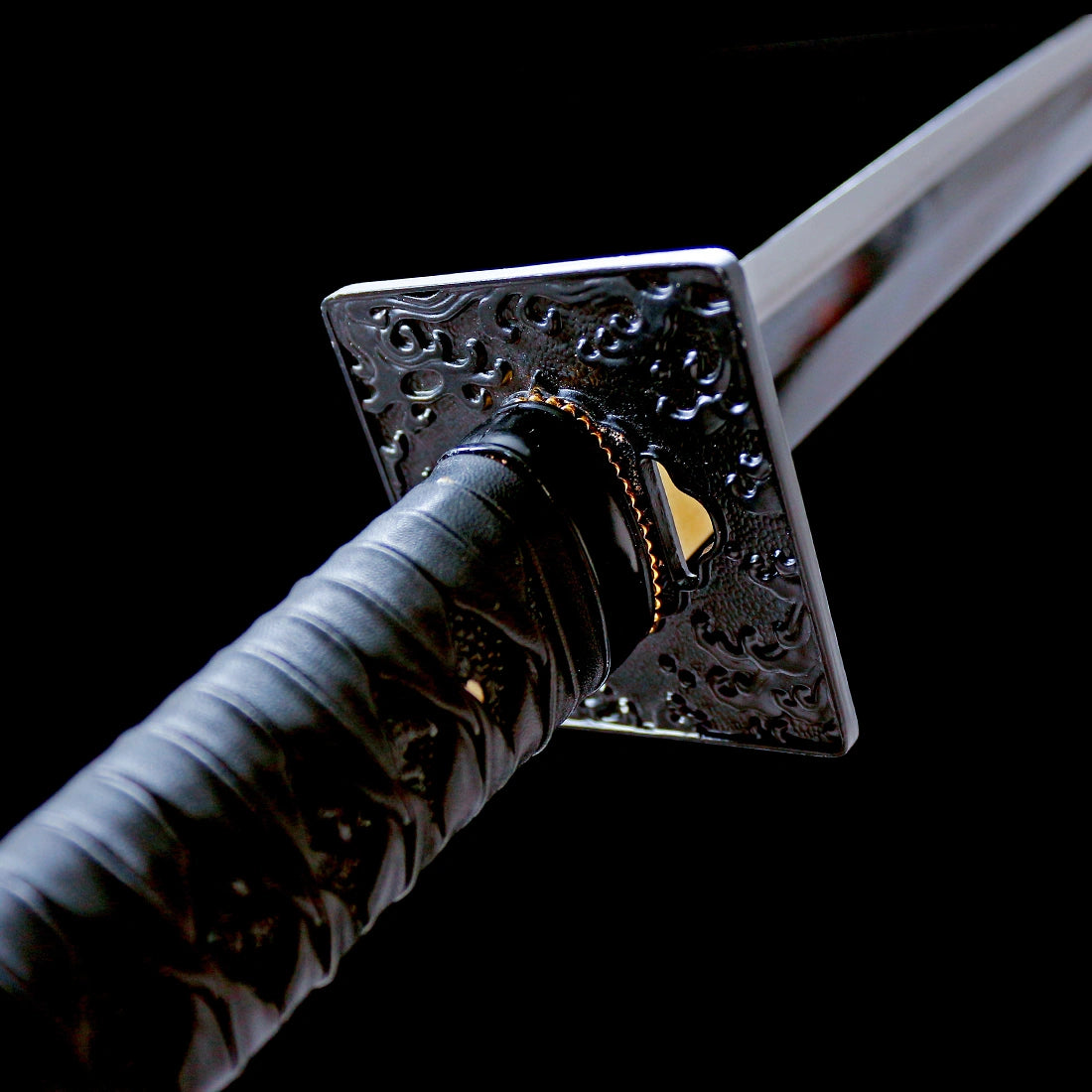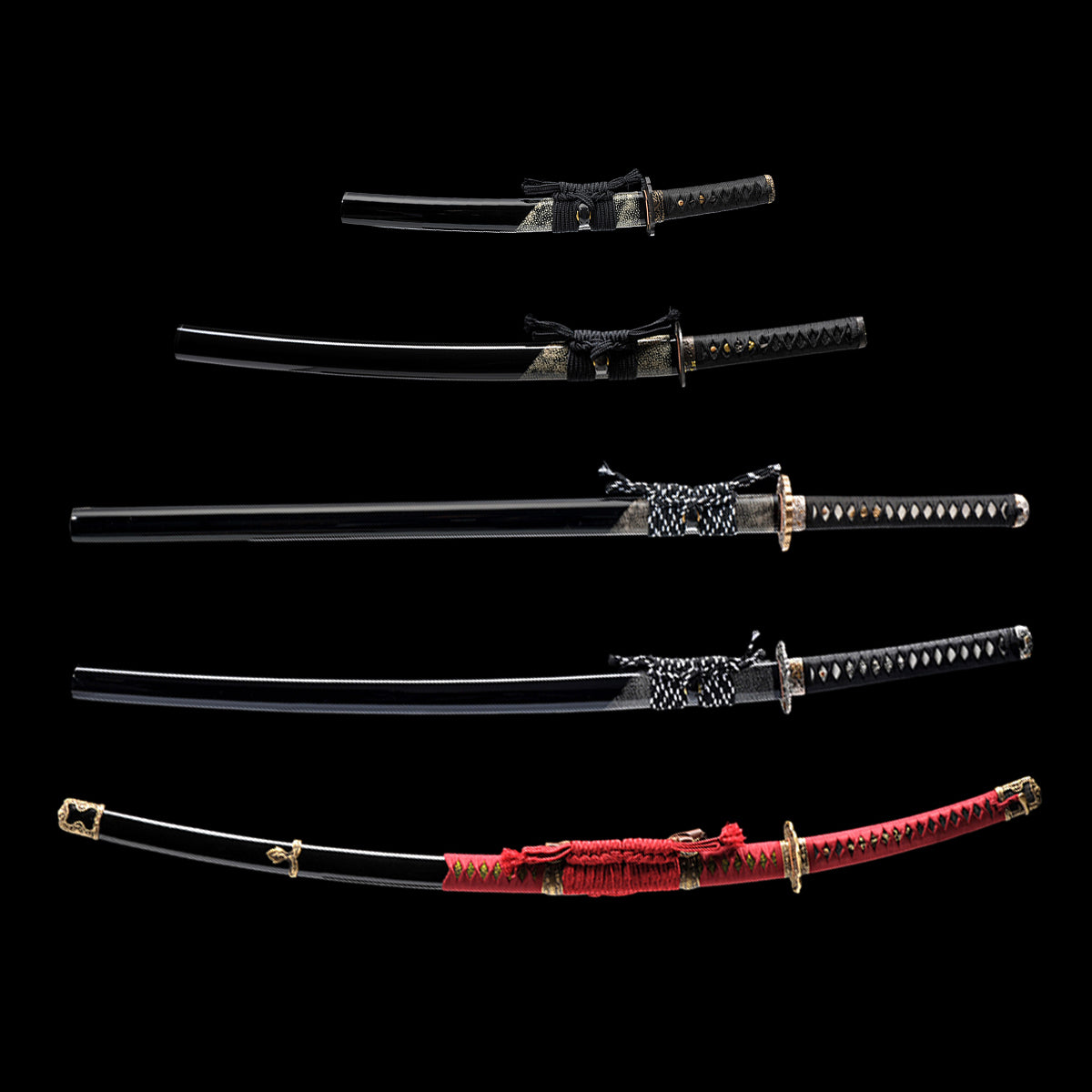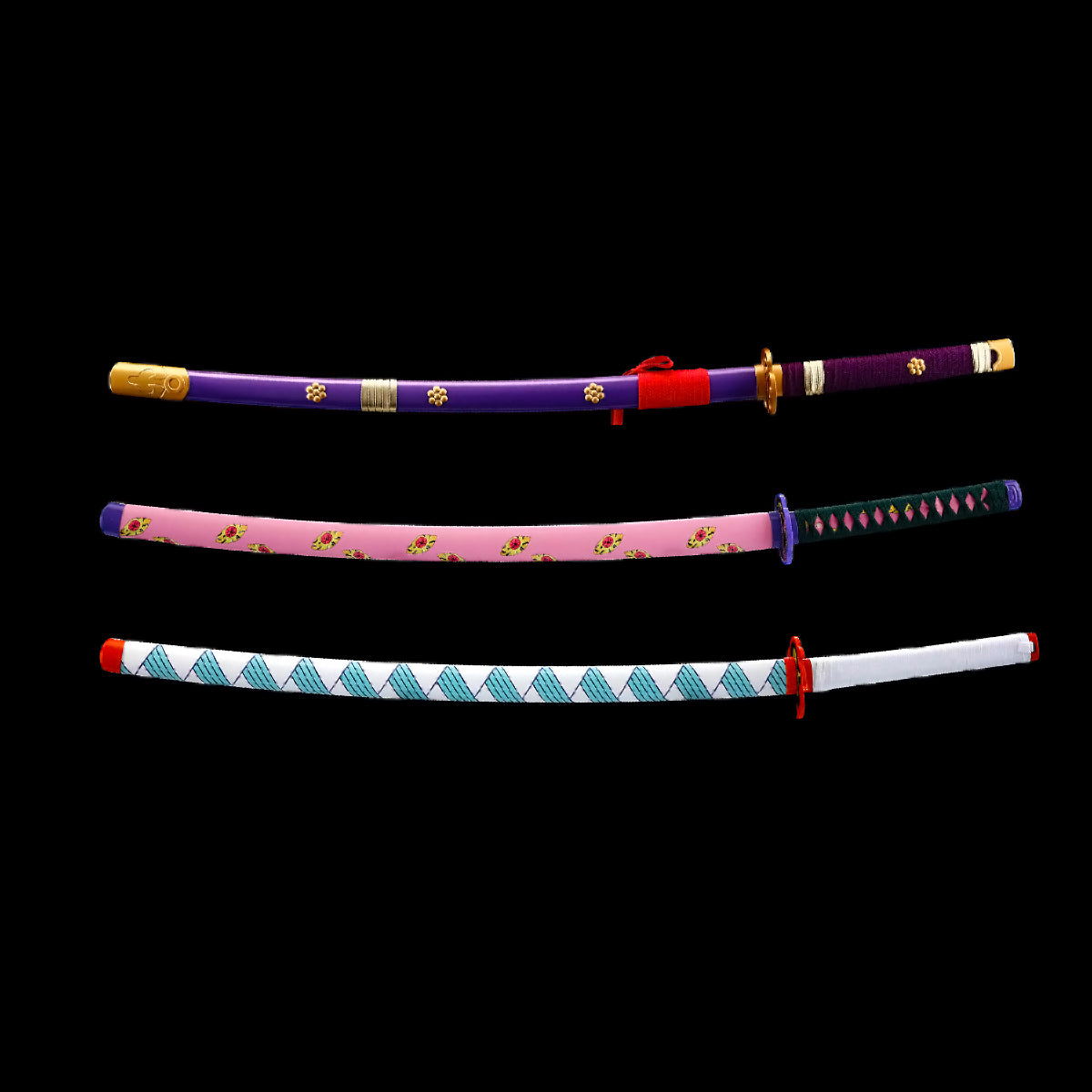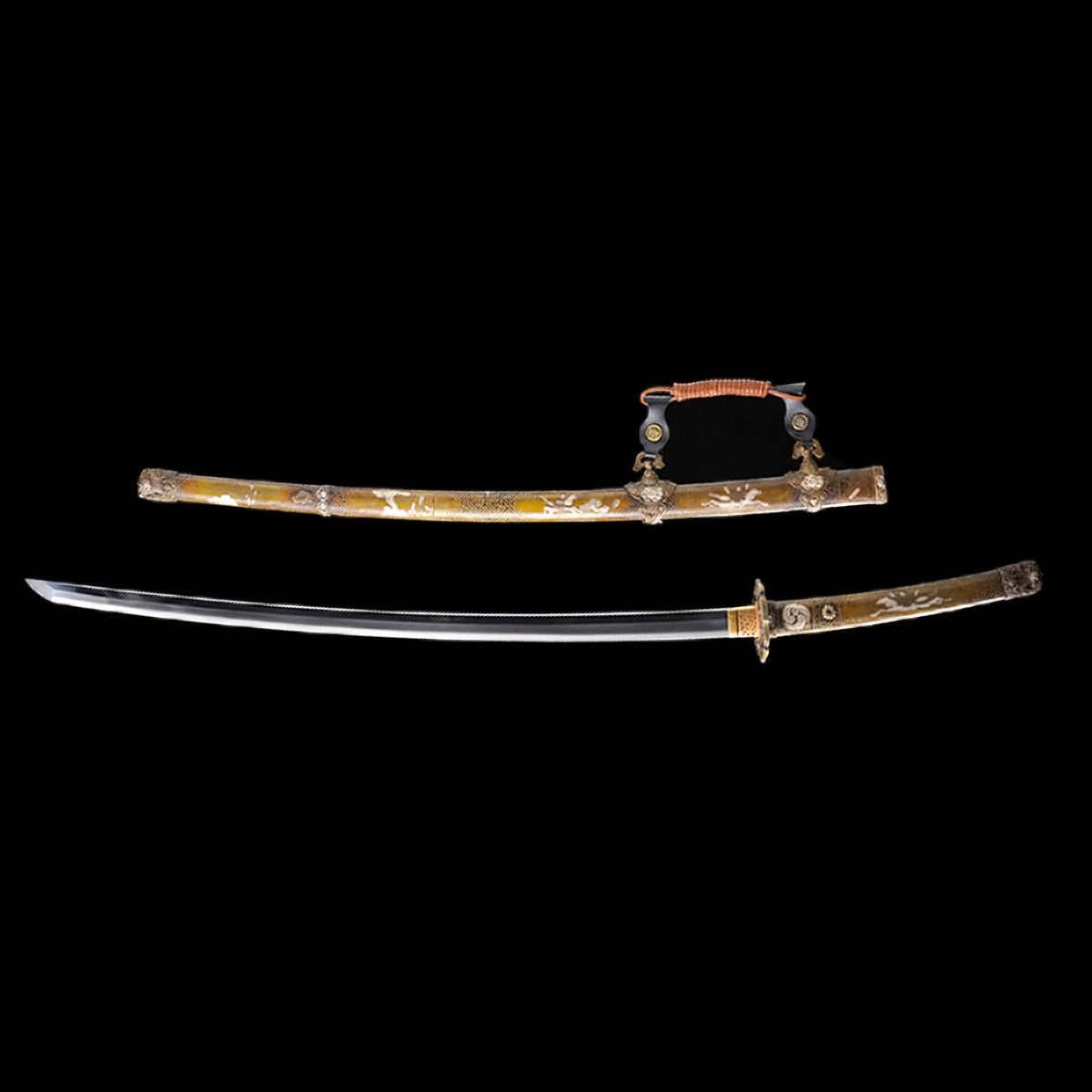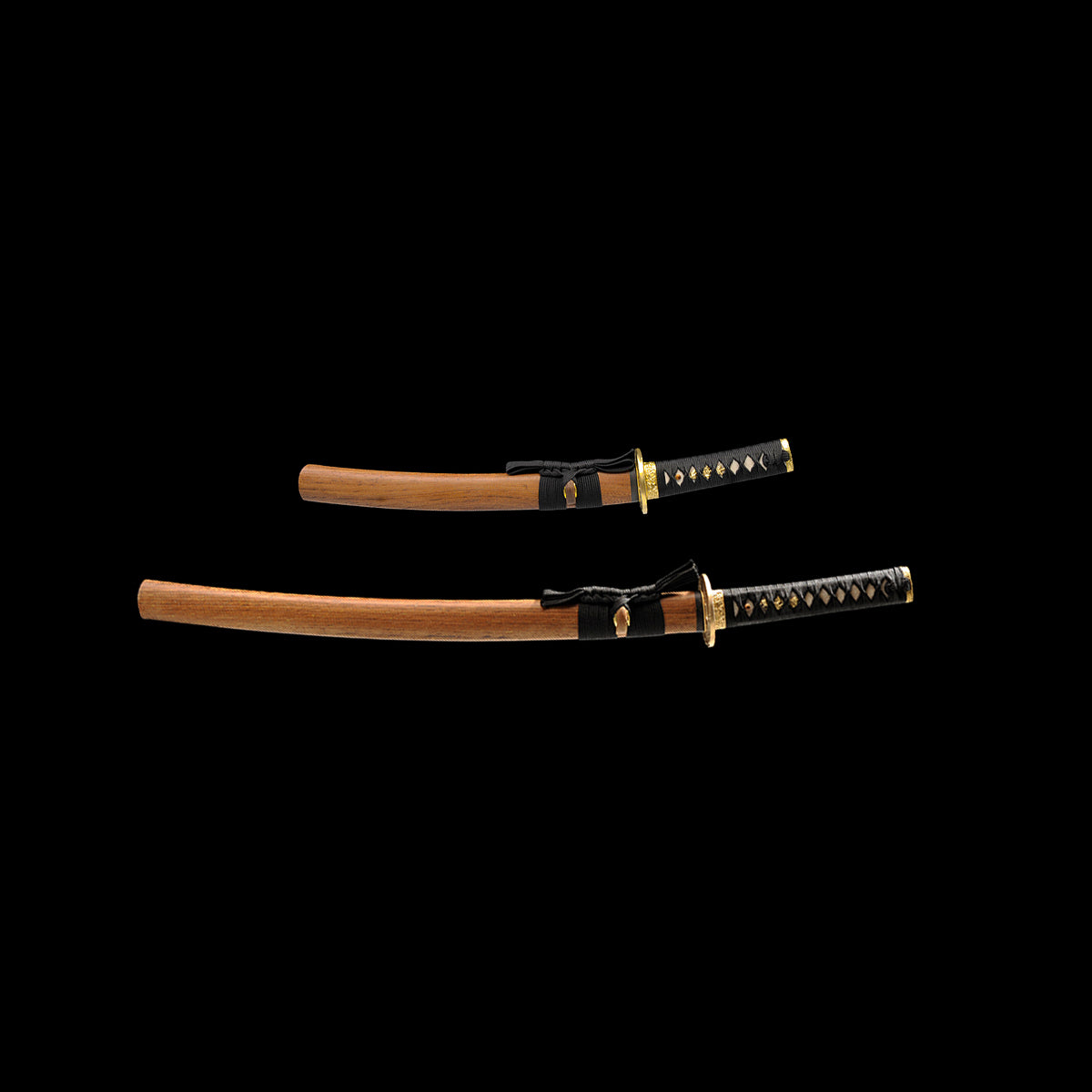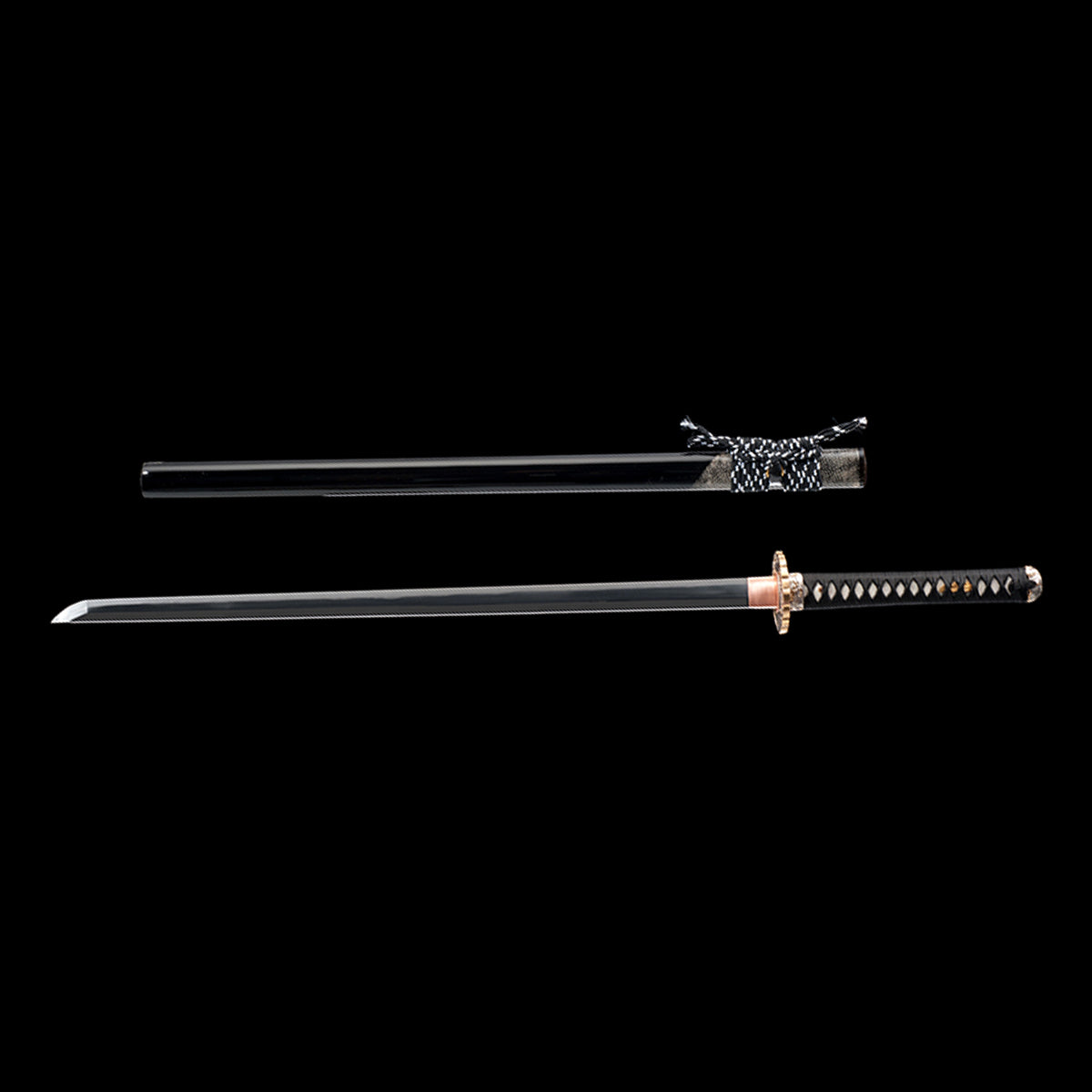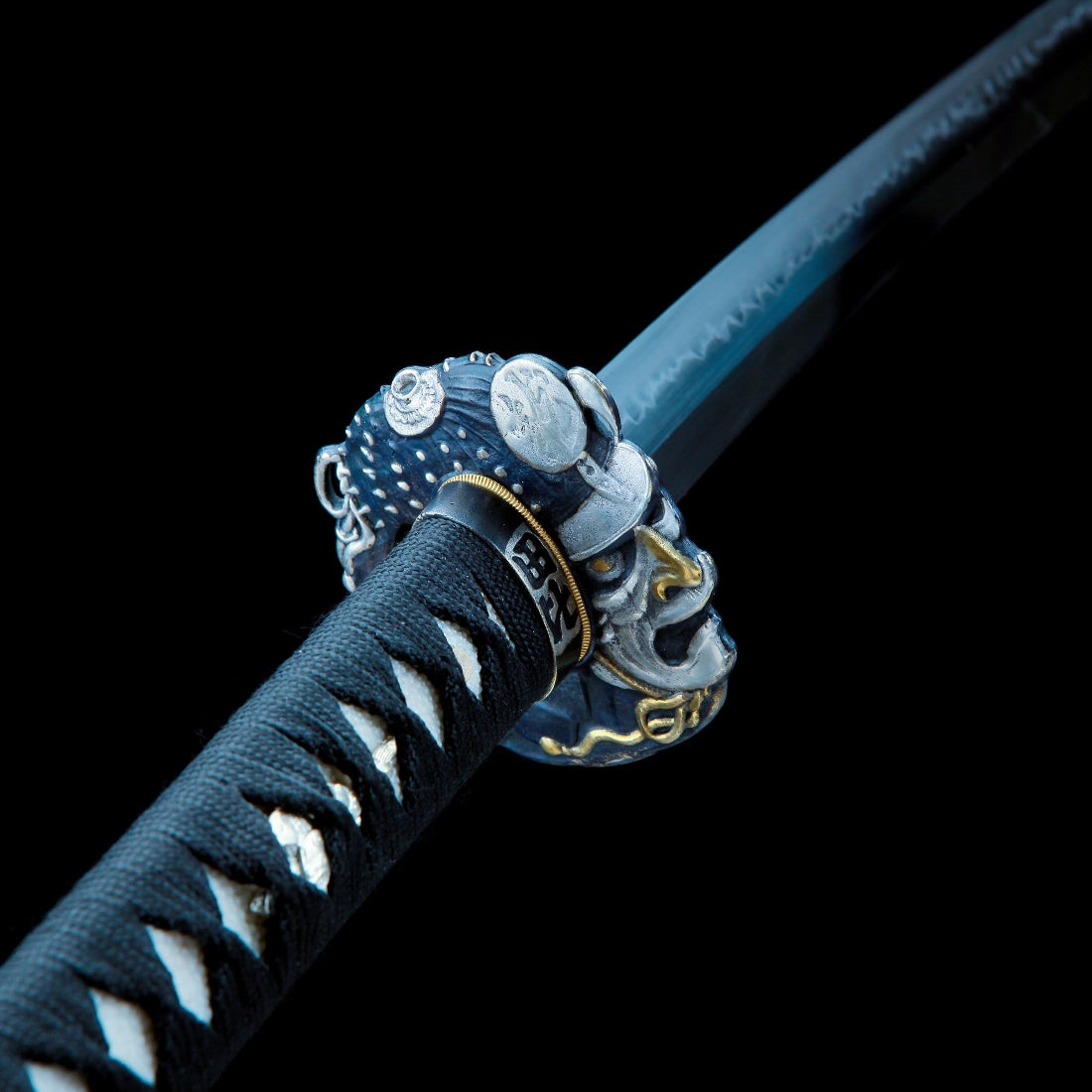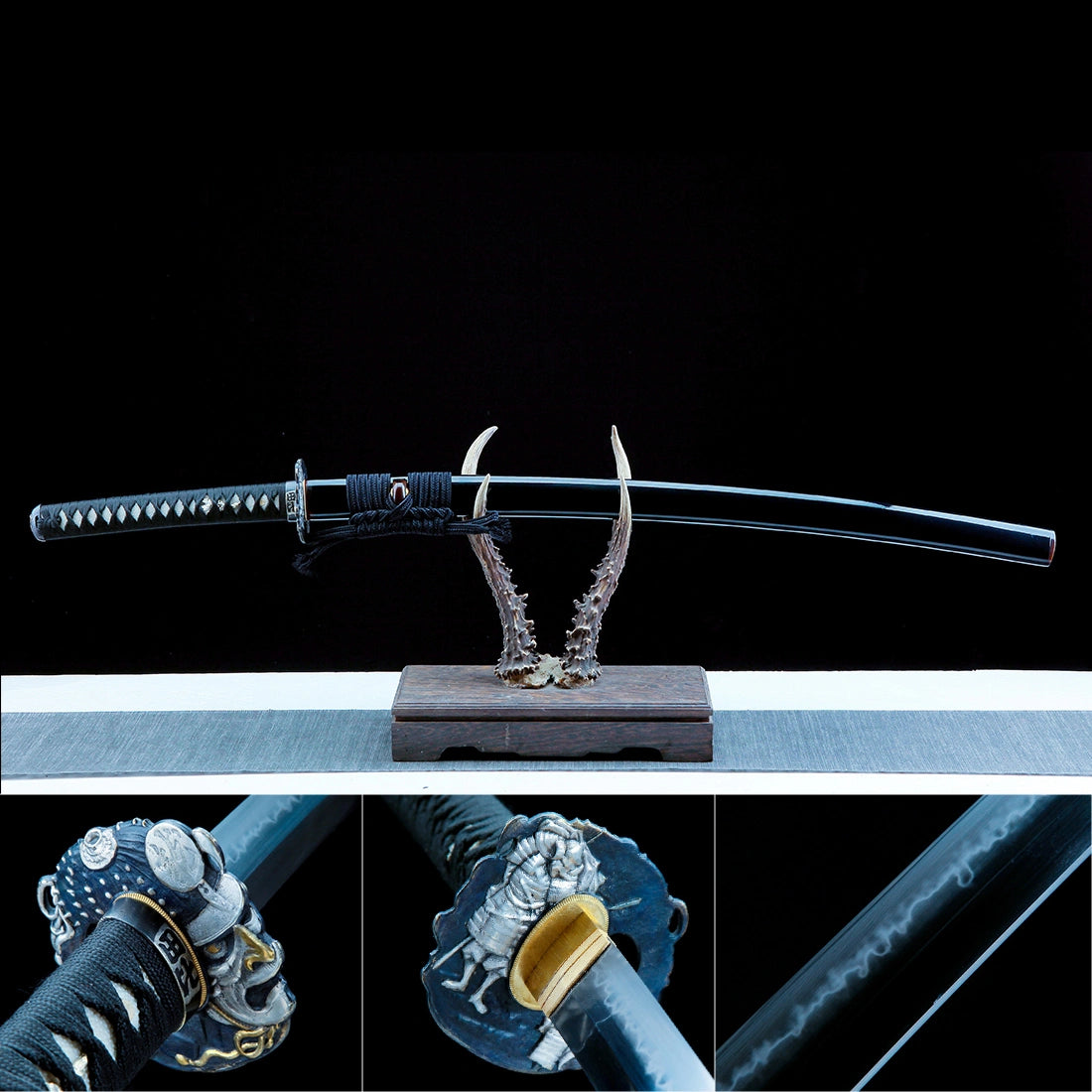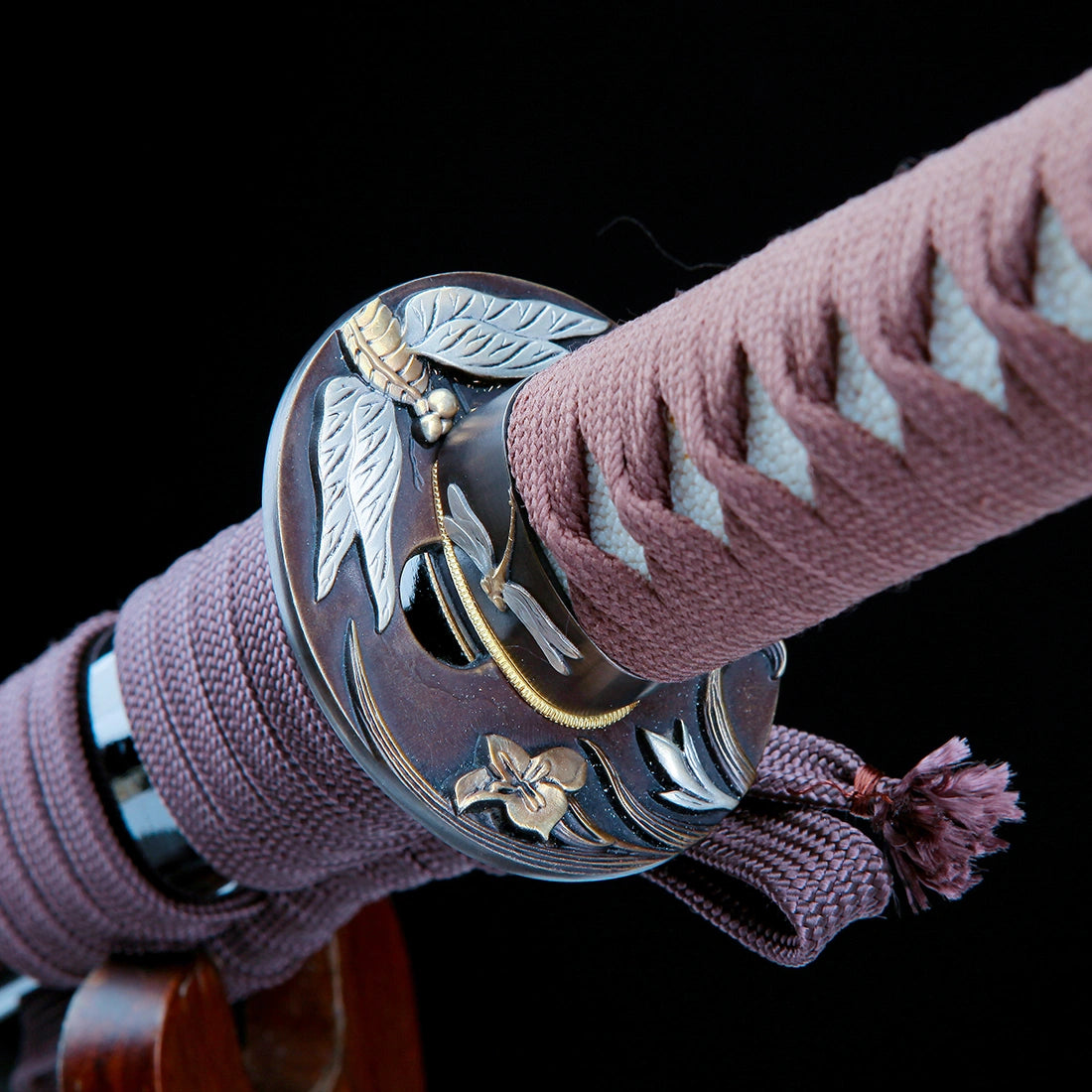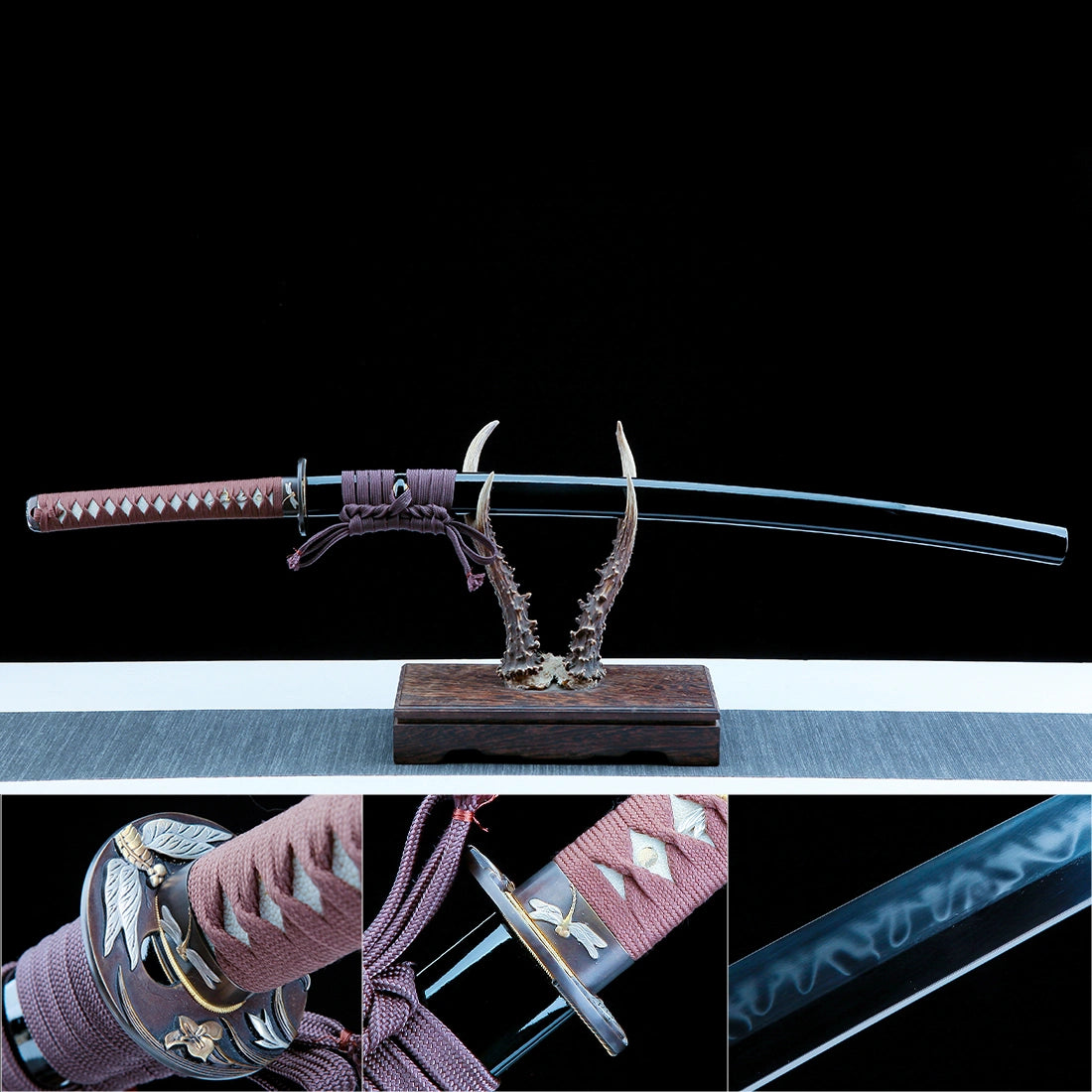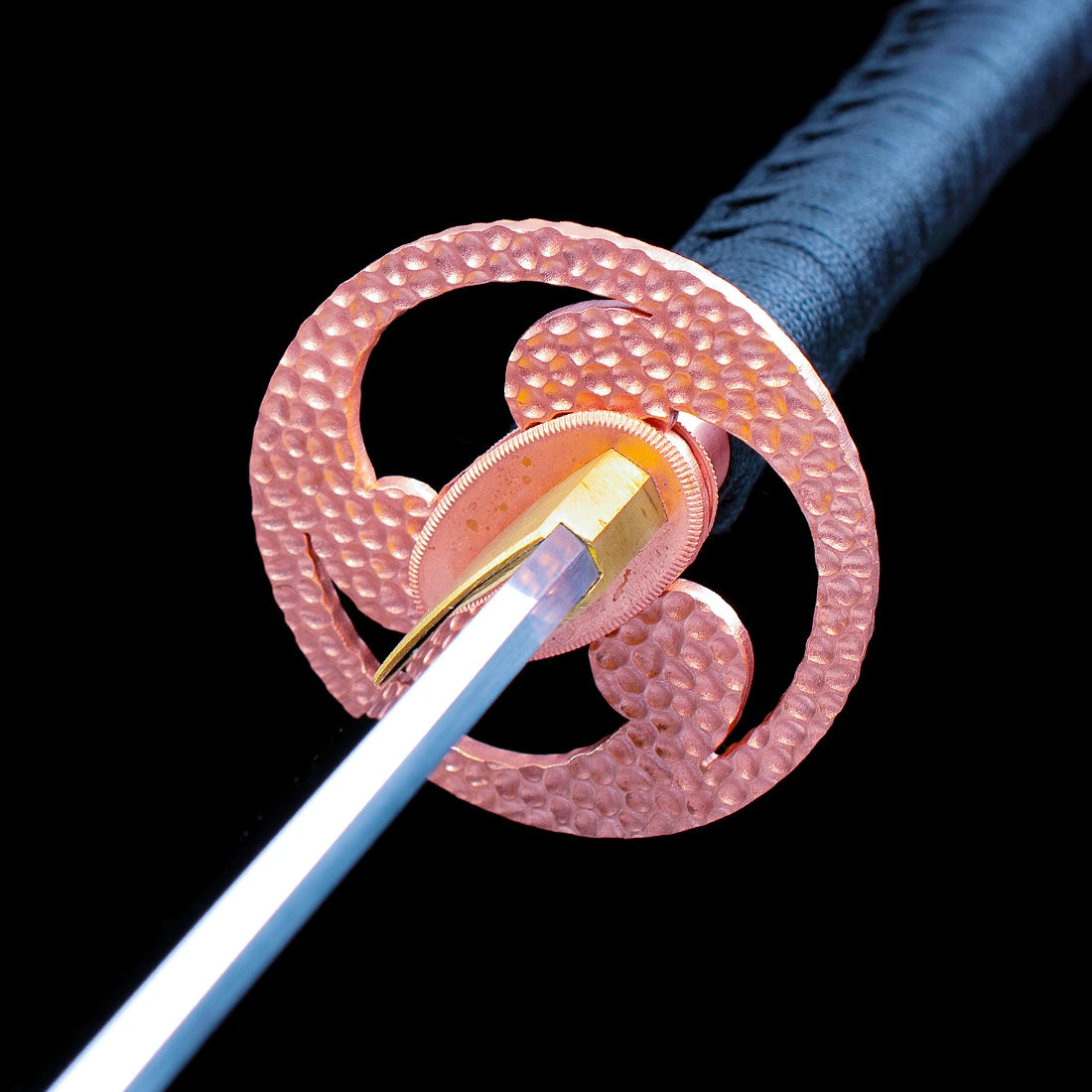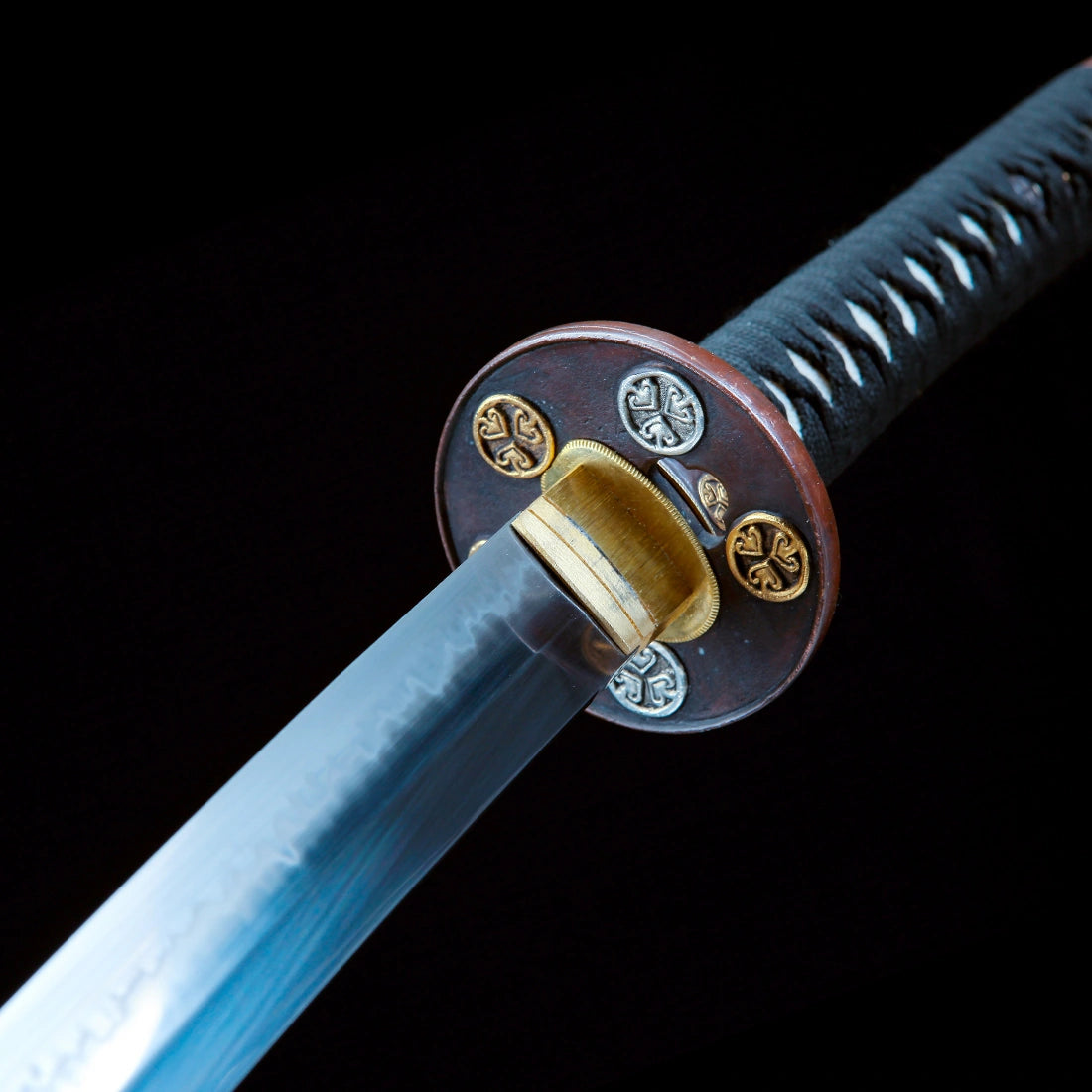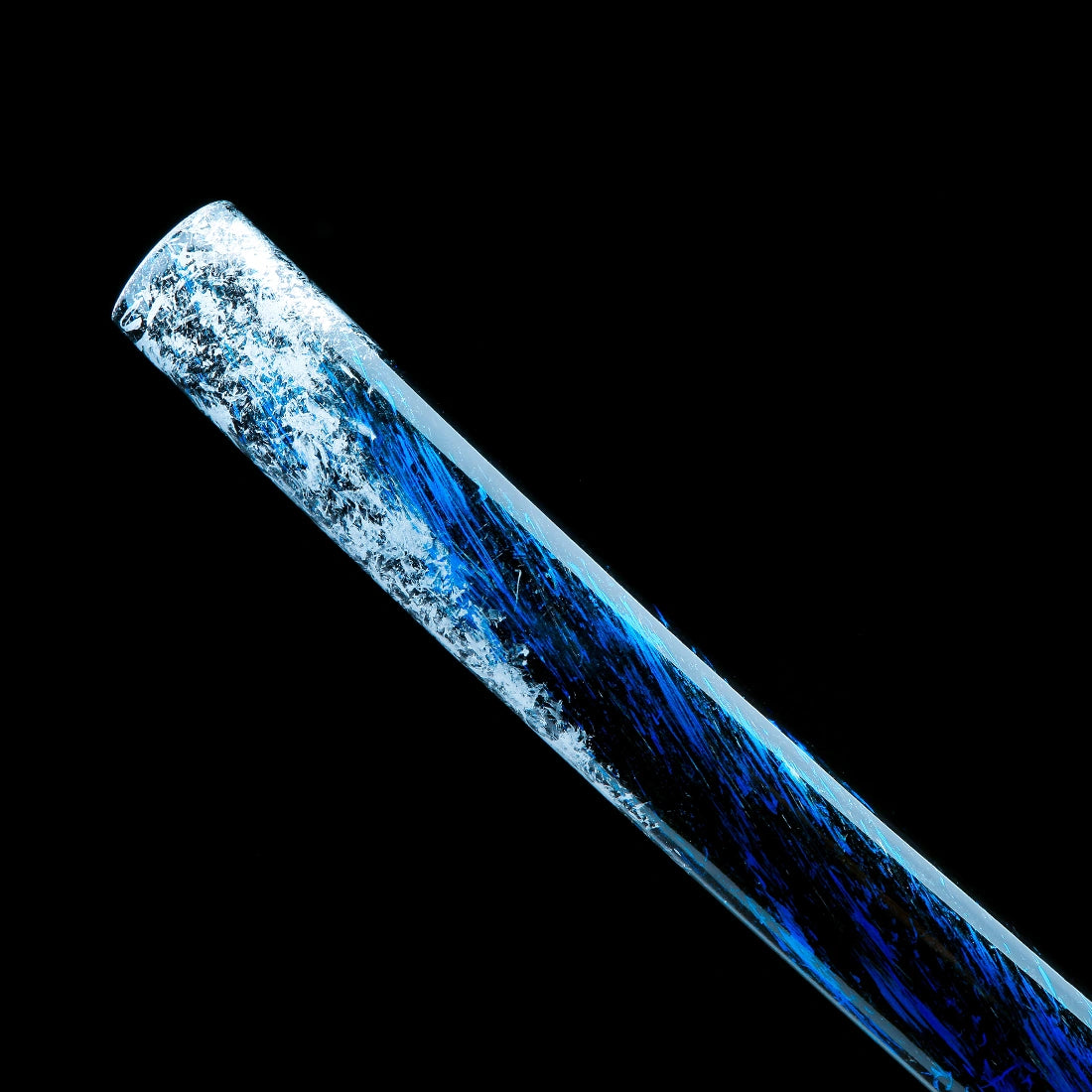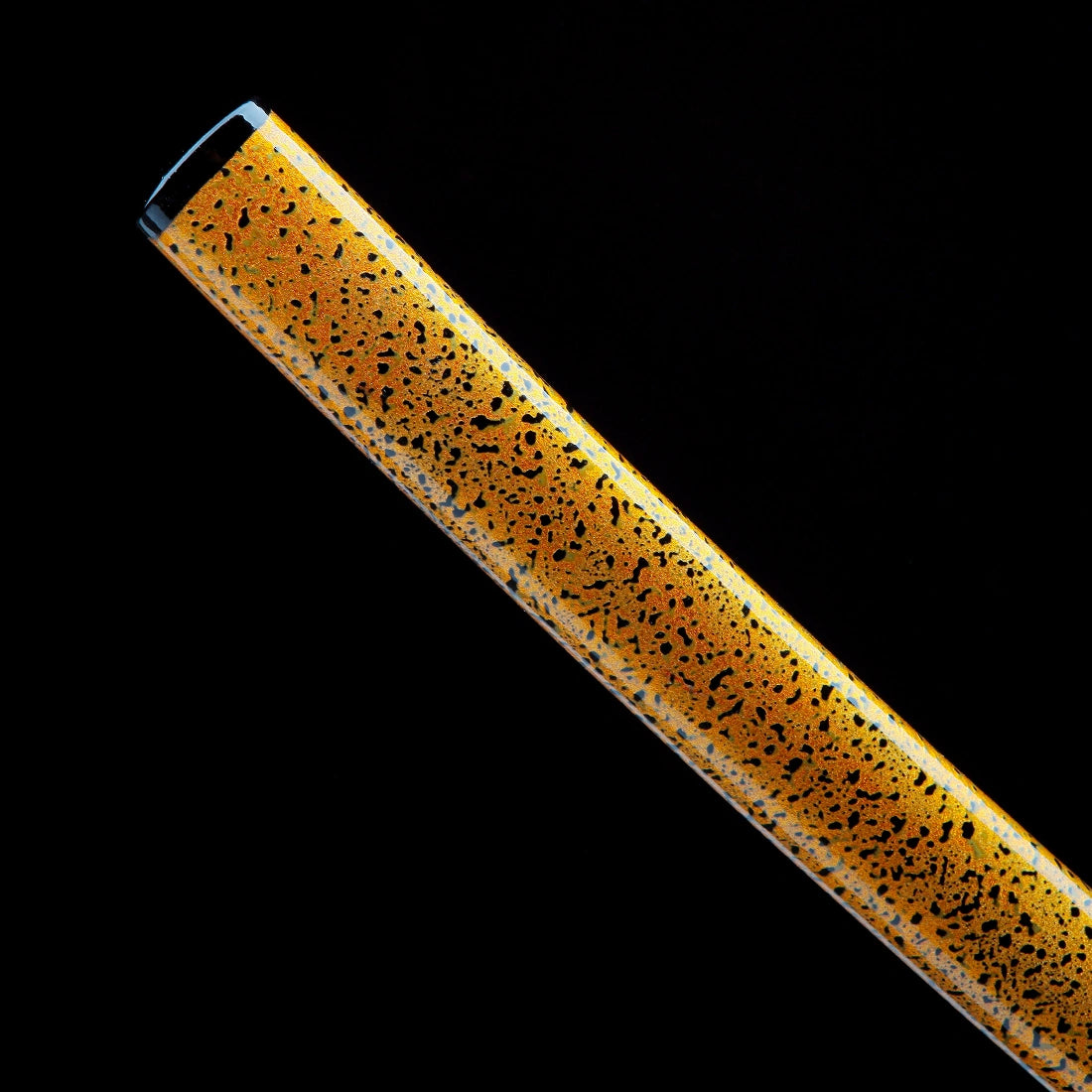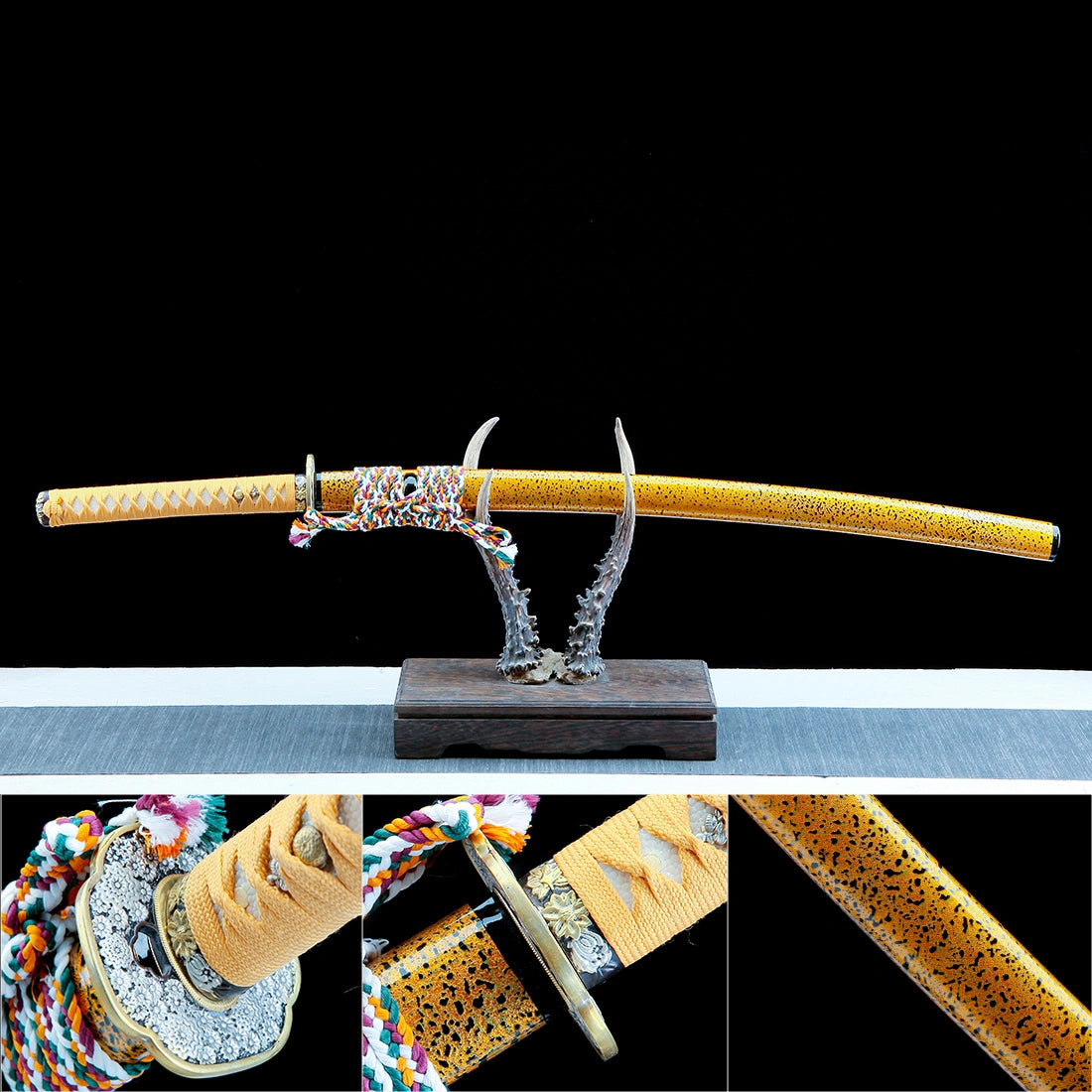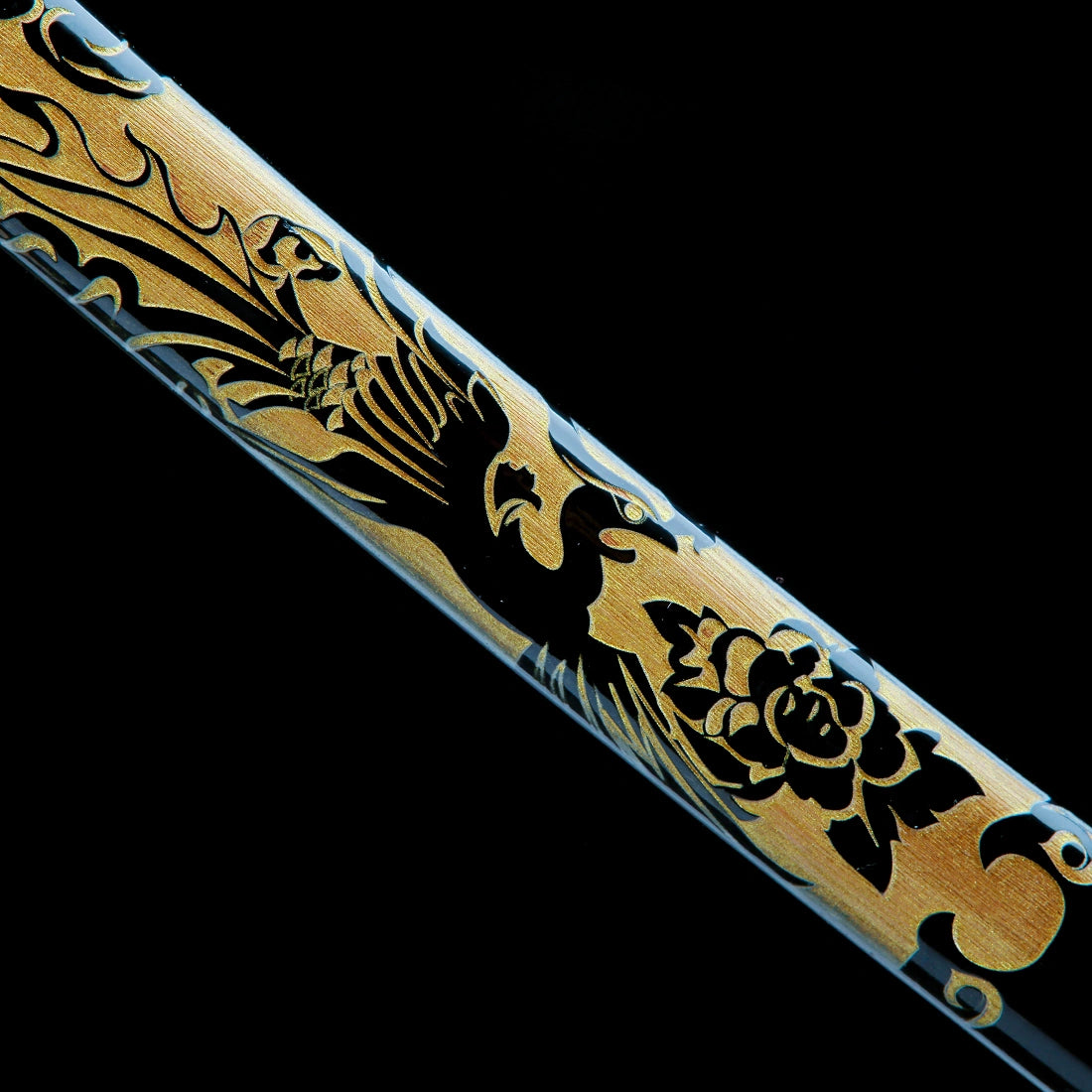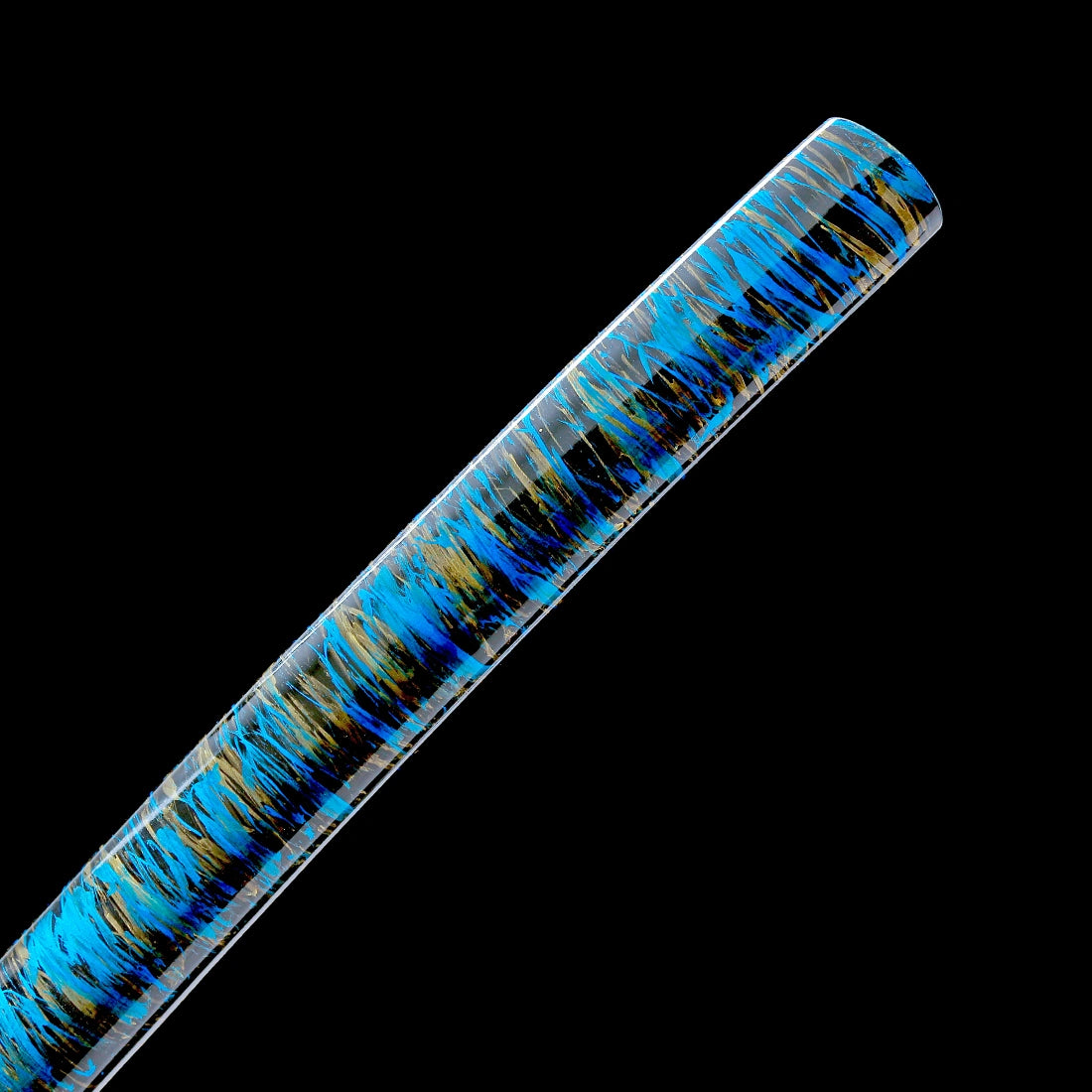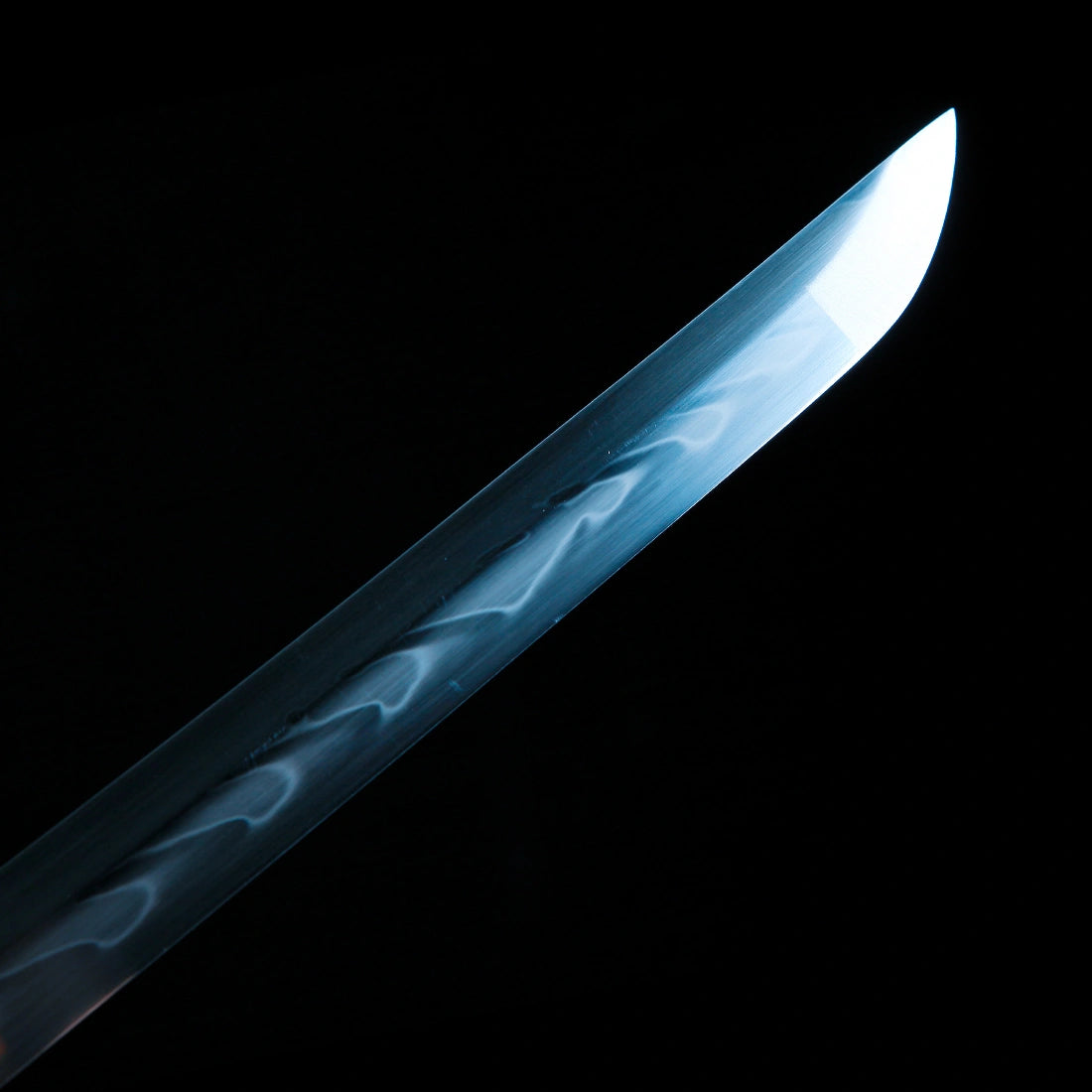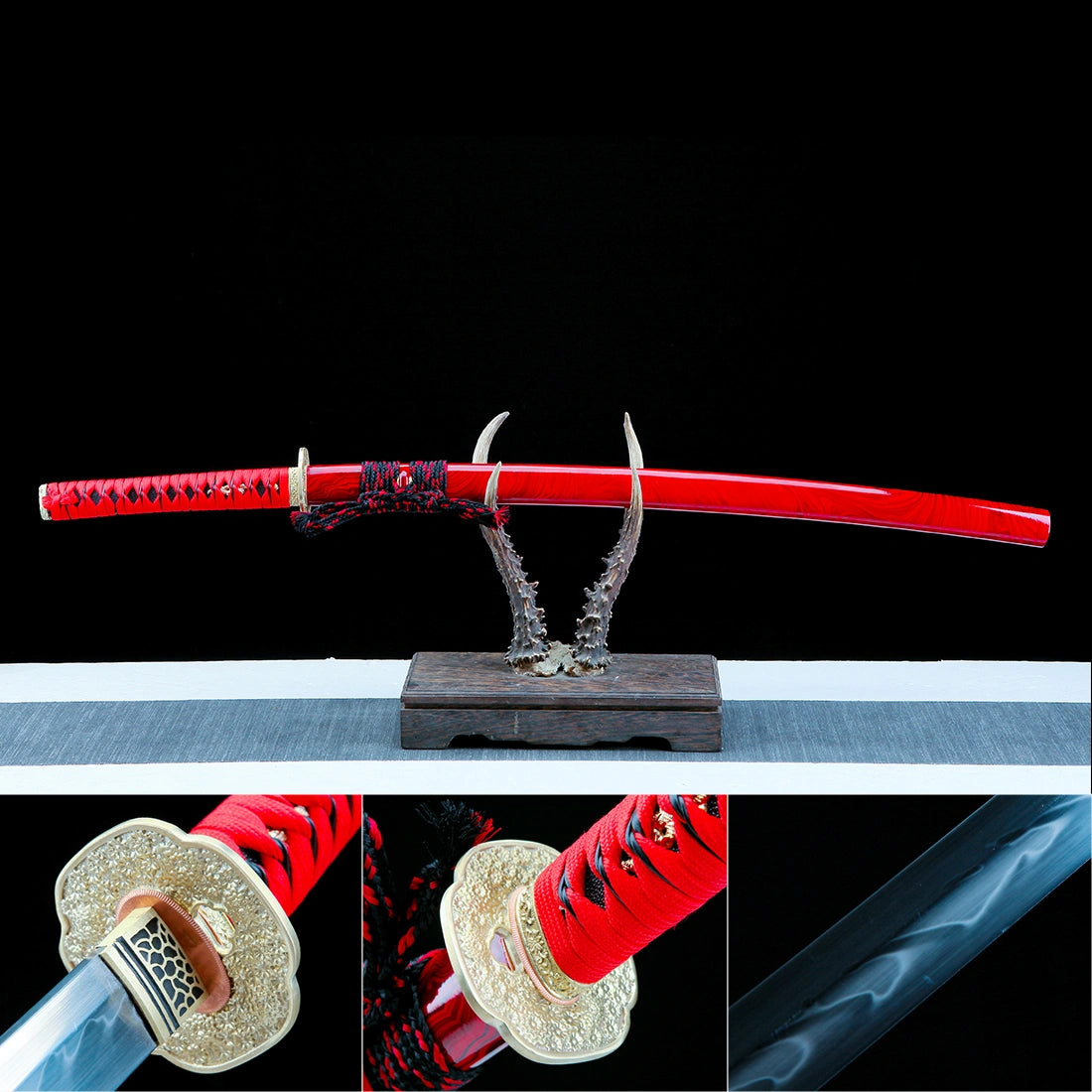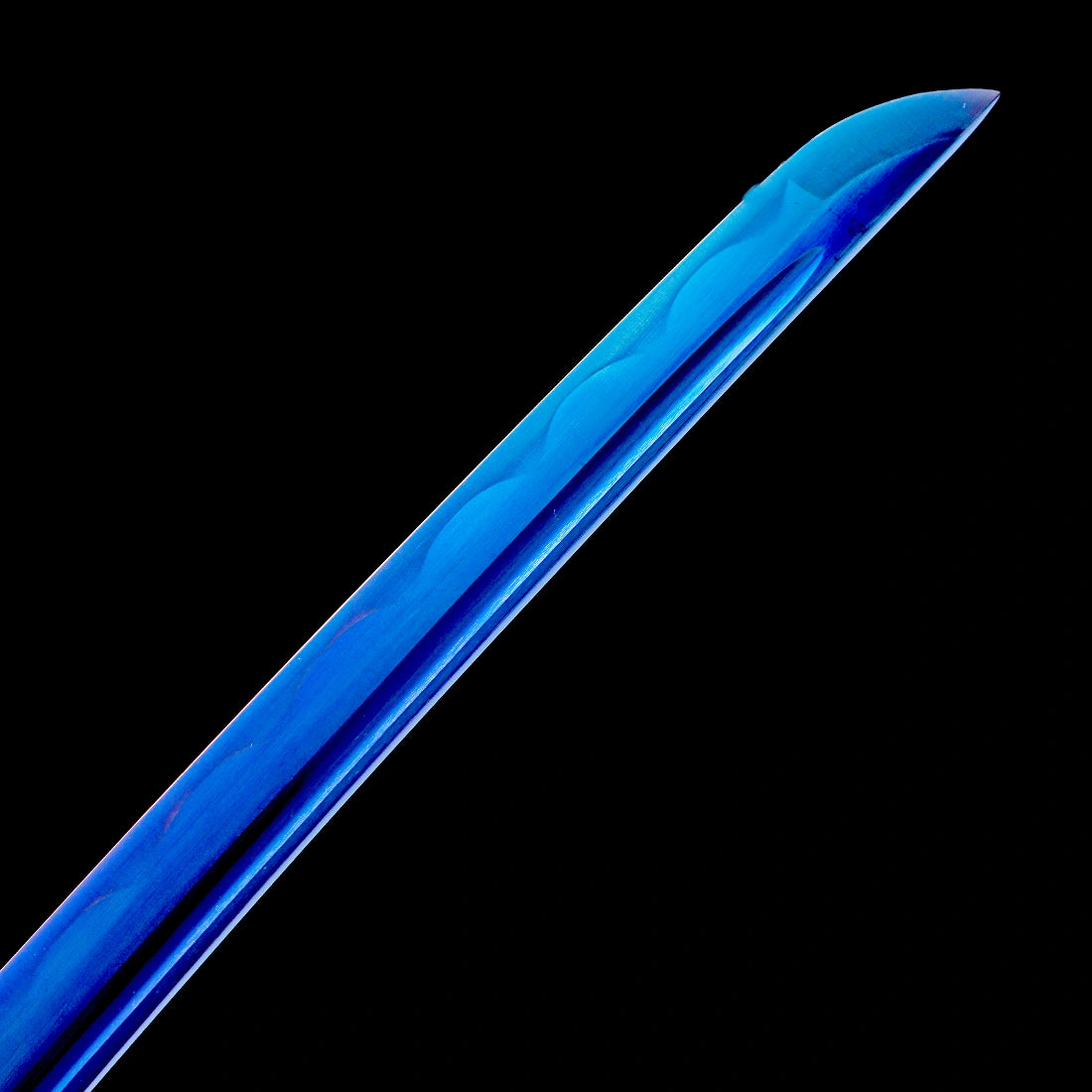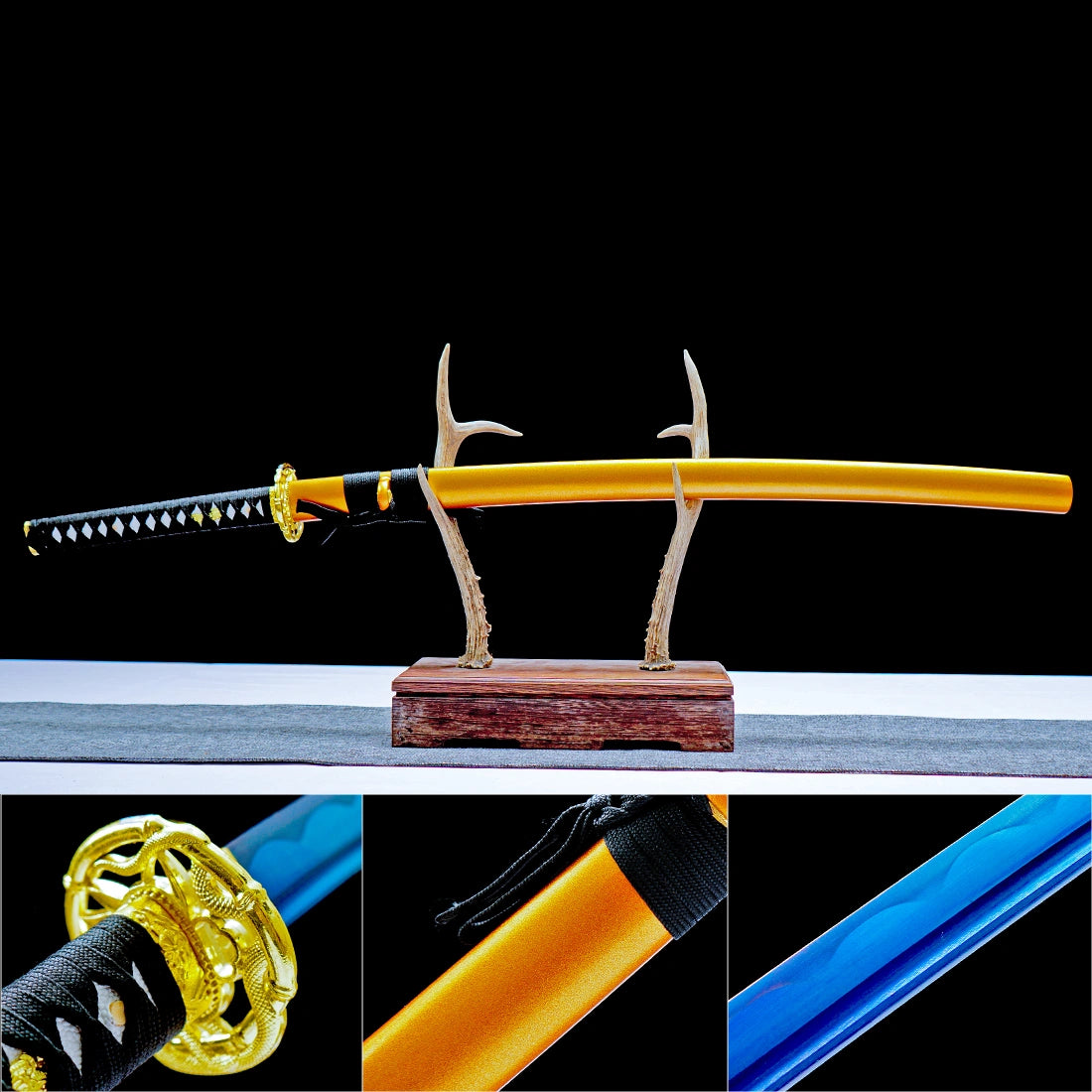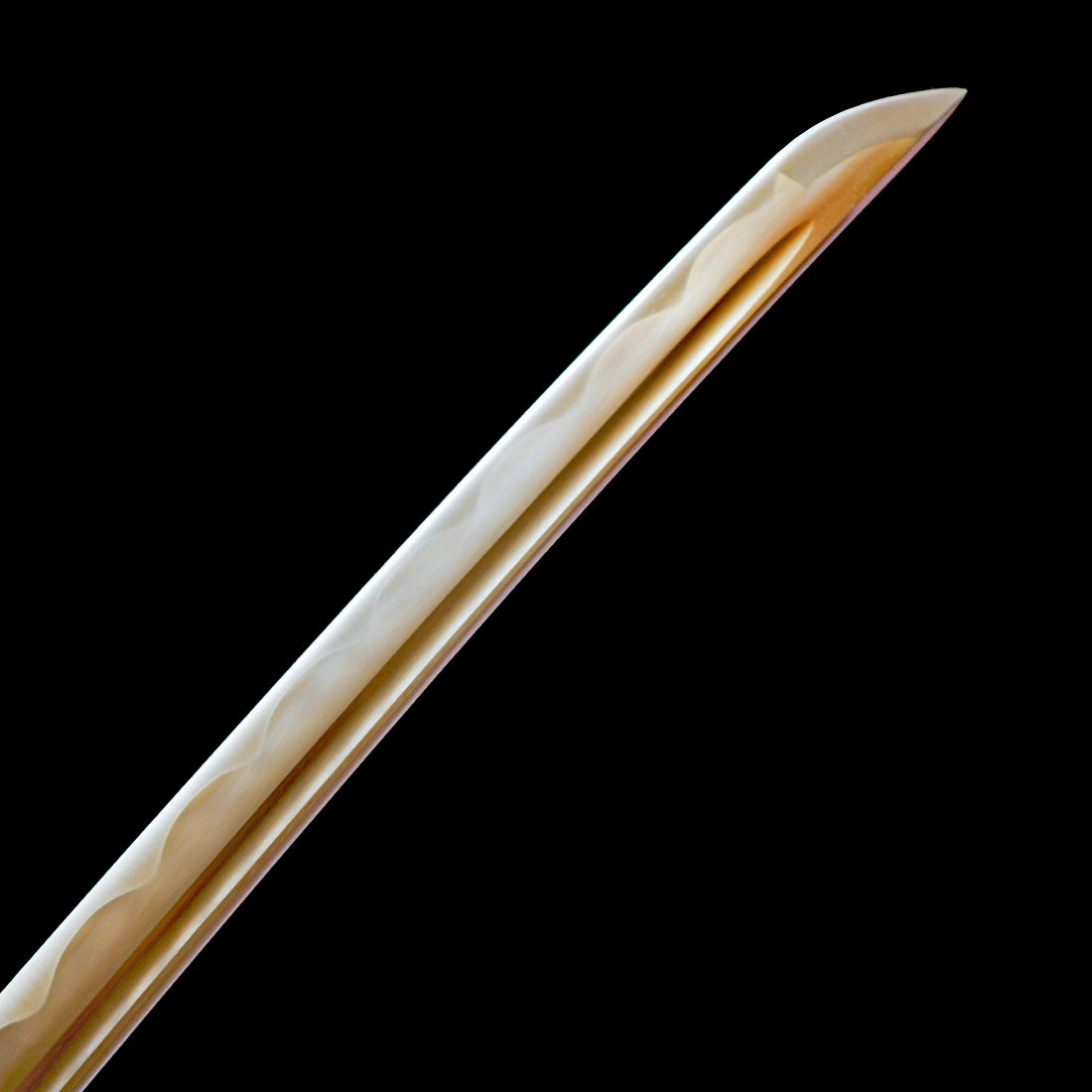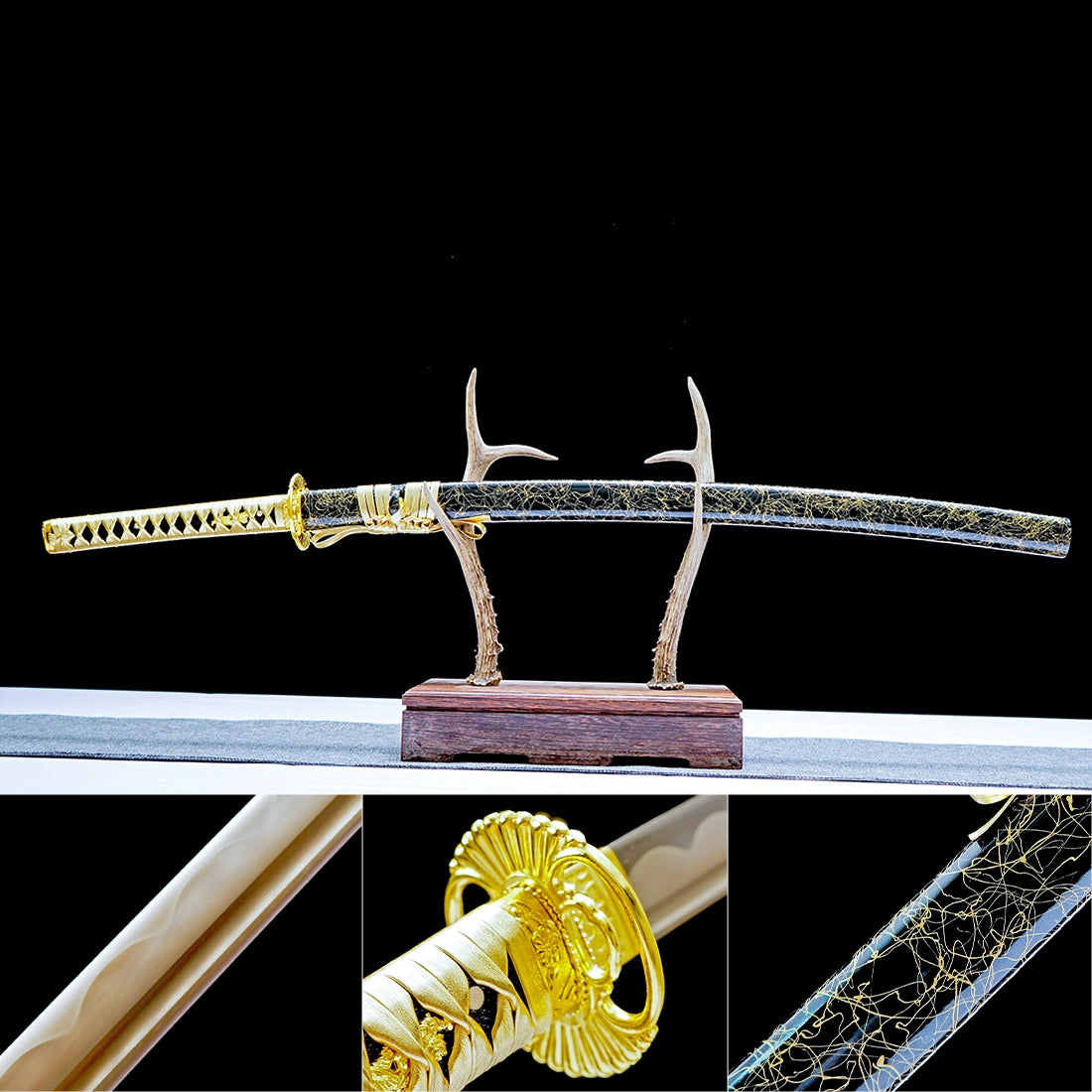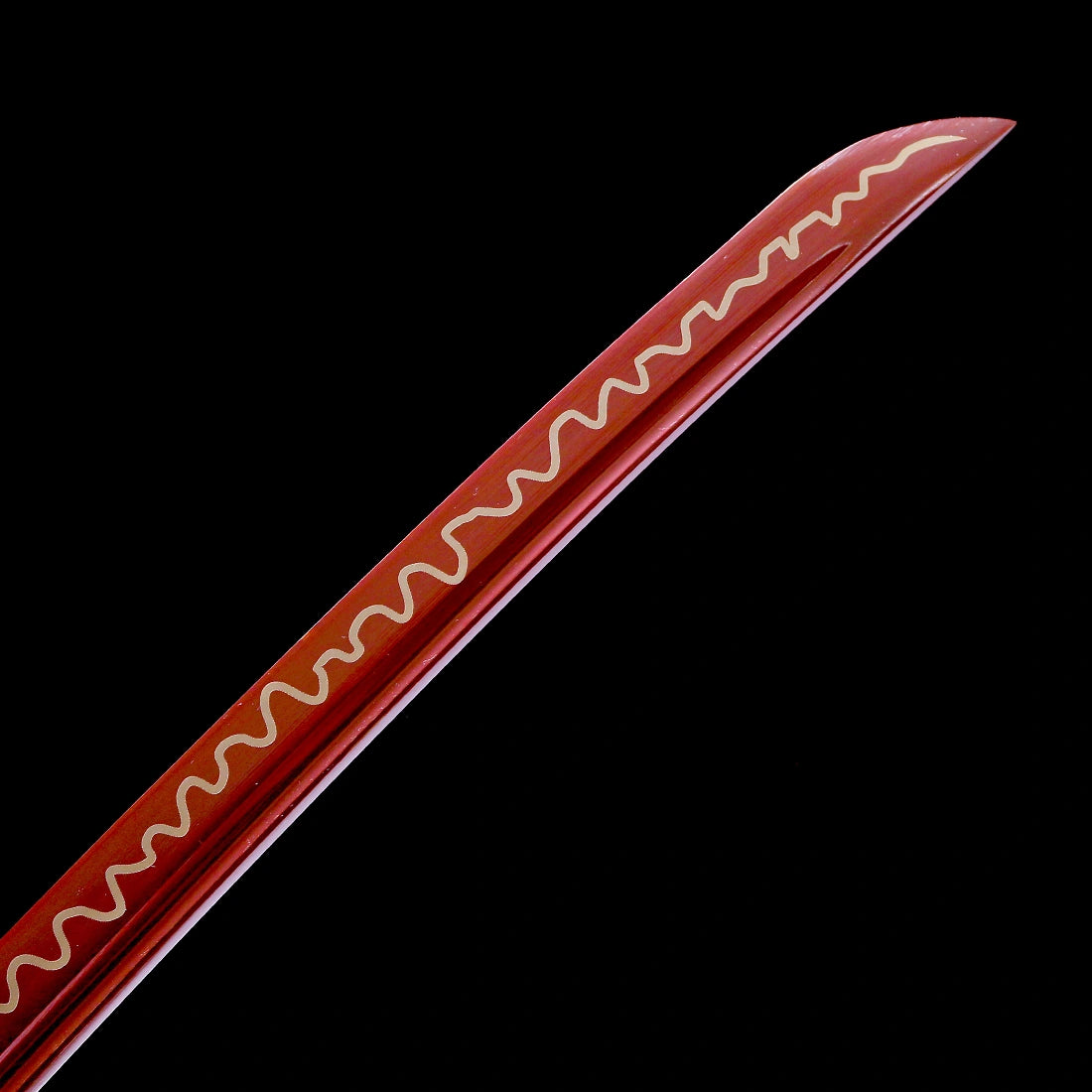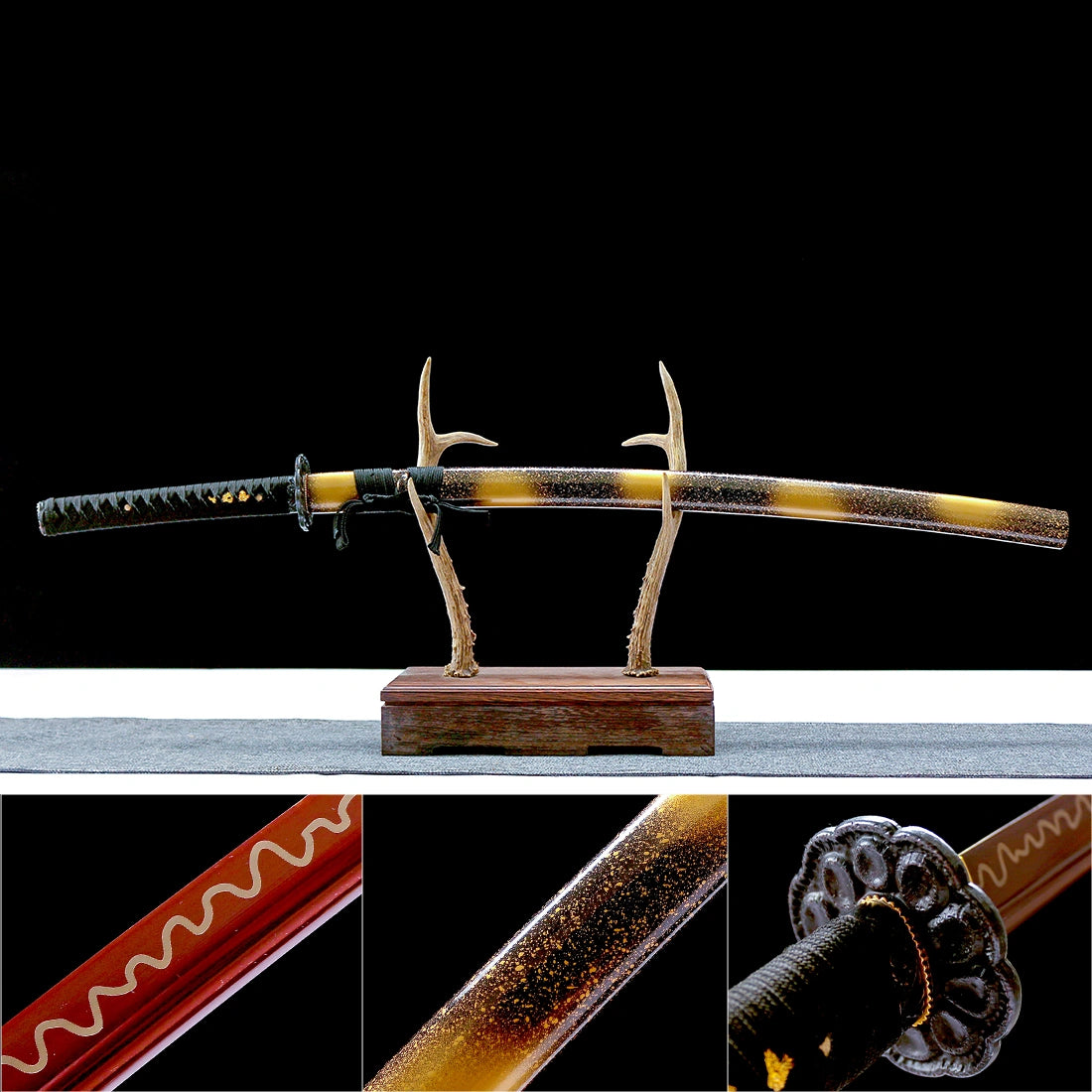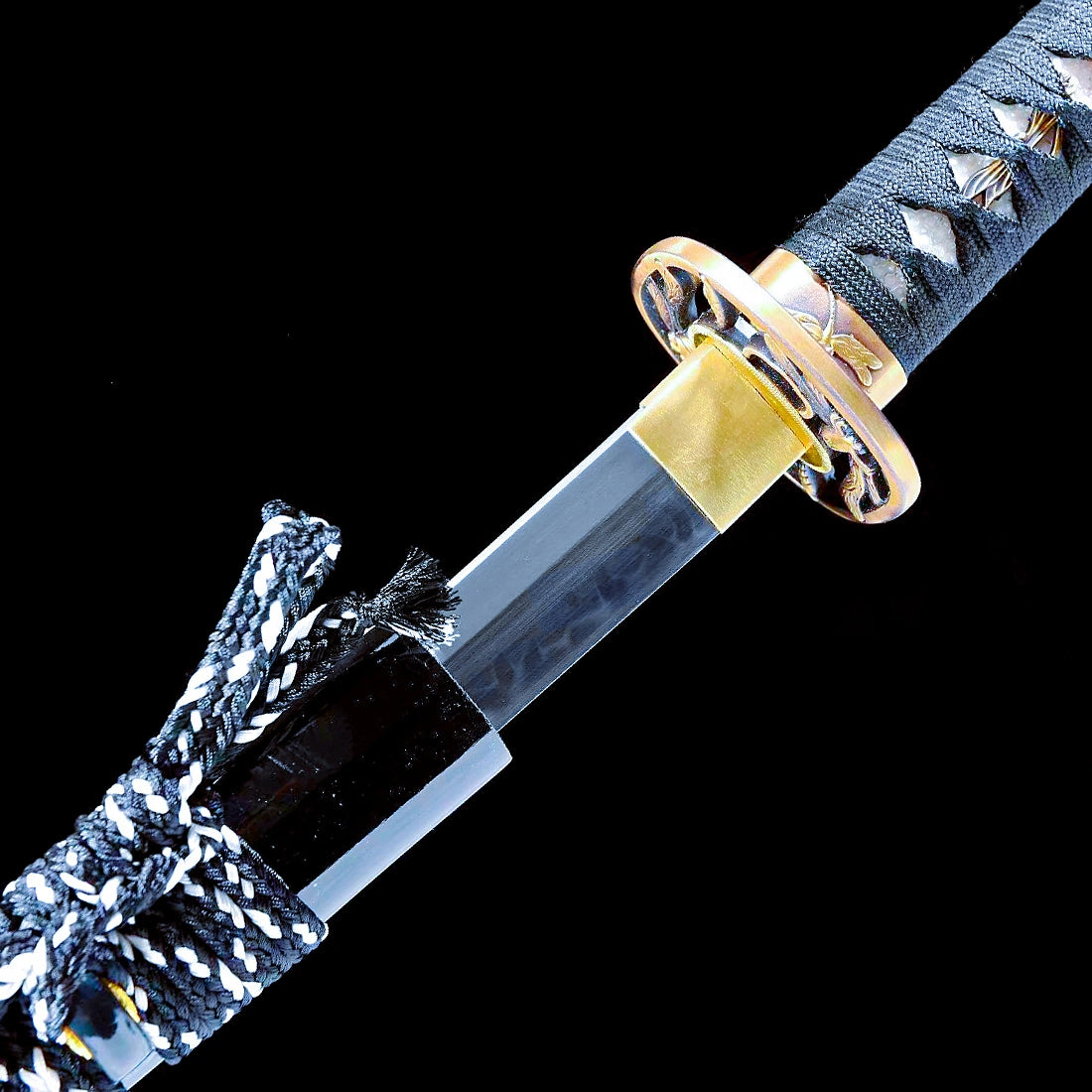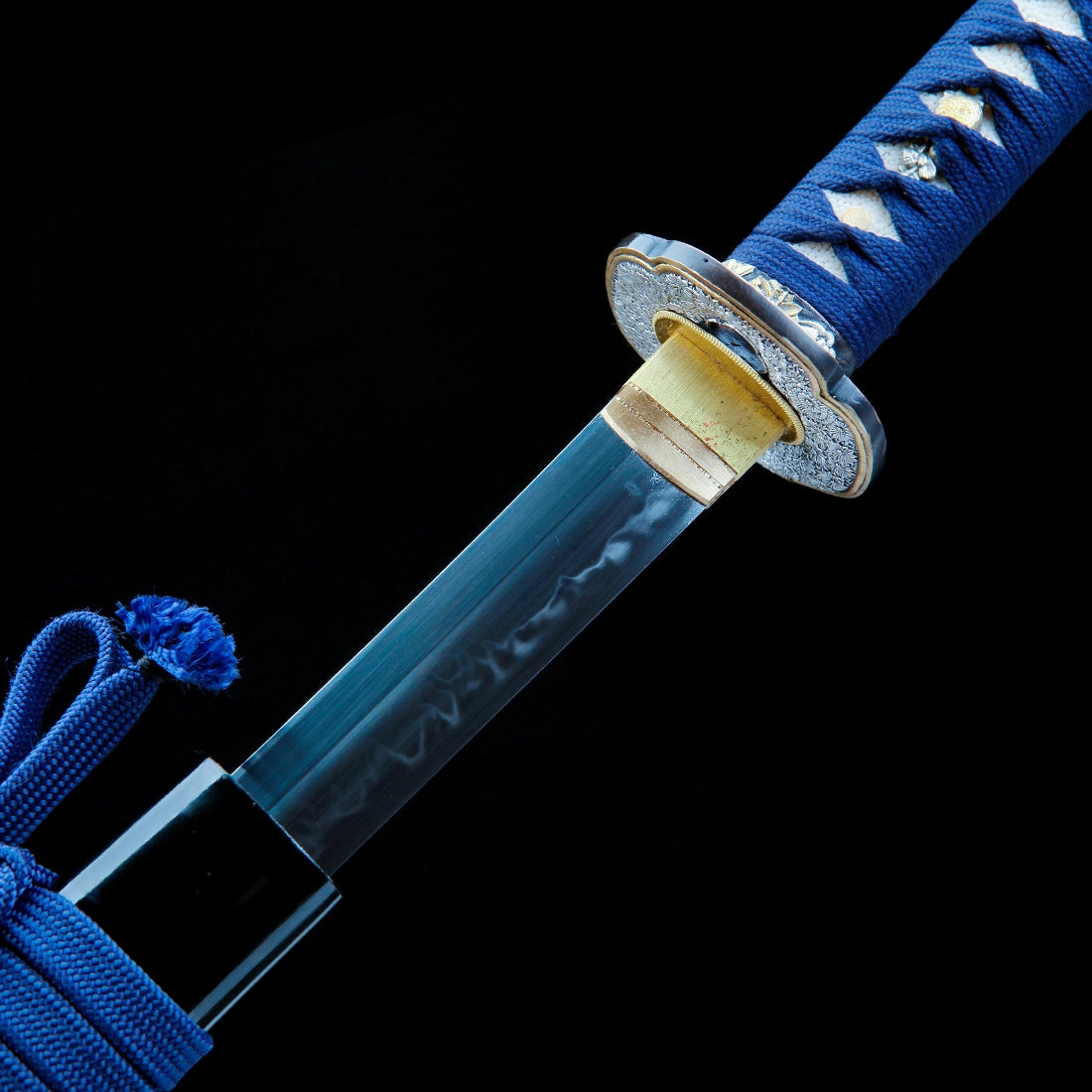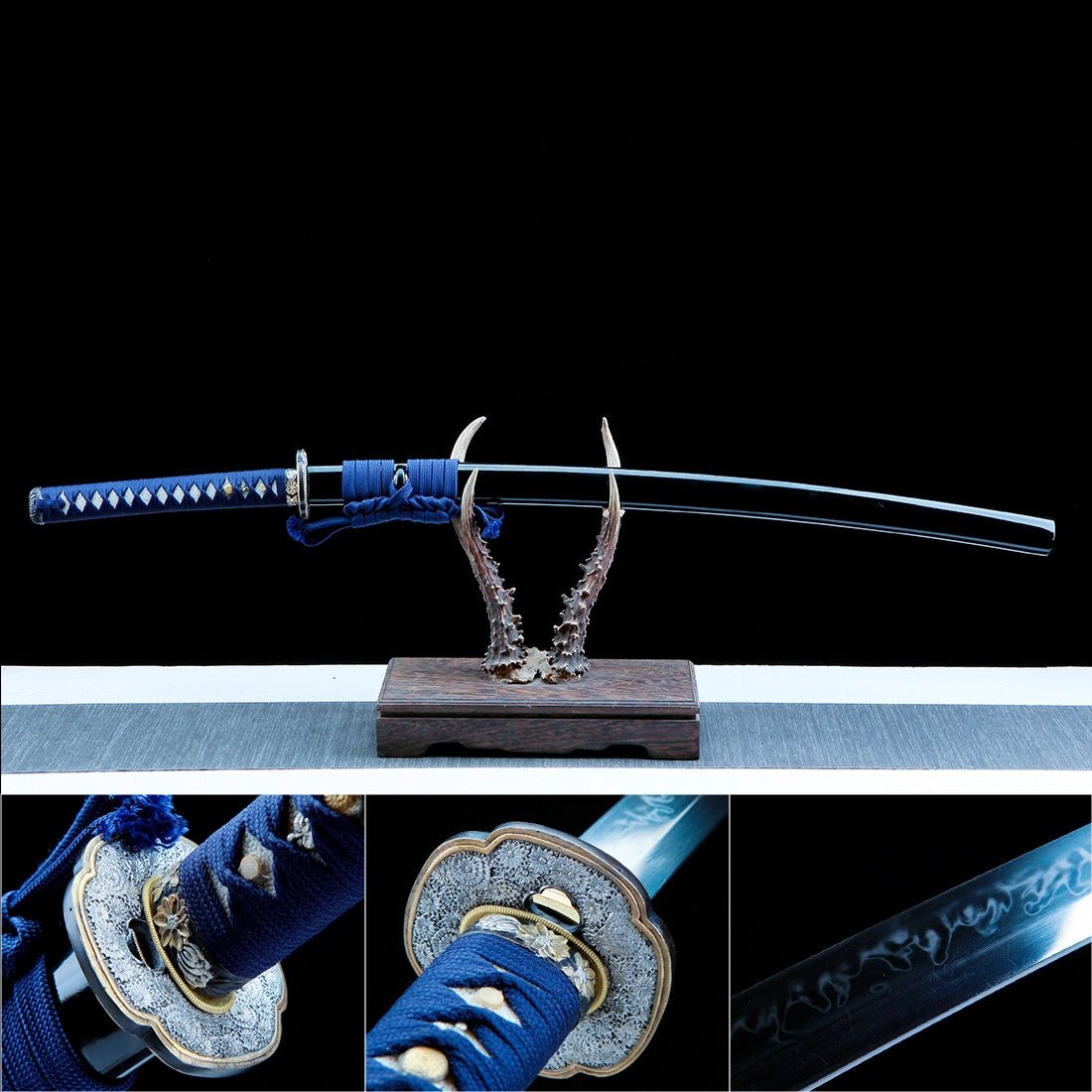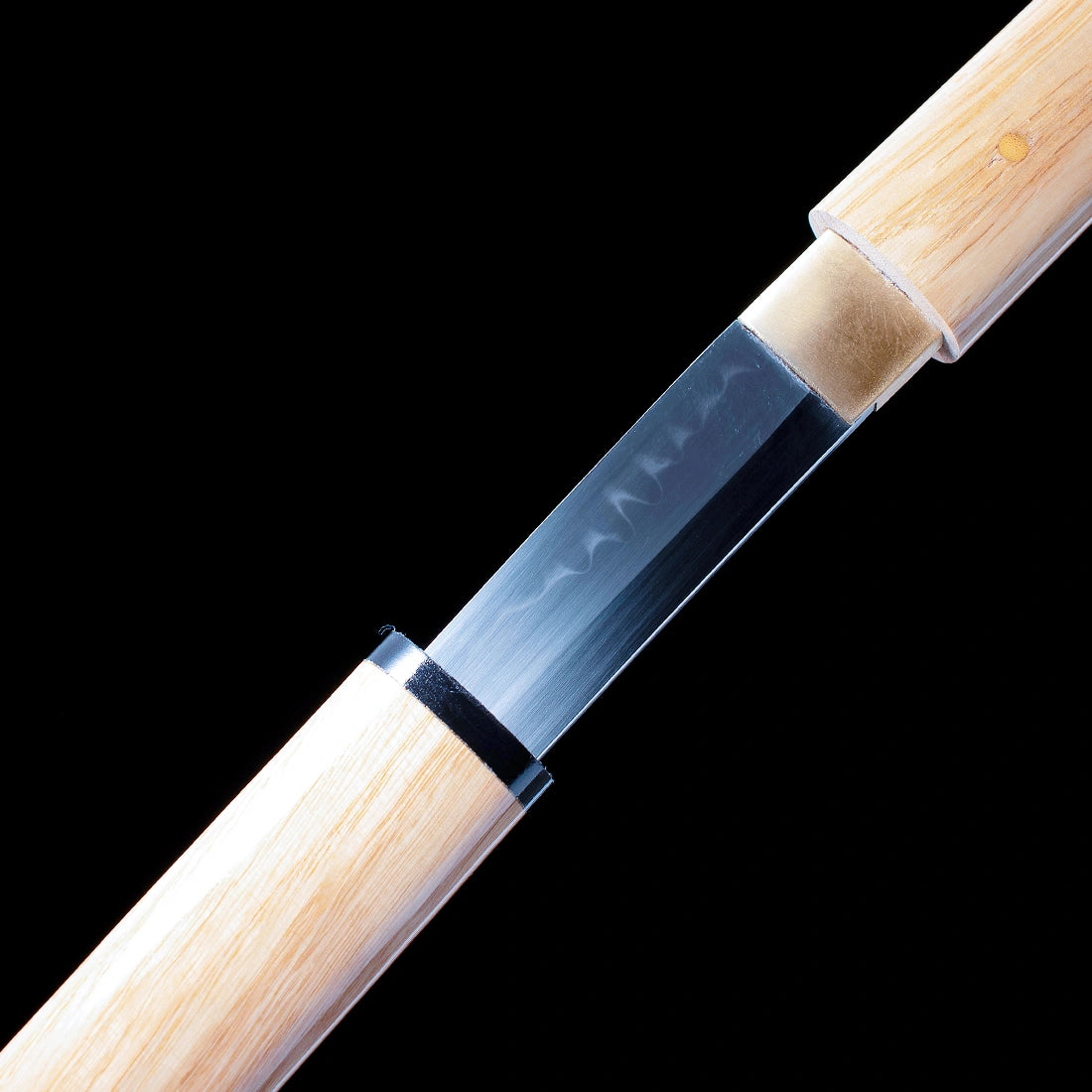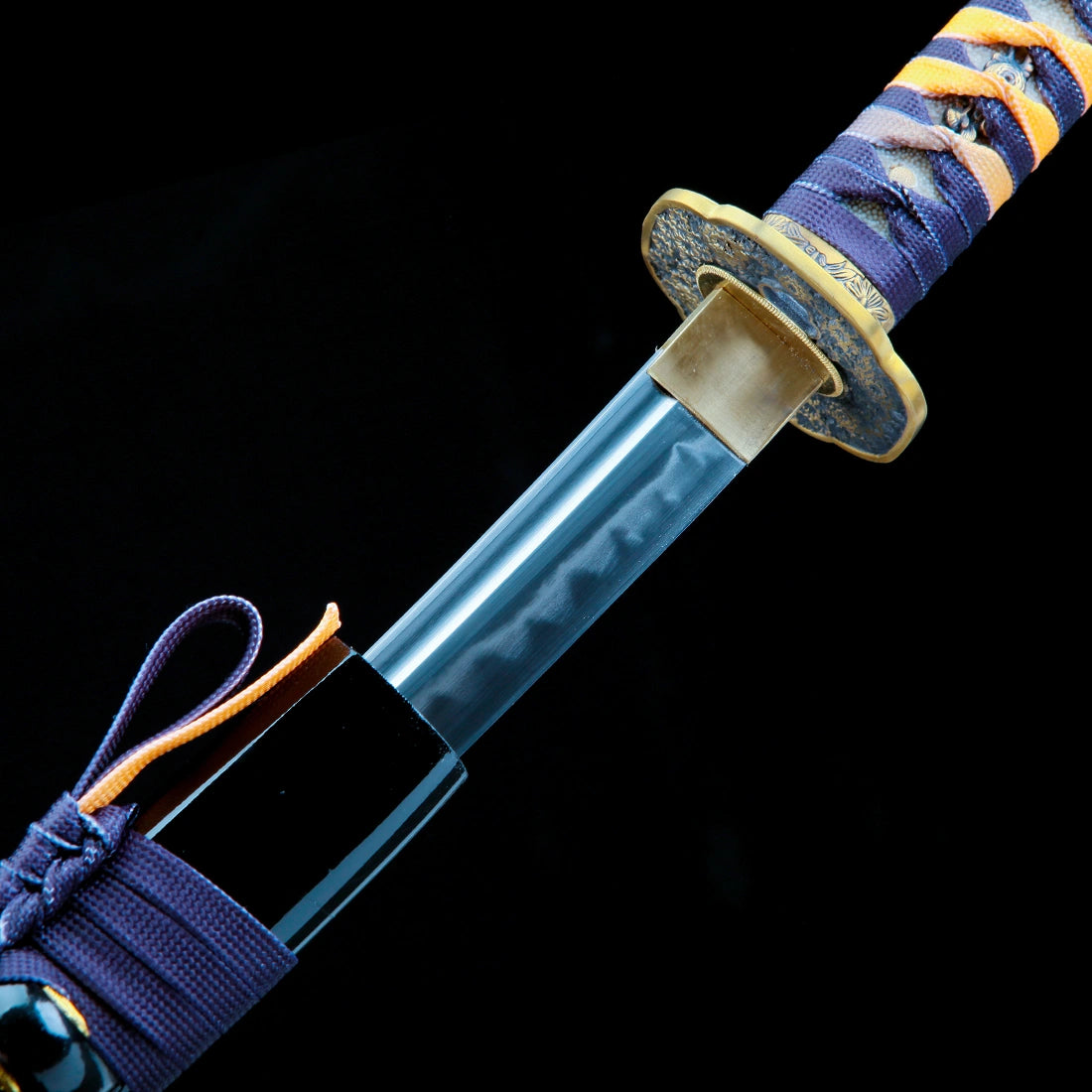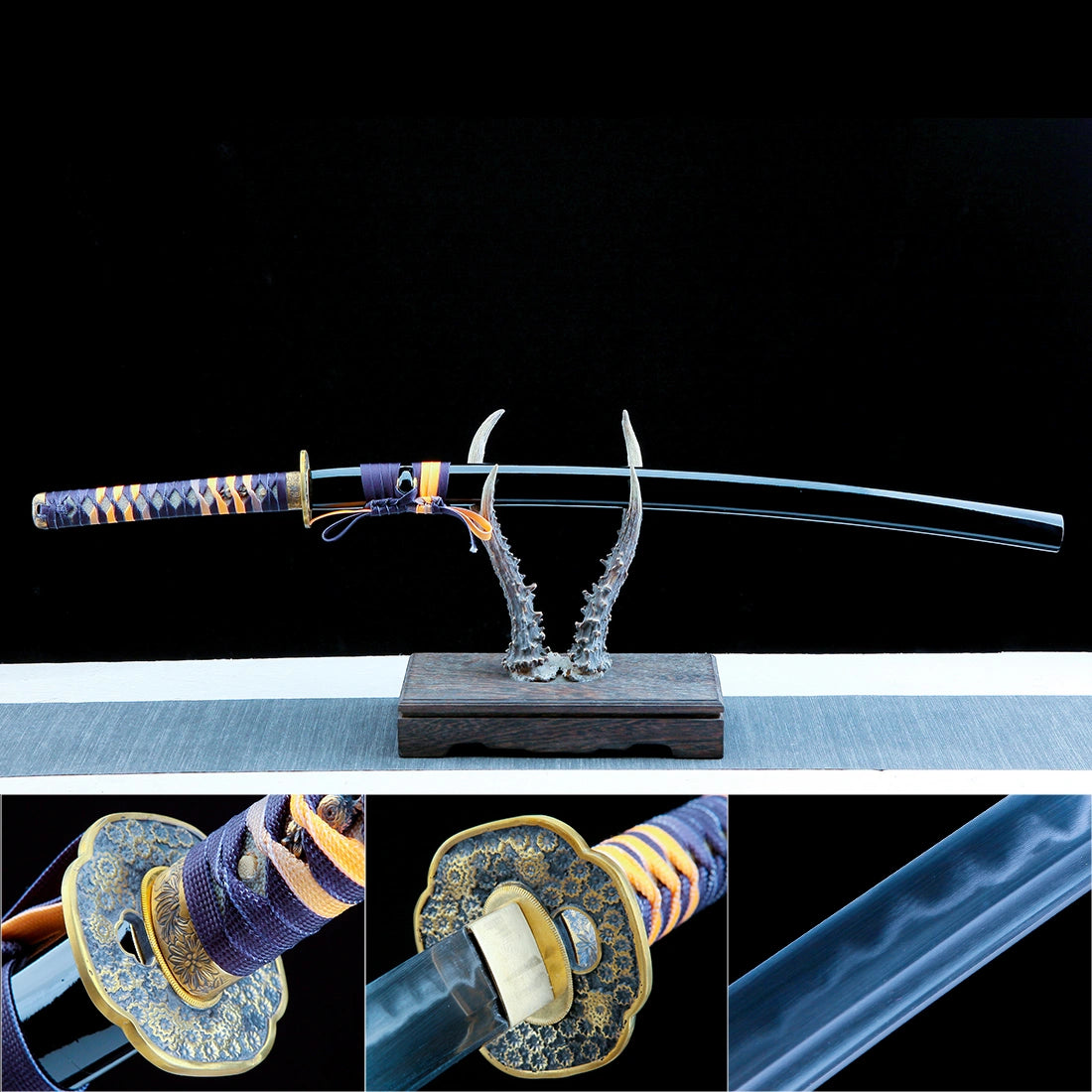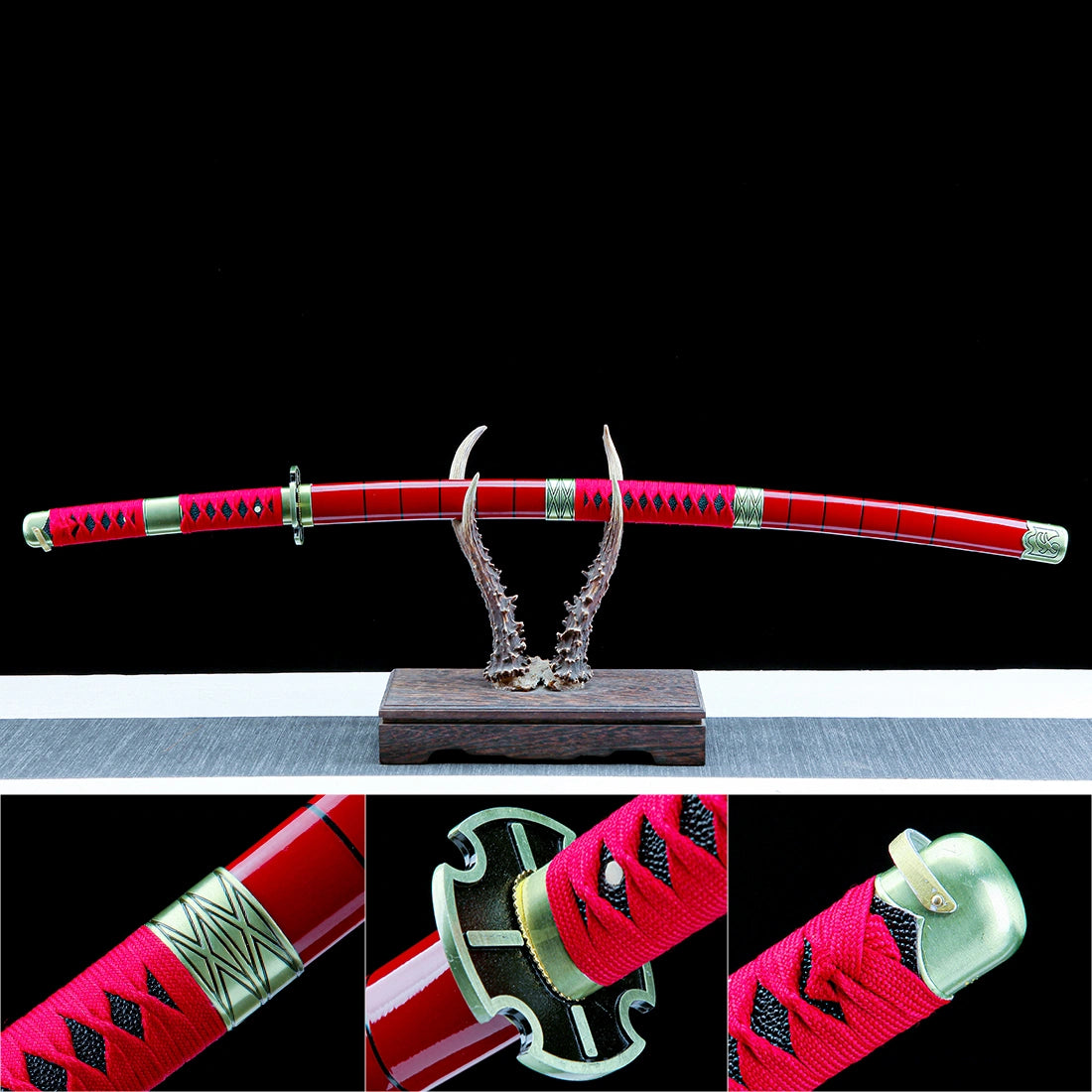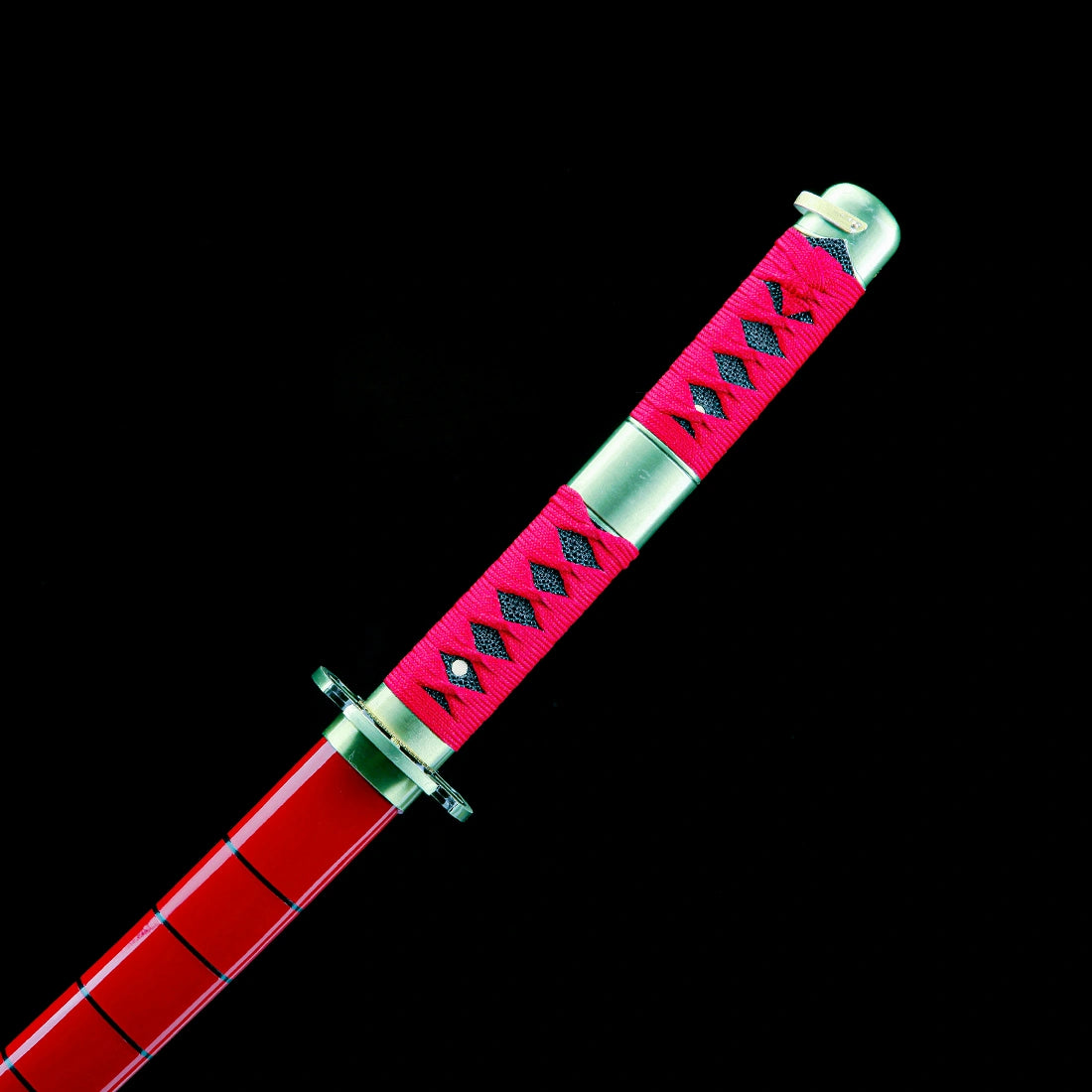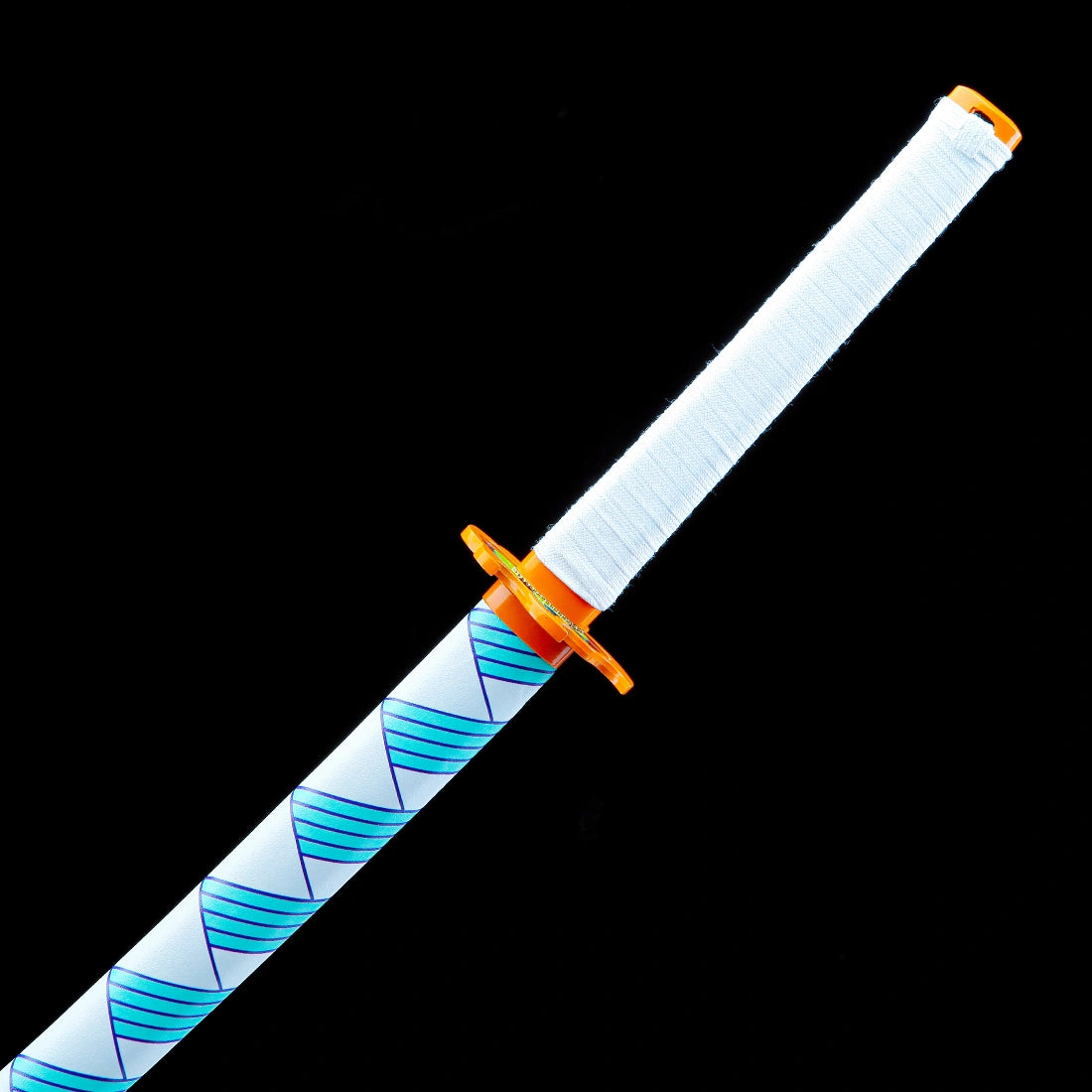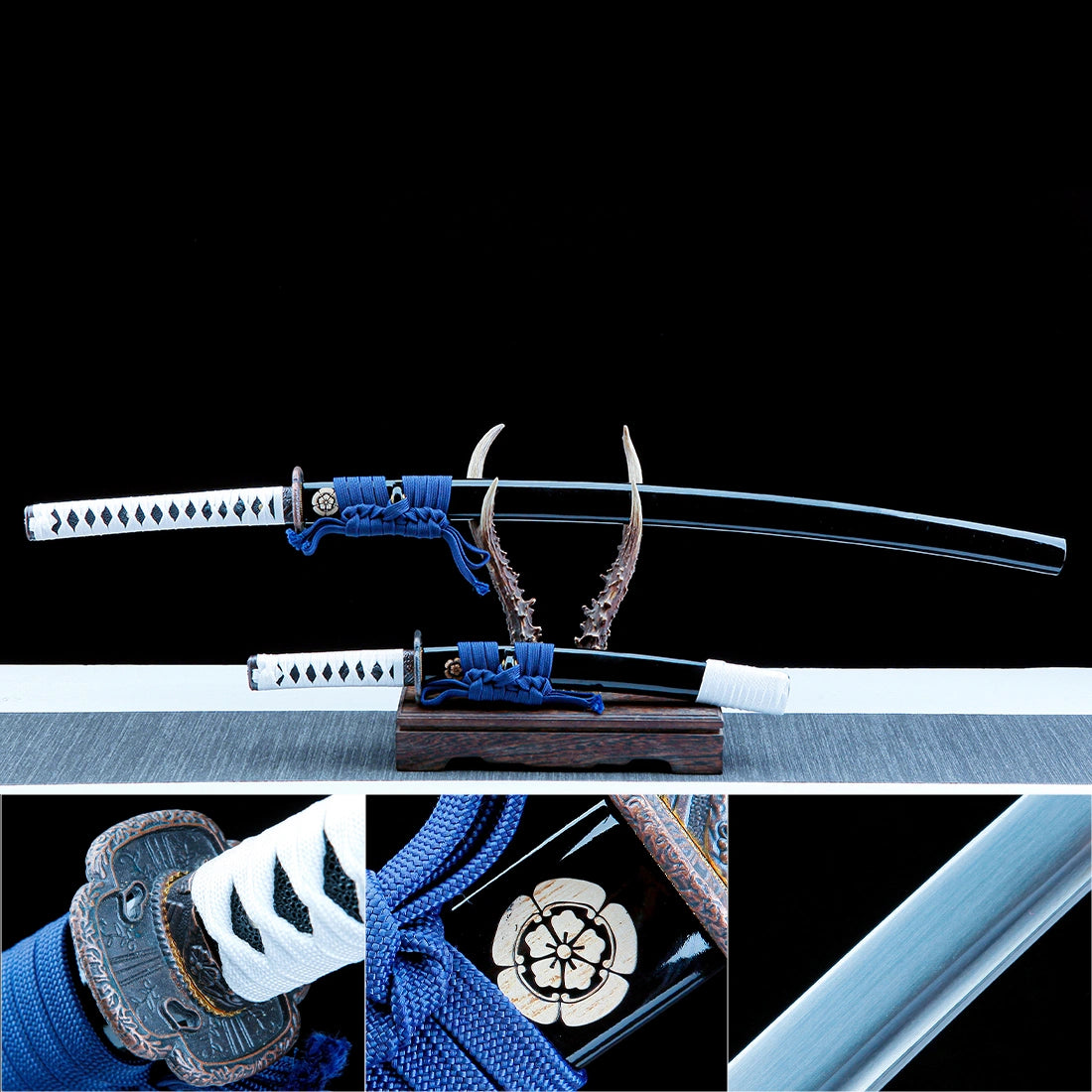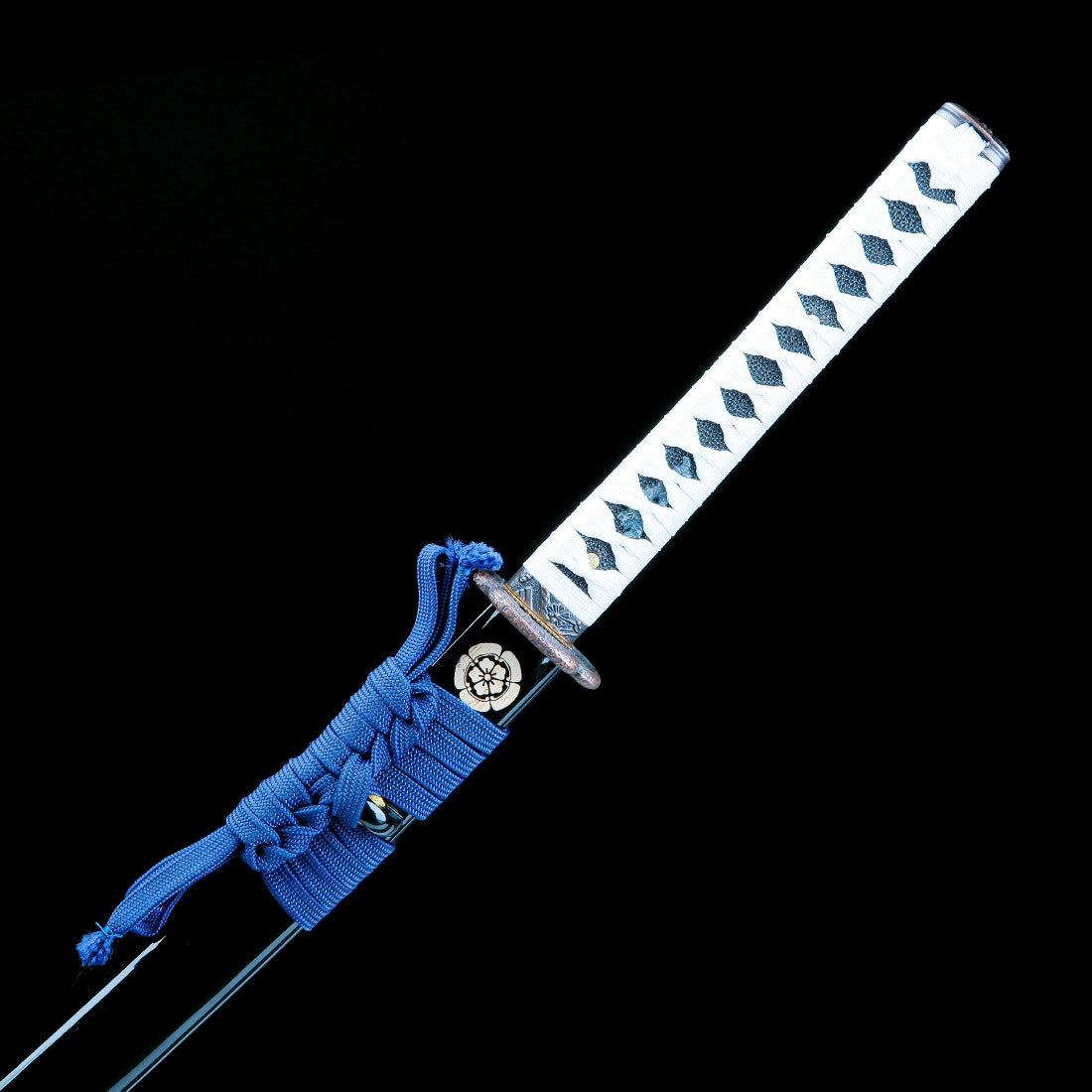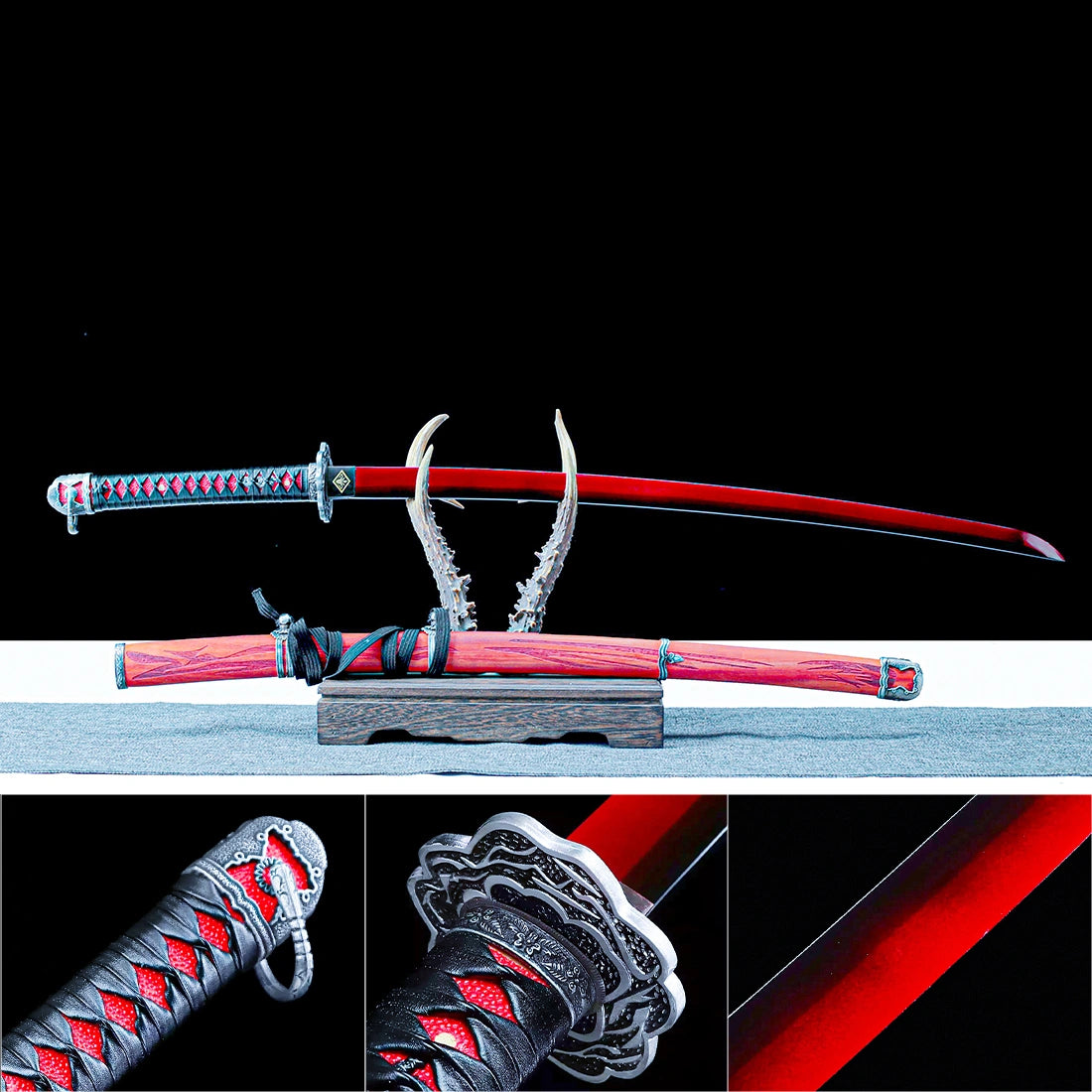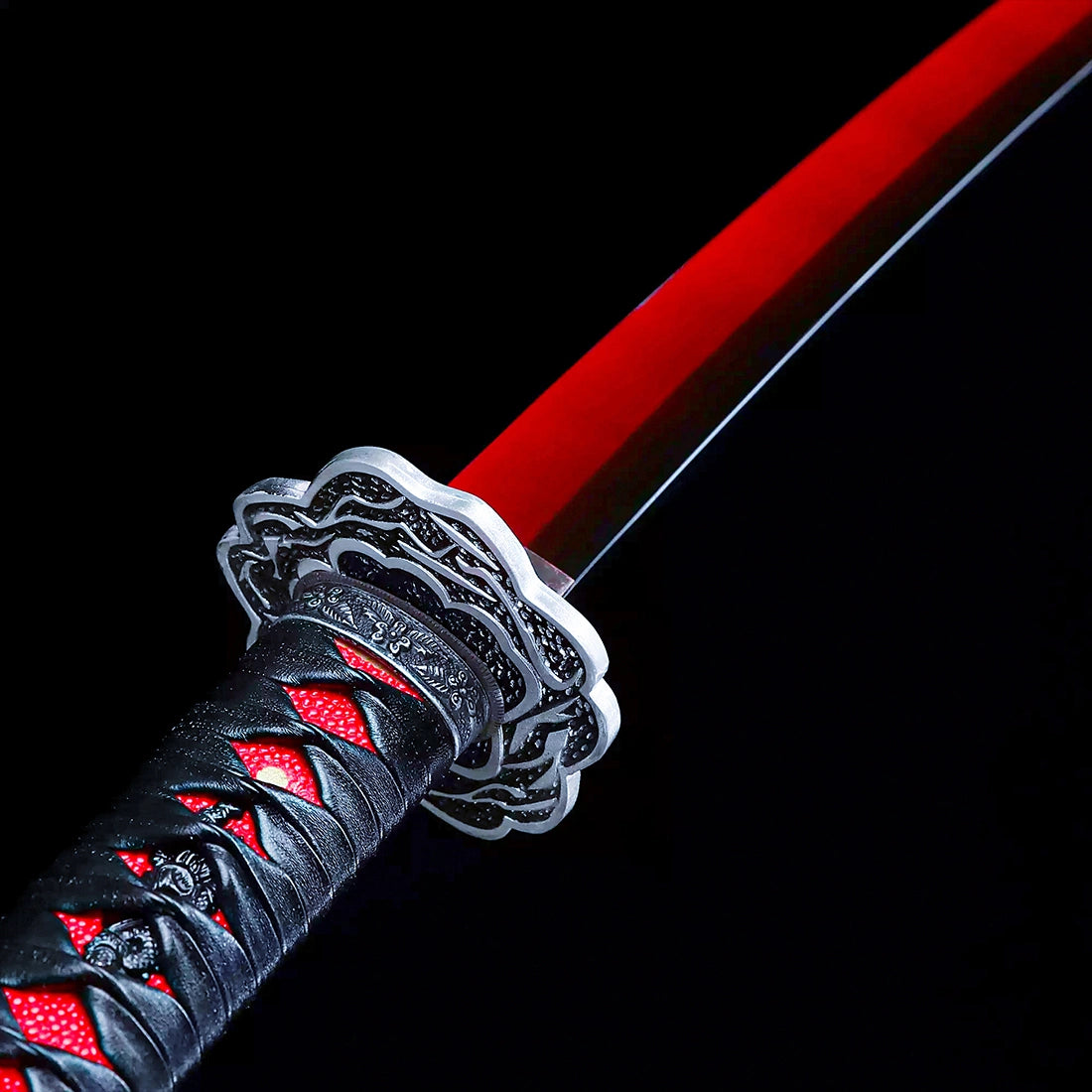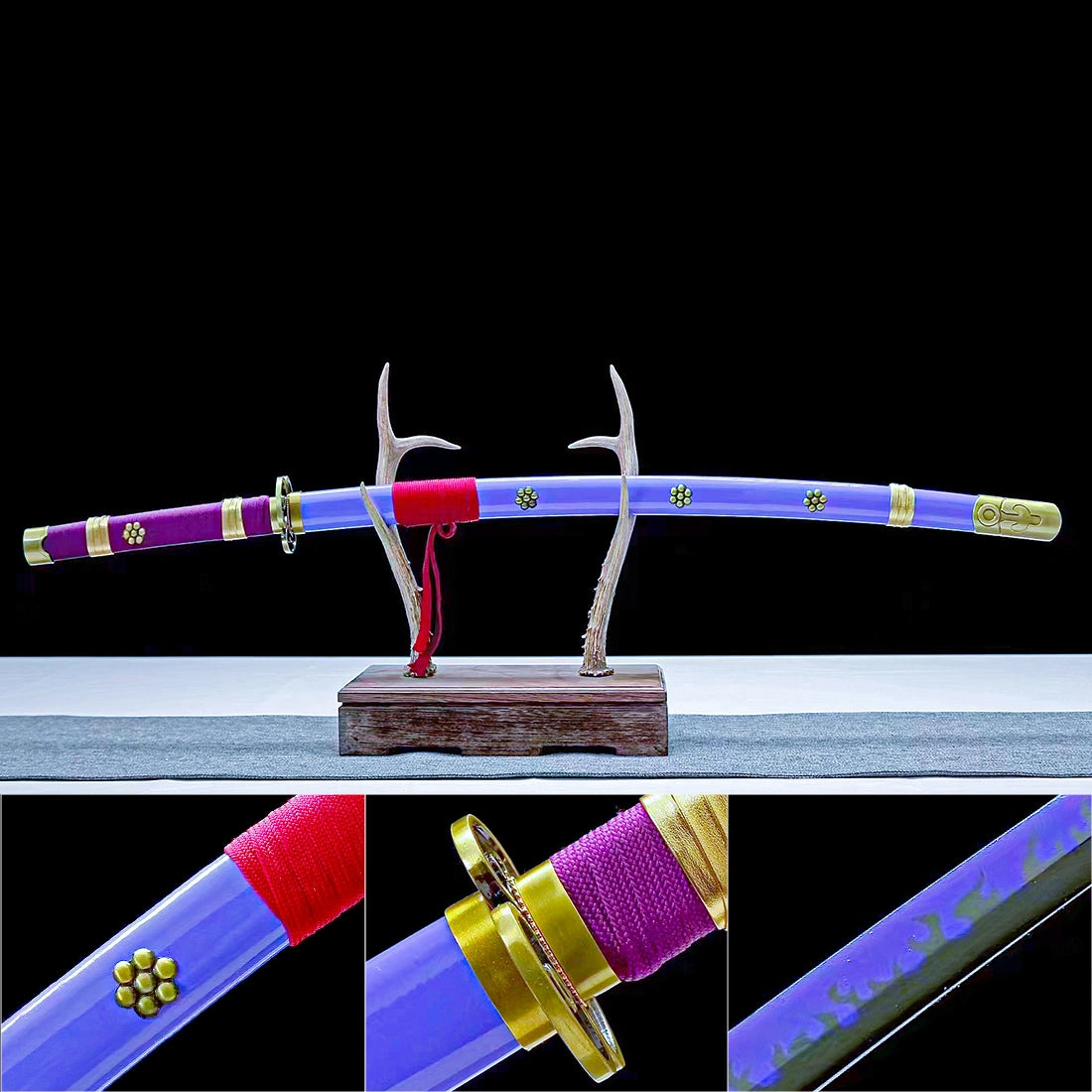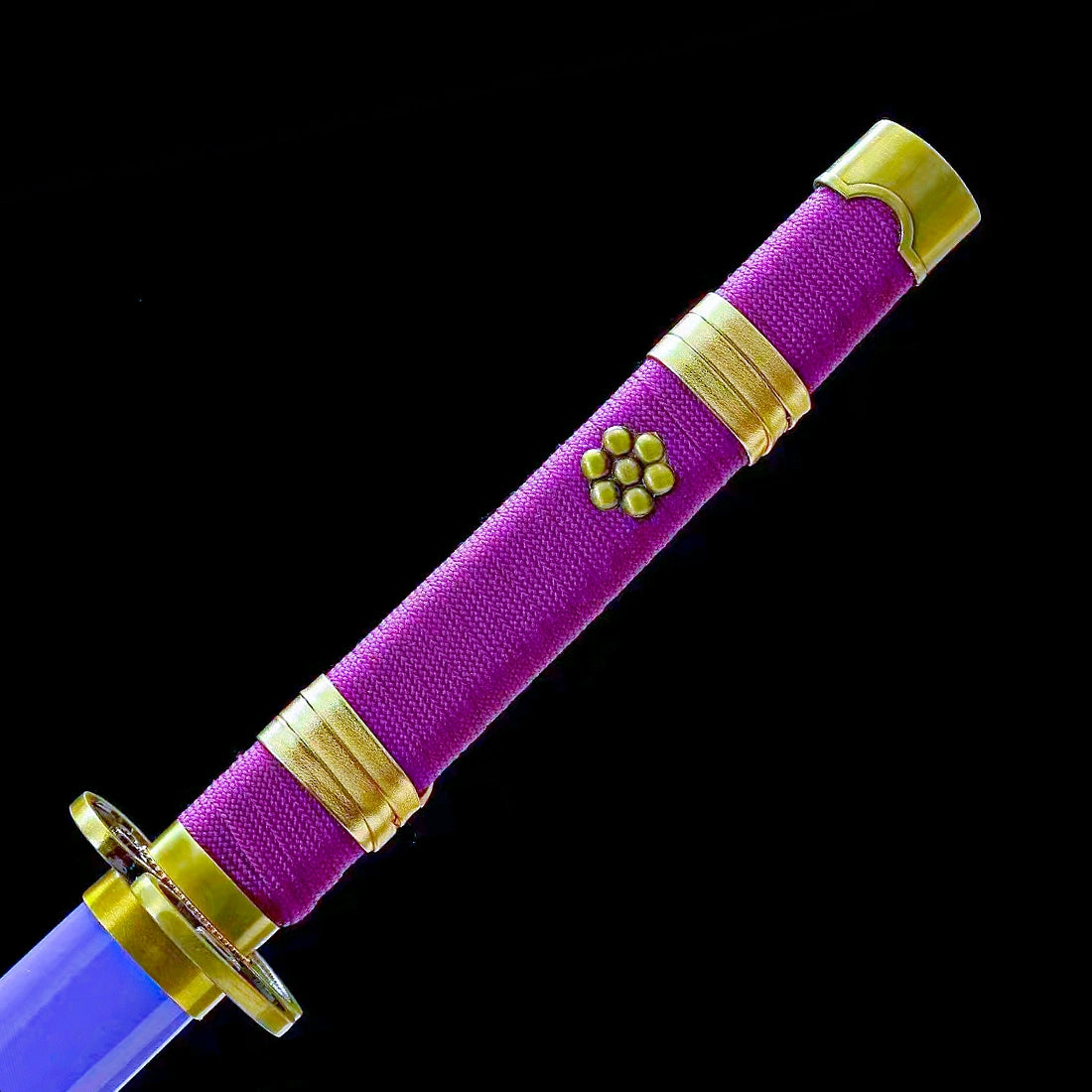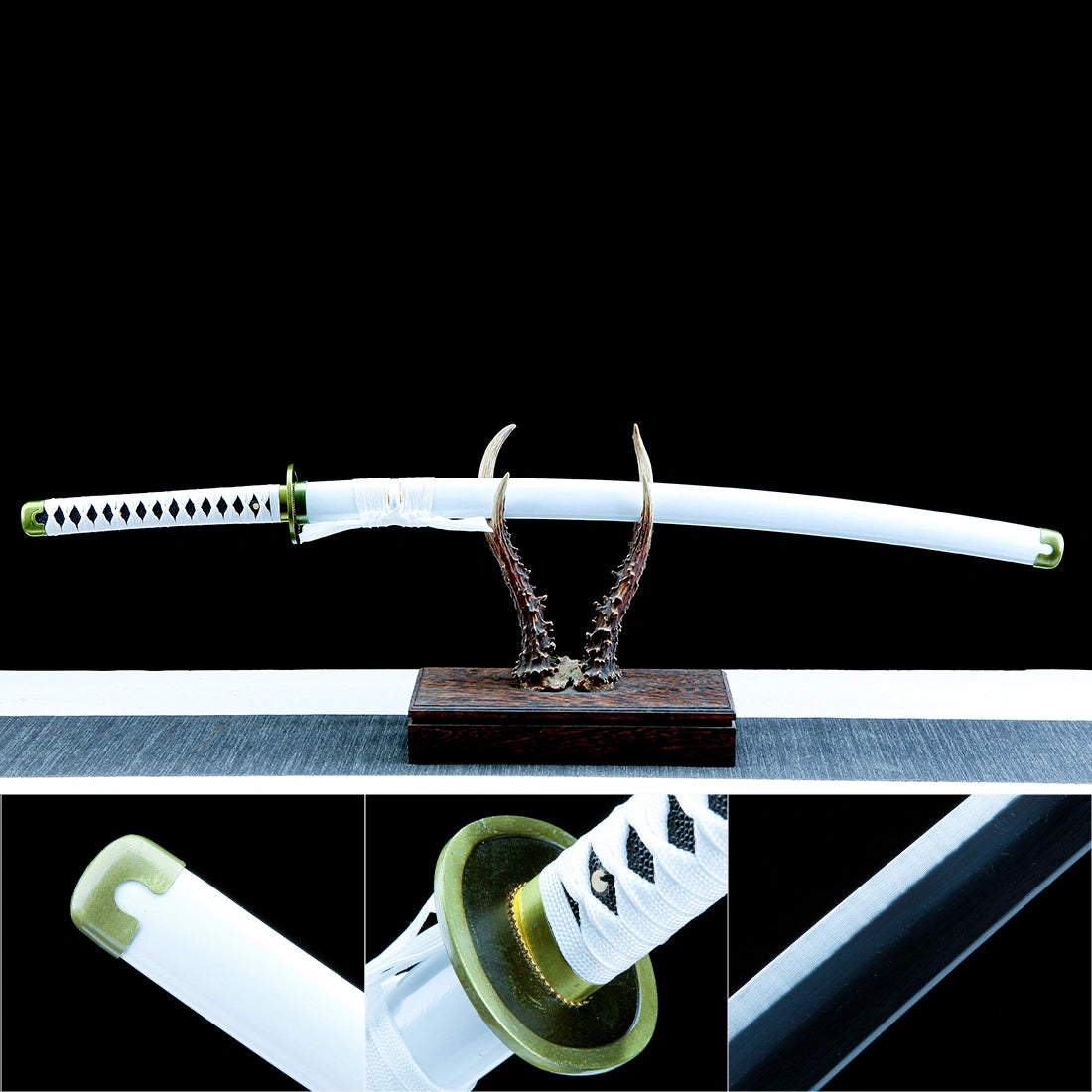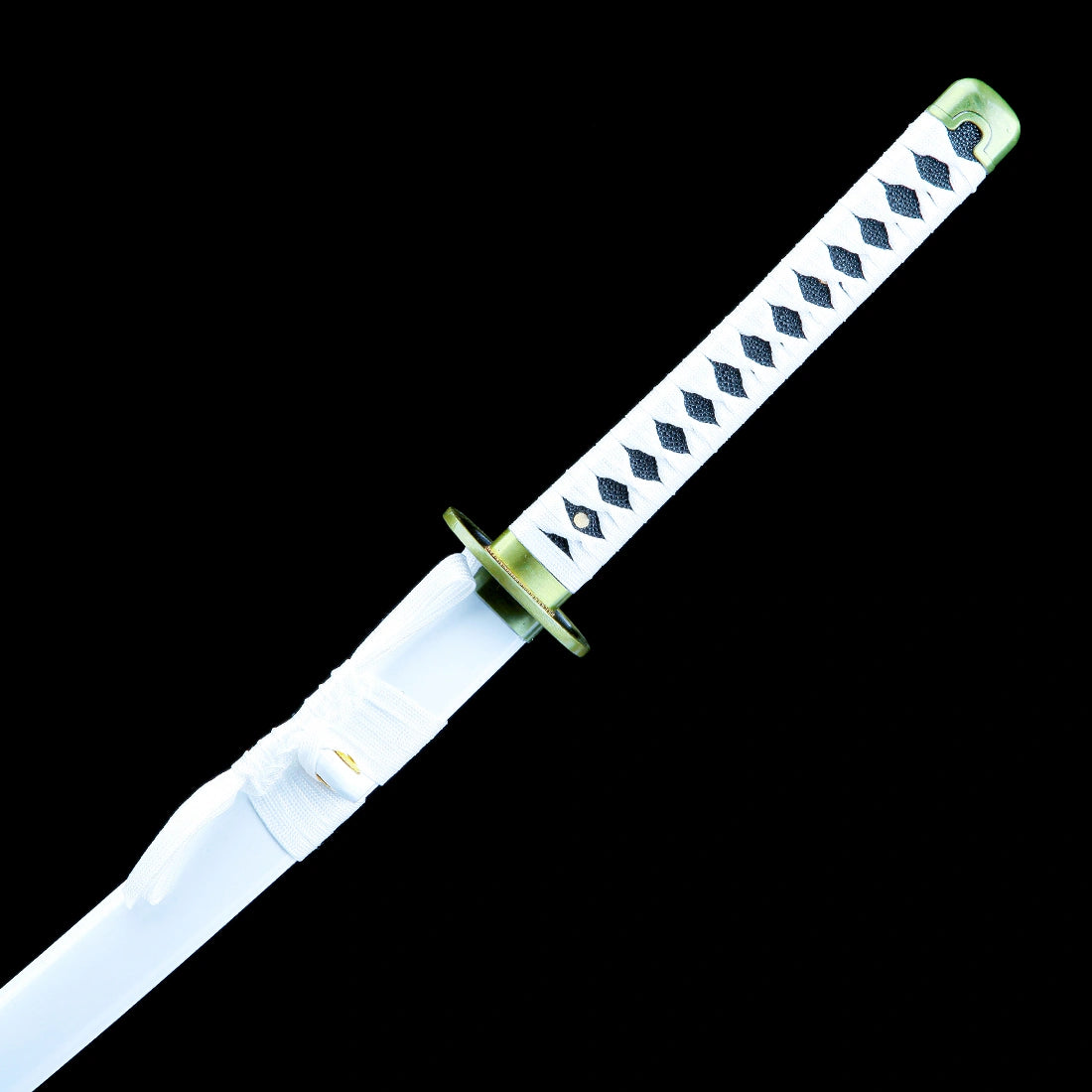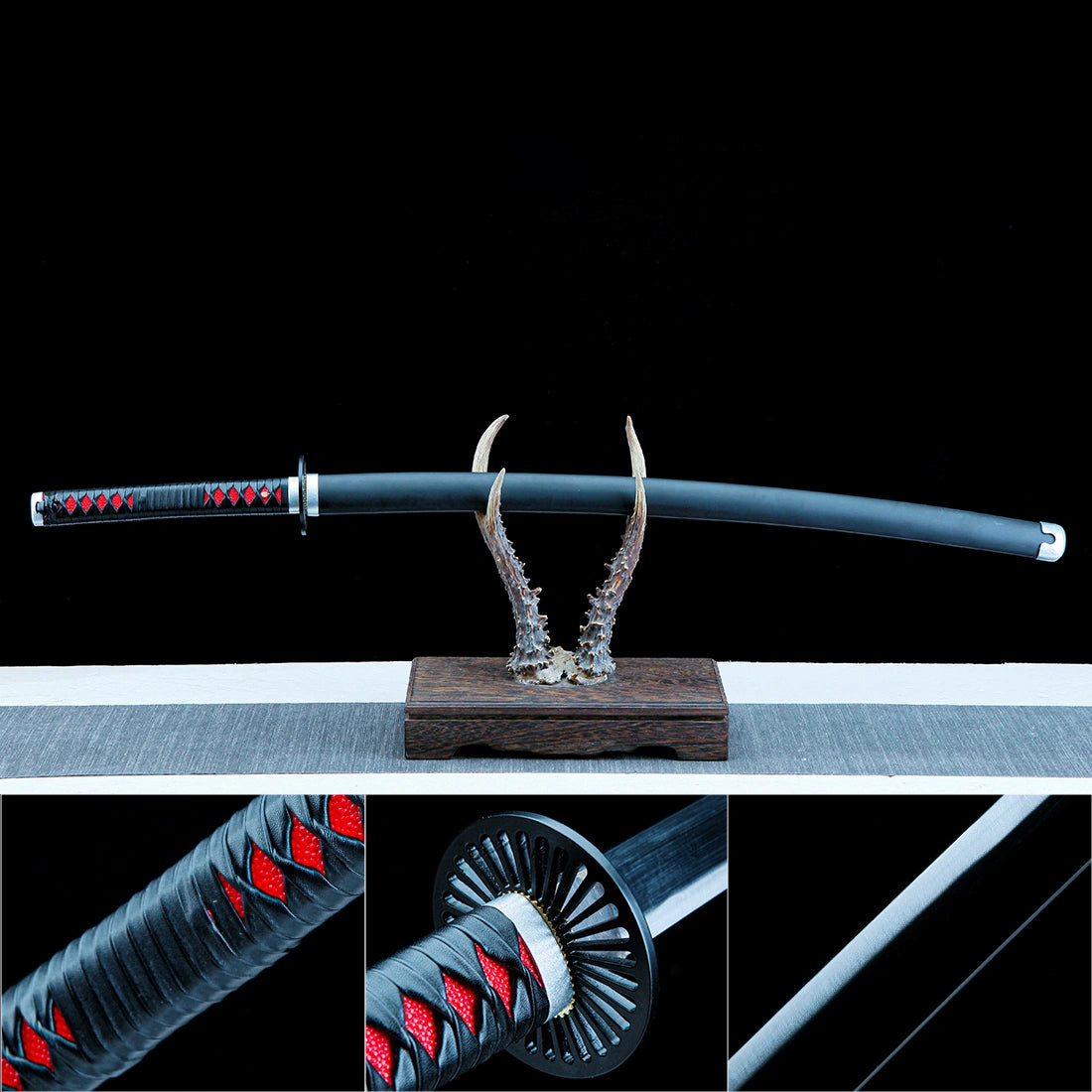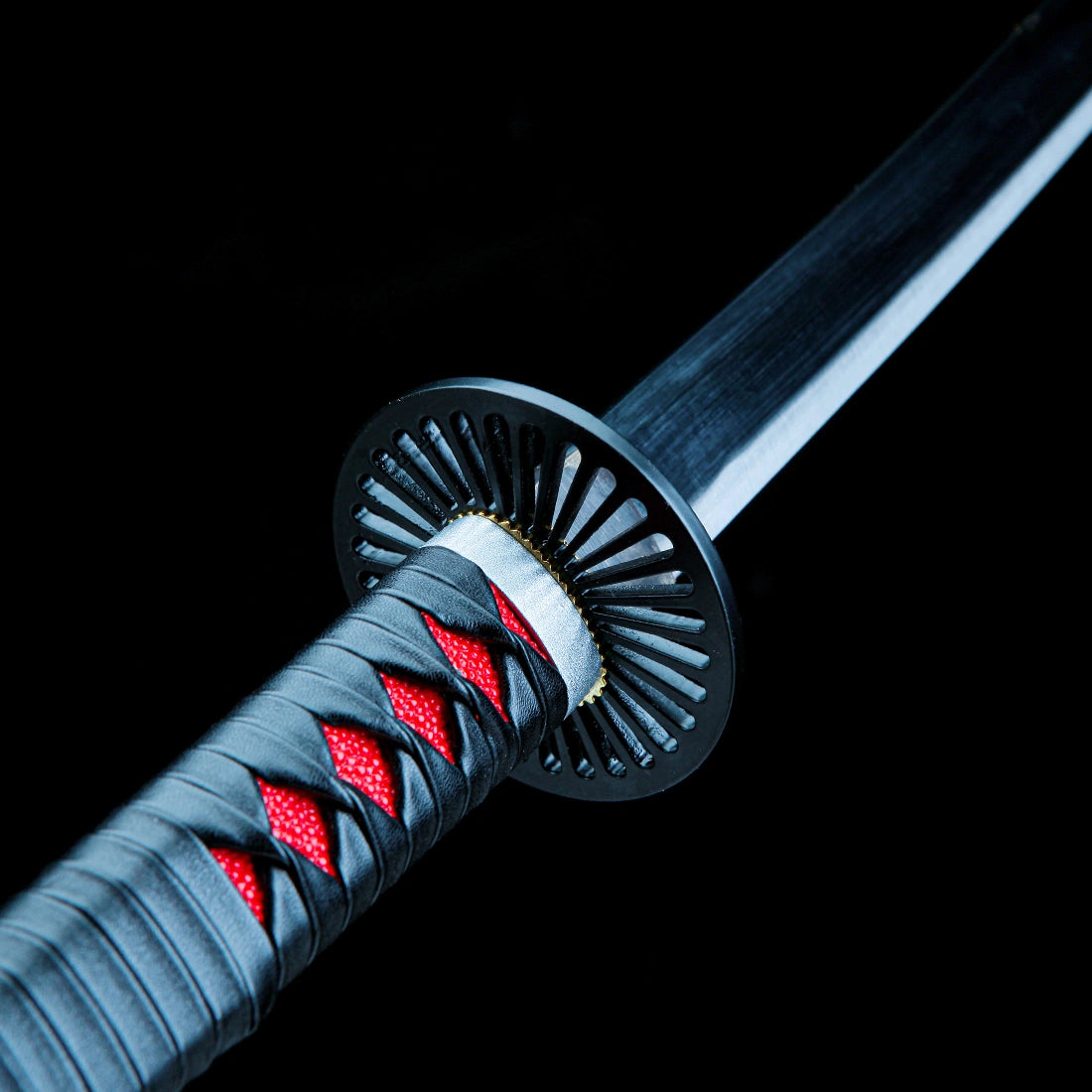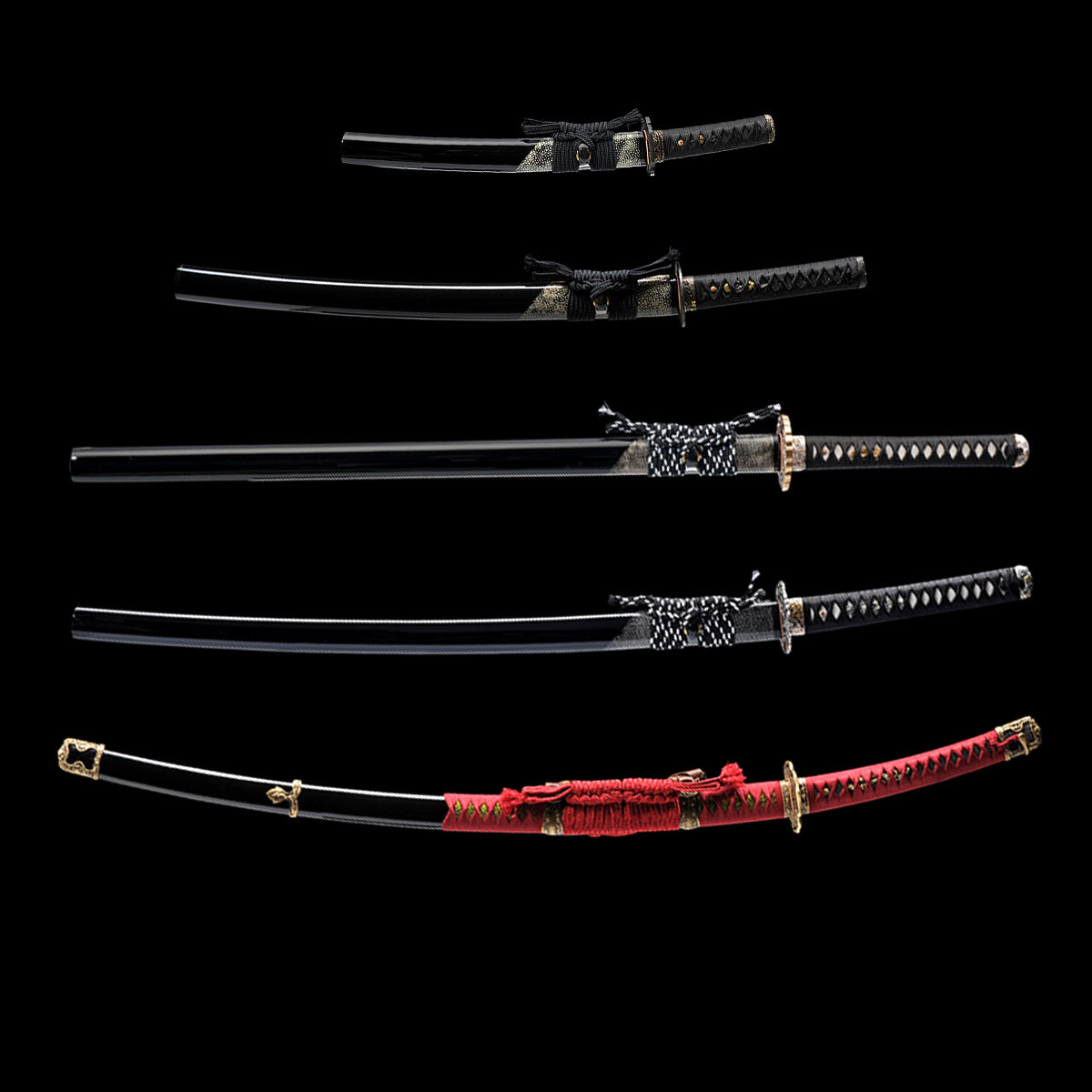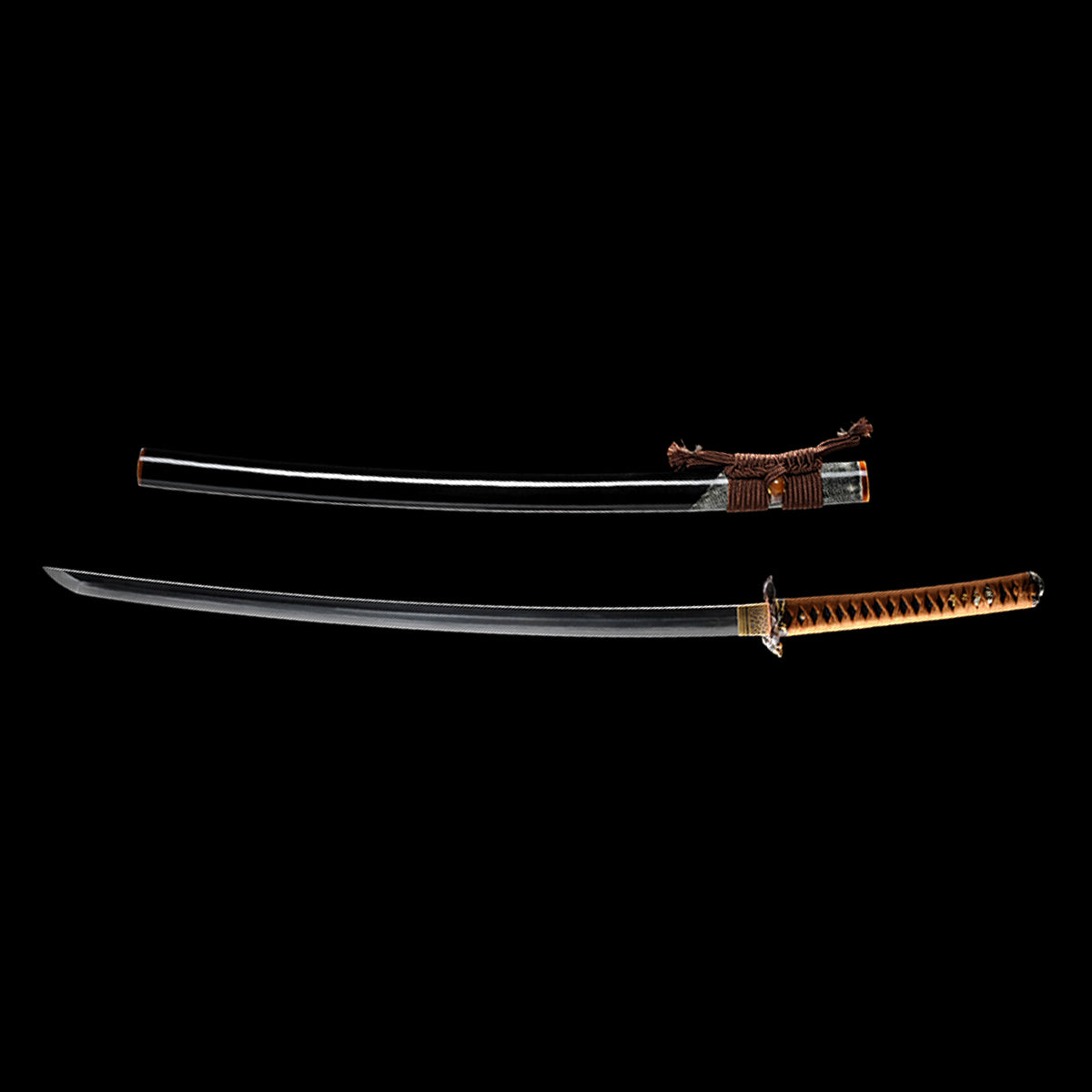Shop what's hot
Shop by Japanese Sword Types
Get inspired by the different parts of the katana.
We use openwork carving, relief carving, and inlay techniques to create a variety of unique tsuba designs; there’s definitely a style you’ll love.
Over 200 original saya designs, each unique in color, motif, and engraving. (To ensure a glossy finish, we apply at least five layers of Japanese Urushi lacquer.)
Some blades are forged using the clay tempering process, which creates beautiful hamon patterns. We also forge blades in various colors, giving you more options to personalize your katana.(All of them are 100% battle-ready.)
All of our katanas use a full tang design, which provides better strength and balance. Most sword enthusiasts prefer full tang blades.
Battle-Ready Anime Katana Replicas
As seen in





100,000+ Units Globally Sold
Authentic Katana (AK) Series Japanese swords have surpassed 100,000 units sold globally. Each blade is hand-forged by master swordsmiths and 100% guaranteed to meet battle-ready standards. We perfectly integrate traditional Japanese forging techniques with modern metallurgy technology, creating collection-grade Japanese swords that combine classical aesthetics with high performance.
Featured Collections
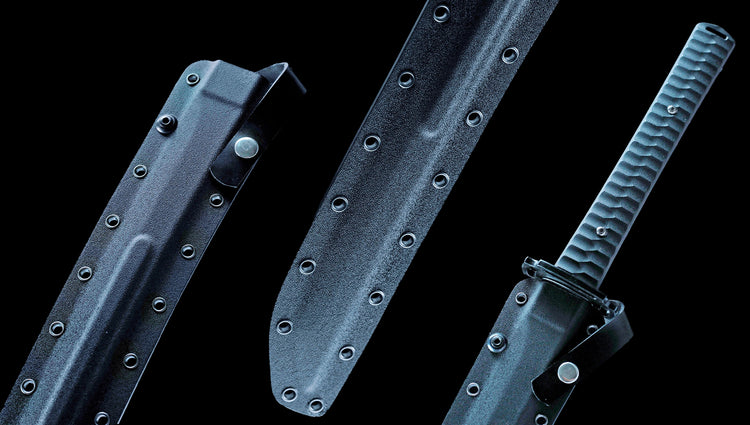
Incorporating classical forging techniques with a contemporary tactical aesthetic, it features an Industrial-Style K Scabbard™, a Modern Tactical Tsuba, and a Tactical-Grade G10 Handle. Designed with a focus on practical performance, it is suitable for field operations, tactical training, and similar scenarios.
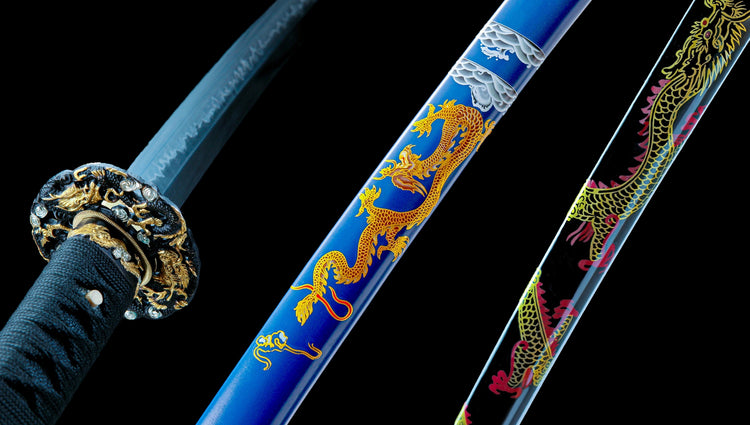
Meticulously forging a perfect fusion of divine power and traditional Japanese swordsmithing artistry, inspired by the dragon—an enduring symbol of authority, wisdom, and eternity.
Seamlessly merging the beauty of nature with the traditional Japanese sword-making artistry, it is designed and crafted with inspiration from flowers such as cherry blossoms, plum blossoms, and chrysanthemums—symbols of nobility, life, and rebirth in Eastern culture.
Why you'll love us
We are forging a new path in the art of Japanese sword-making, where timeless traditions harmonize with modern craftsmanship. Each katana is meticulously shaped by a dedication to both classic Japanese aesthetics and exceptional performance.
What is a Katana?
What is a Katana?
A katana is a traditional Japanese sword known for its curved, single-edged blade, long grip, and exceptional sharpness. Originally used by samurai, the katana is now admired worldwide for its elegant design, historical significance, and incredible craftsmanship.
What are the traits of a real katana?
What are the traits of a real katana?
A real katana is hand-forged using traditional techniques. It features a full tang blade for strength and balance, a visible hamon (temper line) if clay tempered, and is made from high-carbon steel or folded steel for durability and sharpness. Attention to detail in the blade, handle, and fittings is also essential — every part must be functional and well-crafted, not just decorative.
Can this katana be used for actual cutting?
Can this katana be used for actual cutting?
Yes, all of our katanas are full-tang and forged using high-quality materials, making them fully functional and 100% battle-ready. Whether you're practicing tameshigiri (test cutting) or simply want a blade with real performance, our katanas are made for serious use — not just for display.
How should I take care of my katana?
How should I take care of my katana?
Keep the blade dry and clean, and usually it won’t need frequent maintenance. However, we recommend wiping it down and drying it after each use to help your katana stay in great condition for a long time.
Can you own a Katana in the US?
Can you own a Katana in the US?
In the United States, federal law does not prohibit owning a katana. However, laws can vary by state and region—some places have specific regulations regarding possession, carrying, or displaying swords. For example, openly carrying a sword in public may be against local weapon laws in certain states. So far, we have not received any reports from U.S. customers about legal issues related to purchasing a katana.
About the Japanese Sword (Long Read)
About the Japanese Sword (Long Read)
What is a katana
The Katana: Japan’s Iconic Longsword
The katana, Japan’s most renowned longsword, is instantly recognizable by its elegantly curved, single-edged blade and distinctive circular or squared guard. Designed for a two-handed grip, it offers exceptional control and precision. Originally the weapon of the samurai—Japan’s feudal warrior elite—the katana has transcended its martial origins to become a symbol of craftsmanship, discipline, and artistry.
Masterful Craftsmanship
At the heart of the katana’s legendary sharpness and durability lies its meticulous forging process. Crafted from Tamahagane steel, the blade undergoes an intricate, ritualistic production involving folding, hammering, and differential tempering. This painstaking method, often taking weeks or even months, results in a blade that balances razor-sharp hardness with remarkable flexibility.
Combat Efficiency & Design
The katana’s curvature enhances its slashing capability, making it devastatingly effective in swift, precise strikes. Its design harmonizes lethality with versatility, allowing both powerful cuts and controlled thrusts—a reflection of the samurai’s strategic mastery.
Cultural & Spiritual Legacy
More than just a weapon, the katana embodies the bushido values of honor, loyalty, and self-discipline. Today, it remains central to martial arts like Kendo, Iaido, and Kenjutsu, while also being revered by collectors and enthusiasts worldwide.
Etymology & Symbolism
The word "katana" derives from Japanese: "kata" (side) and "na" (name), referencing its traditional wearing style—blade-up at the waist. Beyond its name, the katana symbolizes precision, adaptability, and the samurai spirit, making it an enduring icon of Japanese heritage.
Physical Characteristics
- Blade Length: 60–80 cm (23.6–31.5 in)
- Blade Type: Single-edged, curved
- Material: Tamahagane steel (folded & differentially tempered)
- Modern Uses: Martial arts, collecting, ceremonial display, and media
From feudal battlefields to contemporary dojos, the katana’s legacy endures—not just as a weapon, but as a testament to Japan’s rich martial and cultural history.
Katana Sword history
The Evolution of the Japanese Katana: Key Historical Periods
The katana’s development spans over a millennium, shaped by shifting combat needs, artistic refinement, and technological progress. Below are the defining eras in Japanese sword history, each contributing to the katana’s legendary status.
1. Jōkotō Period (Pre-900 AD) – The Foundation
The Jōkotō ("ancient swords") era marks the earliest phase of Japanese sword-making, laying the groundwork for future innovations. These straight or slightly curved blades, though less refined than later katanas, established core principles of balance, sharpness, and metallurgy.
While often overshadowed by later periods, Jōkotō swords are priceless artifacts—offering insights into Japan’s early martial culture and forging traditions. Historians and collectors value them not just as weapons but as cultural milestones.
2. Kotō Period (900–1596 AD) – The Golden Age
The Kotō ("old swords") period represents the zenith of classical katana craftsmanship. Swordsmiths perfected techniques like differential tempering (yakiba) and steel folding, creating blades of unmatched sharpness and resilience.
Key features of Kotō katanas:
✔ Optimized curvature for swift drawing and cutting (iai-jutsu).
✔ Distinct hamon (temper line) patterns, unique to each smith.
✔ Artistic engravings (horimono) blending beauty and function.
These swords became the symbol of the samurai, influencing combat styles and remaining the most coveted by collectors today.
3. Shintō Period (1596–1780 AD) – The Artistic Renaissance
The Shintō ("new swords") era refined the katana into a masterpiece of form and function. With peace under the Tokugawa shogunate, swordsmiths focused on aesthetic elegance without sacrificing lethality.
Notable advancements:
✔ Refined hamon with intricate patterns (e.g., suguha, gunome).
✔ Luxurious fittings (koshirae) using precious metals and lacquer.
✔ Improved steel quality for lighter, more agile blades.
Shintō katanas bridged art and warfare, setting standards for modern sword appreciation.
4. Shinshintō Period (1781–1876 AD) – The Practical Revolution
Amid political turmoil, the Shinshintō ("new-new swords") period prioritized mass production and battlefield efficiency. Swordsmiths adapted to demand, creating durable, lethal, and cost-effective blades.
Key traits:
✔ Simplified forging for faster production.
✔ Stronger, more uniform steel to withstand prolonged combat.
✔ Hybrid designs blending older aesthetics with utilitarian needs.
Though less ornate, Shinshintō katanas were highly functional, reflecting the era’s turbulent demands.
5. Gendaitō Period (1876–Present) – Modern Mastery
The Gendaitō ("modern swords") era merges tradition with technology. Post-Meiji Restoration, katanas transitioned from weapons to cultural icons, crafted using both ancient methods and modern tools.
Today’s katanas feature:
✔ Advanced metallurgy (e.g., high-carbon steels like T10 or 1095).
✔ CNC-assisted precision for consistency.
✔ Diverse roles—martial arts (Kendo, Iaido), collectibles, and film props.
While no longer battlefield tools, Gendaitō katanas uphold the samurai legacy through craftsmanship and symbolism.
Conclusion: A Living Legacy
From Jōkotō’s primal blades to Gendaitō’s precision-forged works, the katana’s evolution mirrors Japan’s history. Each era contributed to its unrivaled sharpness, beauty, and cultural significance, ensuring its place as a timeless icon of martial and artistic excellence.
Katana types
Katana Blade Types: Key Variations and Combat Specializations
The katana’s design evolved to suit different combat needs, resulting in three primary blade types: Shinogi-Zukuri, Shobu-Zukuri, and Kissaki-Moroha-Zukuri. Each offers distinct advantages in battle, reflecting the samurai’s adaptability and craftsmanship.
1. Shinogi-Zukuri – The Classic Samurai Blade
✔ Most common and versatile katana design.
✔ Features a defined ridge line (shinogi) for structural strength.
✔ Balanced for slashing, cutting, and defensive maneuvers.
✔ The standard choice for samurai, combining durability and flexibility.
Why it stands out:
The Shinogi-Zukuri’s optimized geometry made it the go-to battlefield weapon, excelling in both single strikes and prolonged duels.
2. Shobu-Zukuri – The Streamlined Slasher
✔ Sleek, continuous curve with no yokote (transition line at the tip).
✔ Designed for fluid, rapid slashing attacks.
✔ Lighter and faster than Shinogi-Zukuri but less versatile in thrusting.
Best for:
Iaido practitioners and quick-draw techniques, where smooth, uninterrupted cuts are crucial.
3. Kissaki-Moroha-Zukuri – The Double-Edged Specialist
✔ Rarest of the three, featuring a partially double-edged blade.
✔ Sharper, elongated tip (kissaki) enhances thrusting capability.
✔ Retains cutting power while excelling in penetrating strikes.
Combat role:
Ideal for armor-piercing or precise, piercing attacks, though less common in general warfare.
Conclusion: Form Follows Function
From the all-purpose Shinogi-Zukuri to the specialized Kissaki-Moroha-Zukuri, each katana type reflects a deliberate balance of artistry and lethality. Understanding these designs offers deeper insight into samurai combat philosophy and the katana’s enduring legacy.
What are katanas made of
Katana Steel Types: From Ancient Forge to Modern Blade
The choice of steel determines a katana's soul - its cutting ability, resilience, and historical authenticity. Let's examine the key materials that have shaped Japanese swordmaking through the centuries.
Tamahagane: The Sacred Steel of Samurai
Forged in the mystical fires of traditional tatara furnaces, Tamahagane represents the pinnacle of ancient Japanese metallurgy. Craftsmen smelt iron sand for three days and nights, creating a steel with natural carbon variations (0.5%-1.5%) that give each blade its unique character. The labor-intensive folding process not only removes impurities but creates the distinctive grain patterns (hada) prized by collectors. While only about two dozen licensed smiths still work with authentic Tamahagane today, these blades remain the gold standard for Nihonto purists.
1060 High Carbon Steel: The Modern Warrior's Choice
Balancing performance and affordability, 1060 steel has become the workhorse of contemporary katana production. With its 0.60% carbon content, it achieves an ideal harmony of edge retention (HRC 56-58) and flexibility - perfect for martial artists who need a reliable cutter that won't break the bank. Though it requires more maintenance than stainless variants, many consider its authentic feel worth the extra care.
Specialized Steel Variants
Beyond these standards, several specialized steels cater to specific needs:
- 5160 Spring Steel brings exceptional toughness to the table, making it the go-to choice for heavy cutting tests and battle-ready replicas. Its chromium content adds durability while maintaining good flexibility.
- T10 Tool Steel stands at the opposite end with its ultra-high 1.0% carbon content, achieving remarkable hardness (HRC 60+) for display pieces and collector's items. However, this comes at the cost of reduced shock absorption.
- 1095 High Carbon offers razor-like sharpness preferred by professional cutters, while High Manganese alloys provide superior impact resistance for those seeking maximum durability.
Choosing Your Blade's Soul
Traditionalists will always favor Tamahagane for its historical authenticity and unique mechanical properties. Practical martial artists typically prefer 1060 or 1095 carbon steel for everyday use. For those prioritizing durability, 5160 spring steel offers the best balance, while T10 satisfies collectors wanting exhibition-grade pieces.
Remember that the steel type tells only part of the story - proper heat treatment (yaki-ire) and craftsmanship ultimately determine about 70% of a blade's performance. Modern smiths continue to innovate by blending traditional techniques with contemporary metallurgy, creating "neo-traditional" blades that honor the past while embracing new possibilities.
How are katanas made
The Art of the Katana: A Master Craftsman's Journey
From raw steel to samurai soul, the creation of a katana represents one of mankind's most exquisite unions of form and function. This sacred process, refined over centuries, transforms base metal into living art through twelve distinct stages of craftsmanship.
1. Steel Selection: Choosing the Sword's Soul
The journey begins with selecting the blade's essence - Tamahagane for traditionalists seeking authentic Nihonto, or high-carbon steels like 1060 for practical modern applications. This critical decision influences every subsequent step, determining the sword's spirit and capabilities.
2. The Sacred Smelting Ritual
In traditional forging, the tatara furnace burns for 72 continuous hours, its belly filled with iron sand and charcoal. Master smiths carefully monitor temperatures reaching 2,500°F (1,370°C), producing the distinctive layered steel that gives Japanese blades their legendary flexibility and strength.
3. The Dance of Folding
The smith begins the mesmerizing orikaeshi tanren process - folding the steel upon itself up to sixteen times. Each fold:
- Expels impurities
- Creates up to 65,000 microscopic layers
- Establishes the foundation for the blade's distinctive grain pattern
4. Forging the Soul
With precise hammer strikes, the smith shapes the sunobe (blank form). This requires an intimate understanding of metal's memory - knowing exactly how each blow affects the steel's internal structure and future performance.
5. Clay Tempering: The Blade's Baptism
The smith paints a special refractory clay mixture along the blade's spine before quenching. This differential hardening creates:
- The razor-sharp hamon (temper line)
- A hard edge (HRC 60-65)
- A flexible spine (HRC 40-45)
6. The Revelation
After quenching in water, the blade emerges with its true character revealed - the hamon pattern serving as the smith's signature and the steel's genetic code.
7. The Polisher's Prayer
A togishi (polisher) spends 100-200 hours revealing the blade's soul through seven grades of waterstones. This process:
- Brings out the hada (grain pattern)
- Perfects the geometry
- Creates the mirror-like finish
8. The Final Assembly
Master craftsmen add the koshirae (fittings):
- Tsuka (handle) wrapped in samegawa (ray skin) and tsuka-ito (silk cord)
- Tsuba (guard) often featuring intricate designs
- Saya (scabbard) lacquered for protection
The Living Blade
A true katana is never "finished" - it continues to evolve through use and care. The oil applied by its owner becomes part of its story, the patina of age recording its journey through time.
This sacred process, requiring 6-12 months for traditional blades, represents more than manufacturing - it's a spiritual journey where steel, fire, water, and human will unite to create something transcendent. The modern world may have changed the tools, but the soul of the katana remains eternal in the hands of true masters.
Famous Japanese Sword Swordsmiths
The Legendary Artisans Behind the Katana
The katana's fame extends far beyond its blade—it is also a testament to the master swordsmiths who forge these extraordinary weapons. Renowned for their meticulous attention to detail, peerless craftsmanship, and the profound historical significance embedded in every sword, these artisans have become legends in their own right.
Masamune and Muramasa: A Tale of Contrasts
Among the most celebrated Japanese swordsmiths, two names stand out: Masamune and Muramasa.
- Masamune is revered as the pinnacle of virtue and technical mastery. His blades, admired for their beauty and flawless functionality, represent the gold standard of Japanese swordsmithing. Even today, his work continues to inspire generations of sword-makers.
- Muramasa, by contrast, carries a darker legacy. Though equally skilled, his katanas are shrouded in myth—most infamously, the belief that they are "cursed." Legends claim Muramasa's blades thirst for blood, even driving their wielders to madness. Yet, their razor-sharp precision remains undeniable, securing their place in history.
Together, their stories embody the duality of the sword: a weapon capable of both justice and destruction.
Modern Masters: Carving a New Legacy
While traditional swordsmiths like Masamune remain immortalized in history, contemporary artisans are forging their own path. Today's masters not only uphold ancient techniques but also navigate the modern world as skilled entrepreneurs, bringing the art of the katana to a global audience.
Katana Cleaning and Storage
Proper Katana Storage & Maintenance: Preserving the Blade’s Legacy
To ensure your katana remains in pristine condition for generations, proper storage and regular care are essential. Follow these time-tested techniques to protect its edge, finish, and structural integrity.
1. Correct Storage Methods
- Horizontal Placement – Store the katana on a stable rack or stand, with the cutting edge facing upward. This prevents blade warping and minimizes accidental contact with the sheath.
- Use the Saya (Scabbard) – The wooden scabbard shields the blade from dust, humidity, and physical damage. Ensure the interior is clean and dry before sheathing.
- Avoid Moisture & Direct Sunlight – Store in a climate-controlled environment (low humidity, moderate temperature) to prevent rust and wood deterioration.
2. Essential Cleaning & Maintenance
A disciplined cleaning routine is critical to prevent rust and maintain the blade’s sharpness.
- Specialized Cleaning Kit – Use a traditional katana maintenance kit containing:
- Step-by-Step Care
Pro Tip: Inspect the blade monthly for early signs of rust or tarnish.
Katana store
AuthenticKatana.com – Your Trusted Source for Martial Arts Weapons & Traditional Katanas
At Katana Store, we are dedicated to providing the finest selection of authentic katanas and martial arts weapons, including bokken, bo, jo, iaito, wakizashi, Chinese swords, tonfa, sai, shuriken, kunai, and more. We also offer high-quality accessories and equipment to enhance your martial arts practice.
The Legendary Katana – A Masterpiece of Craftsmanship
No sword embodies the spirit of Japan quite like the katana. Revered for its razor-sharp edge, perfect balance, and timeless elegance, this iconic blade is a symbol of discipline and artistry. If you seek a functional, hand-forged katana crafted with precision, Authentic Katana.com is your ultimate destination.
Unmatched Quality, Forged by Tradition
Every katana in our collection is meticulously handcrafted in Asia by skilled swordsmiths who uphold centuries-old techniques. We use only the finest materials to ensure that our swords are not just stunning display pieces but fully functional weapons suitable for martial artists, collectors, and enthusiasts alike.
Why Choose Authentic Katana.com?
✔ Authentic Hand-Forged Blades – Each Japanese sword is tested for durability, sharpness, and balance.
✔ Premium Accessories – Complete your collection with sword stands, maintenance kits, and carrying cases.
✔ Diverse Selection – From wakizashi and tanto to Chinese swords, we cater to all martial arts needs.
✔ Affordable Excellence – Whether you're a beginner or a seasoned collector, we offer katanas at various price points to fit your budget.
More Than a Store – A Community
At Katana Store, we’re passionate about preserving the legacy of the samurai. Our team is here to guide you in finding the perfect katana—whether for training, display, or collection.
Explore the art of the samurai today at Authentic Katana.com, where tradition meets exceptional craftsmanship.
Real katana
The Timeless Art of the Katana – A Legacy of Steel and Spirit
For centuries, the katana has stood as more than just a weapon—it is a masterpiece of Japanese history, culture, and craftsmanship. Each authentic blade is painstakingly hand-forged by master artisans using centuries-old techniques, transforming raw steel into a symbol of discipline, artistry, and tradition.
At Authentic Katana.com, we honor this legacy by offering authentic, hand-forged katanas crafted with the same meticulous methods passed down through generations of Japanese swordsmiths. Every blade is forged from premium steel, shaped with precision, and tested for durability, sharpness, and balance—ensuring a sword that meets the highest standards of quality and authenticity.
Why Our Katanas Stand Apart
✔ True Artisan Craftsmanship – No mass production. Every katana is a unique work of art, reflecting Japan’s rich sword-making heritage.
✔ Functional & Aesthetic Excellence – Whether you seek a display piece for your home or a battle-ready blade for martial arts, we have the perfect sword for you.
✔ Historical & Cultural Significance – We respect the katana’s revered place in history, offering blades that embody its spiritual and martial essence.
✔ From Damascus to Traditional Steel – Our collection includes hand-forged Damascus katanas and classic folded steel blades, each a testament to unmatched craftsmanship.
A Sword for Every Purpose
- Collectors & Enthusiasts – Own a piece of history with museum-grade katanas.
- Martial Artists – Train with fully functional, battle-ready swords.
- Connoisseurs of Art – Admire the elegant hamon (temper line) and intricate fittings that define true Japanese swords.
At Authentic Katana.com, we don’t just sell katanas—we preserve a tradition. Explore our collection and own a blade worthy of the samurai legacy.
Katana Sword Parts
The Katana is a masterfully crafted work of art, comprising numerous intricately designed parts. Below is a detailed and professional explanation of its key components:
Sori ( curvature )
Sori refers to the curvature of the blade. The degree and style of curvature vary among katanas and are classified into specific types (e.g., toriizori, koshizori, sakizori) based on the blade’s period and school of manufacture.
Shinogi & Shinogi-Ji
The Shinogi is the ridgeline running along the blade, separating the cutting edge from the flat portion. The flat area above the ridge is called the Shinogi-Ji. This structure enhances the blade’s structural integrity and cutting performance.
Hamon (Tempering Line)
The Hamon is the visible tempering line formed during differential hardening. A clay mixture is applied to the blade before heating and quenching—the exposed edge cools rapidly, becoming hard and sharp, while the coated portion cools slowly, retaining toughness. The complexity and clarity of the Hamon reflect the smith’s skill and significantly influence the value of high-end blades.
Boshi (Tempered Tip Pattern)
The Boshi is the continuation of the Hamon into the tip (Kissaki). Its appearance and quality are critical indicators of the sword’s authenticity and craftsmanship. A well-defined Boshi requires exceptional skill in both hardening and polishing.
Yokote
The Yokote is a distinct linear boundary separating the main blade from the Kissaki (tip). While most katanas feature a clearly defined Yokote, some modern or atypical designs may omit it.
Kissaki (Tip)
The Kissaki is the pointed section of the blade, defined by the Yokote. Its shape (e.g., ō-kissaki, ko-kissaki) varies based on historical period and intended use, influencing the sword’s piercing capability.
Ha (Cutting Edge)
The Ha is the sharpened edge of the blade, hardened to maximize cutting efficiency. Its durability, sharpness, and resistance to chipping depend on the steel quality, heat treatment, and sharpening technique.
Bo-Hi (Fuller)
The Bo-Hi is a groove carved into the blade to reduce weight and adjust the balance, improving handling and maneuverability. It also produces a distinctive sound (tsuyami) during cutting, which practitioners use to evaluate the quality of a strike.
Nakago (Tang)
The Nakago is the tang of the blade, hidden beneath the hilt. It often bears the smith’s signature (mei) and reveals details about the sword’s age and origin. Its design and condition are crucial for the structural integrity of the katana.
Saya (Scabbard)
The Saya is typically made of lacquered wood, designed to protect the blade and facilitate smooth drawing. Its fit and finish are essential for both functionality and aesthetics.
Kurigata & Shitodome
The Kurigata is a knob-like attachment on the Saya through which the Sageo (cord) is threaded. The Shitodome is a metal ornament often inserted into the Kurigata, enhancing both durability and visual appeal.
Sageo (Cord)
The Sageo is a cord used to secure the Saya to the wearer’s belt. It is traditionally coordinated in color and material with the Tsuka-ito (hilt wrapping).
Habaki & Seppa
The Habaki is a metal collar seated at the base of the blade, ensuring a secure fit within the Saya and reducing vibration during strikes. The Seppa are washers placed on either side of the Tsuba to tighten the assembly and absorb shock.
Tsuba (Guard)
The Tsuba serves as a handguard, preventing the hand from sliding onto the blade while also contributing to the sword’s balance. It is often elaborately decorated and reflects the artistic trends of its period.
Fuchi (Collar)
The Fuchi is a metal ring reinforcing the base of the Tsuka (hilt). It is frequently engraved with motifs matching the Kashira (pommel) and other fittings.
Tsuka (Hilt) & Tsuka-Ito (Wrap)
The Tsuka is the hilt, wrapped tightly with Tsuka-Ito—a cord made of silk, cotton, leather, or synthetic materials. The wrapping technique (e.g., hinerimaki, katatemaki) affects both grip and aesthetics.
Samegawa (Ray Skin)
Samegawa is the stingray or shark skin underlay beneath the Tsuka-Ito. It provides a non-slip surface, moisture resistance, and shock absorption.
Mekugi (Pegs)
Mekugi are bamboo or wooden pegs inserted through the Tsuka and Nakago to secure the blade to the hilt. High-quality katanas often use two pegs for added stability.
Menuki (Ornaments)
Menuki are decorative metal ornaments under the Tsuka-Ito, originally designed to improve grip. They often depict mythological or natural themes and are crafted from materials such as copper, gold, or shakudō.
Kashira (Pommel)
The Kashira is the end cap of the hilt, typically crafted to match the Fuchi and Menuki. It secures the Tsuka-ito and completes the sword’s aesthetic harmony.
This refined nomenclature reflects the Katana’s sophisticated blend of functionality, artistry, and tradition.
The Soul of the Samurai: A Detailed Guide to Japanese Sword Types
The Japanese sword, or Nihontō (日本刀), is more than a weapon; it is a cultural icon, a symbol of the samurai's spirit, and a masterpiece of metallurgical art. For centuries, these blades have been revered for their lethal efficiency, breathtaking beauty, and the profound philosophy embedded in their creation. This guide provides a detailed exploration of the different types of Japanese swords, their history, anatomy, and unique characteristics.
The Philosophy and Craftsmanship: A Brief Overview
Before delving into types, understanding what makes a Japanese sword unique is crucial. Traditional swords are made from tamahagane (玉鋼), a special steel smelted from iron sand. The blade is forged through a complex process of folding, welding, and differential hardening:
- Differential Hardening: The blade is coated with a layer of clay before quenching. A thinner layer is applied to the cutting edge, and a thicker layer is applied to the back and core. When quenched in water, the edge cools rapidly, becoming extremely hard and capable of holding a razor-sharp edge (ha or 刃). The spine cools slowly, remaining softer and more flexible, which prevents the blade from breaking upon impact. This process creates the distinct hamon (刃文), the visible temper line.
- Geometry: The blade has a complex cross-section, typically a shinogi-zukuri style, with a sharp ridge line (shinogi, 鎬) that strengthens the blade while allowing for a precise, sharp cutting angle.
Now, let's explore the primary types, categorized by their size and era.
1. The Katana (刀 or 武士刀)
The most famous and iconic Japanese sword.
- Period: Primarily Muromachi Period (1392–1573) onwards.
- Blade Length: Typically 60-73 cm (24-29 inches) or longer. A blade over 2 shaku (approx. 60.6 cm) is generally classified as a katana.
- Characteristics: The katana is a curved, single-edged blade designed for cutting. It was worn edge-up, thrust through the obi (sash), allowing the samurai to draw and cut in a single, fluid motion (iaijutsu). It was often paired with a shorter sword, like the wakizashi, in a combination called daishō (大小, "big-little").
- Usage: It was the primary battlefield weapon of the samurai and also a symbol of their social status and soul. Its use extended to duels, self-defense, and ceremonial purposes.
2. The Tachi (太刀)
The precursor to the katana, often more elegant and deeply curved.
- Period: Heian to early Muromachi Period (approx. 900-1400).
- Blade Length: Similar to katana, usually over 70 cm (27.5 inches).
- Characteristics: The key difference from a katana is in how it was worn. The tachi was suspended from the obi on cords with the cutting edge down. This was a more practical method for cavalry warfare, as it was easier to draw while on horseback. Tachi often have a deeper curve (sori) and more elaborate craftsmanship, as they were status symbols for high-ranking warriors.
- Usage: The primary battlefield sword for pre-Muromachi samurai, especially cavalry.
3. The Wakizashi (脇差)
The constant companion to the katana.
- Blade Length: Between 30 and 60 cm (12-24 inches).
- Characteristics: A shorter, single-edged sword with a similar construction to the katana. It could be slightly less curved or even nearly straight. It was worn alongside the katana by samurai to complete the daishō.
- Usage: Its primary roles were:Indoor Fighting: More practical than a long katana in close quarters.Seppuku: The ritual suicide ceremony.Self-Defense: Samurai could wear the wakizashi indoors where the katana was left aside.Backup Weapon: Used if the katana was lost or broken in battle.
Non-samurai, such as wealthy merchants, were also permitted to wear a wakizashi for self-defense.
4. The Tantō (短刀)
A dagger, not merely a small knife.
- Blade Length: Under 30 cm (12 inches).
- Characteristics: A single or double-edged dagger. Like longer swords, it was often made with the same differential hardening process, displaying a beautiful hamon. Early tantō from the Heian and Kamakura periods were robust weapons, while later Edo-period ones were often more delicate and ornate.
- Usage: A utility blade and a weapon for extremely close-quarters combat. It was worn by both men and women of the samurai class. Women sometimes carried a special tantō called a kaiken for self-defense.
5. The Nodachi / Ōdachi (野太刀 / 大太刀)
The "Field Sword" or "Great Sword," a massive battlefield weapon.
- Blade Length: Often over 90 cm (35 inches), with some historical examples exceeding 150 cm (59 inches).
- Characteristics: An enormous, heavy sword requiring great strength and skill to wield. Due to its size, forging a flawless ōdachi was the ultimate test of a smith's ability. They were often used for ceremonial purposes, offered to shrines as votive offerings to display the power of a patron or the skill of a smith.
- Usage: Its primary battlefield function was against cavalry, capable of cutting down a horse and rider in a single sweep. It was typically worn on the back or carried by an attendant due to its impractical size for a standard sash.
Specialized and Historical Blades
6. The Uchigatana (打刀)
This term is essentially the early name for what evolved into the katana. It refers to the method of wearing it "struck" into the obi, edge-up. In modern contexts, "uchigatana" is often used to distinguish the classic katana from other types.
7. The Nagamaki (長巻)
"A long wrapping." This weapon blurs the line between sword and polearm.
- Characteristics: It featured a katana-like blade, but with an extremely long handle (tsuka) that was often equal in length to the blade itself. The name comes from the style of wrapping the handle (tsukamaki), which was similar to a sword's.
- Usage: The long handle provided immense leverage for powerful, sweeping cuts. It was used to attack the legs of horses and to engage opponents at a greater range than a standard katana.
8. The Naginata (薙刀)
A polearm, but its "head" is a curved sword blade.
- Characteristics: Features a long wooden shaft with a curved, single-edged blade mounted on the end. It is a distinct weapon, but its blade is forged like a sword.
- Usage: A highly effective weapon on the battlefield, offering superior reach. It was famously wielded by samurai warriors and, later, by monastery guards (sōhei). It also became the iconic weapon of female warriors (onna-musha or 女武者) who defended their homes.
9. The Zanbatō (斬馬刀)
A modern, largely fictional sword. The name translates to "horse-slaying sword," and it is often depicted in anime and video games as an impossibly large, massive sword (e.g., Sephiroth's sword in Final Fantasy VII). While large ōdachi existed, the zanbatō as shown in pop culture is a fantasy invention with no basis in historical Japanese warfare.
The world of Japanese swords is deep and nuanced. From the cavalry-borne tachi to the iconic katana and the companion wakizashi, each type tells a story of evolving warfare, social customs, and unparalleled artistic craftsmanship. They are not merely relics but enduring symbols of a culture that valued beauty, precision, and honor in equal measure. Understanding their differences is the first step in appreciating the profound legacy of the Nihontō.
